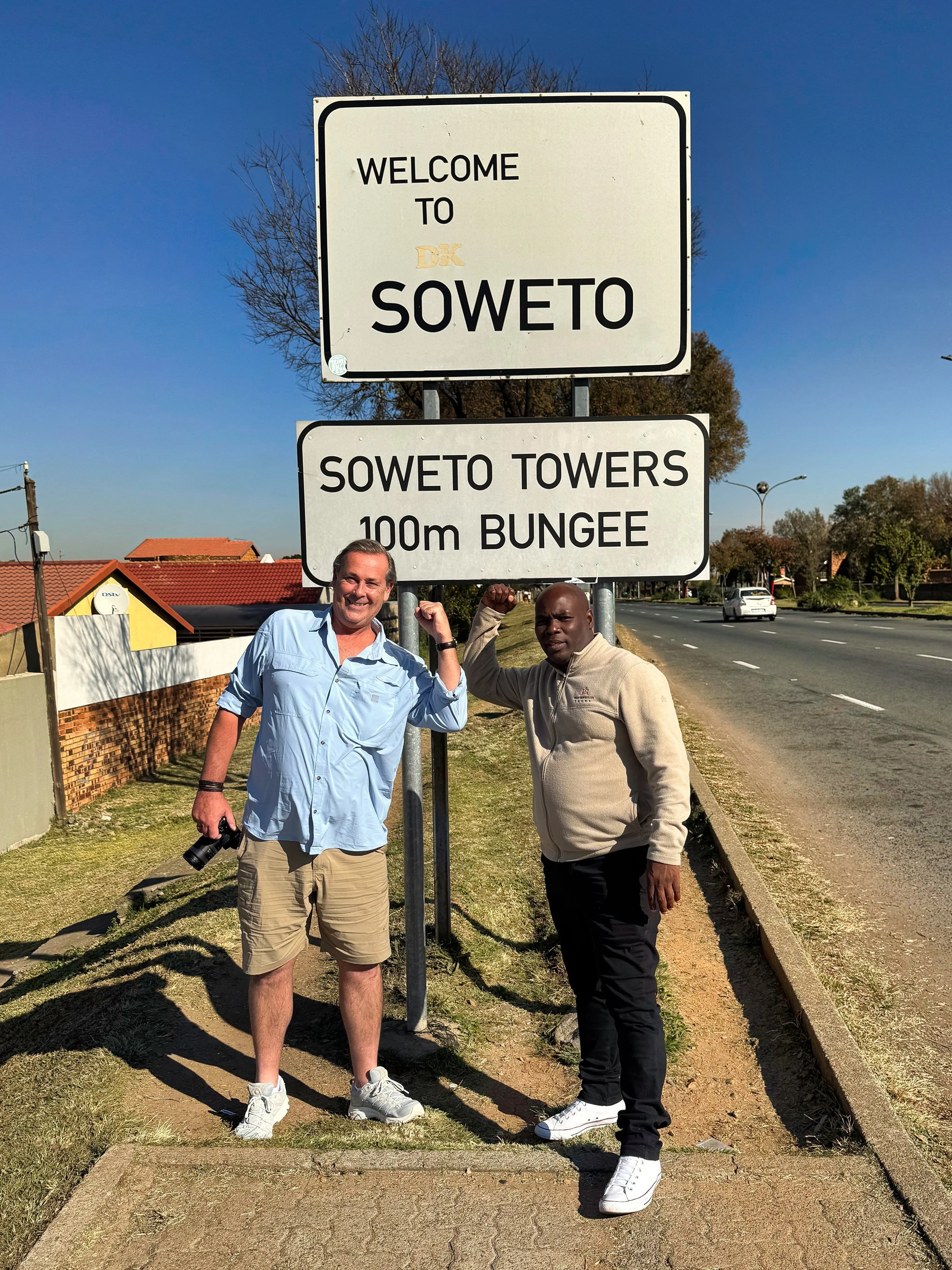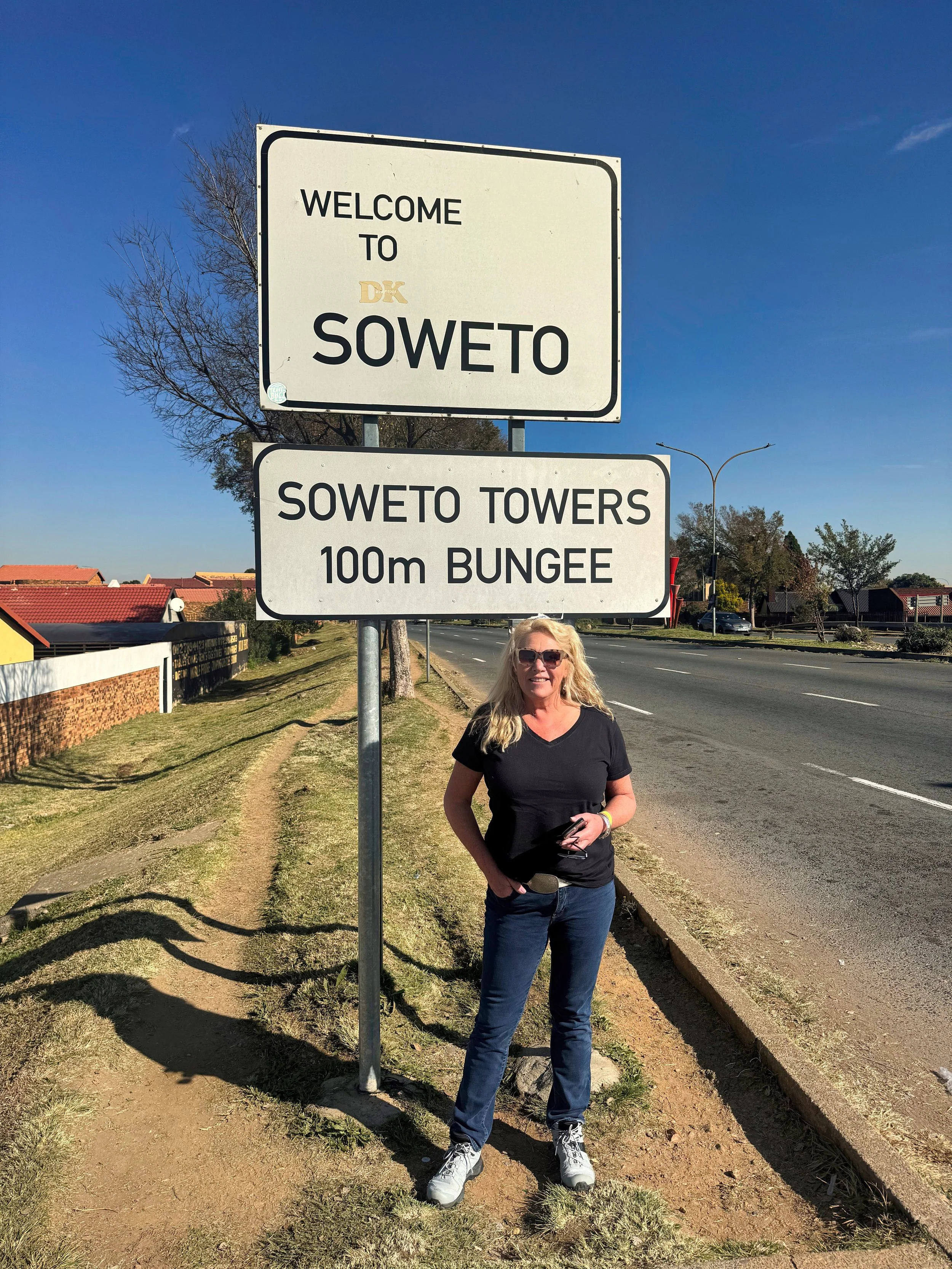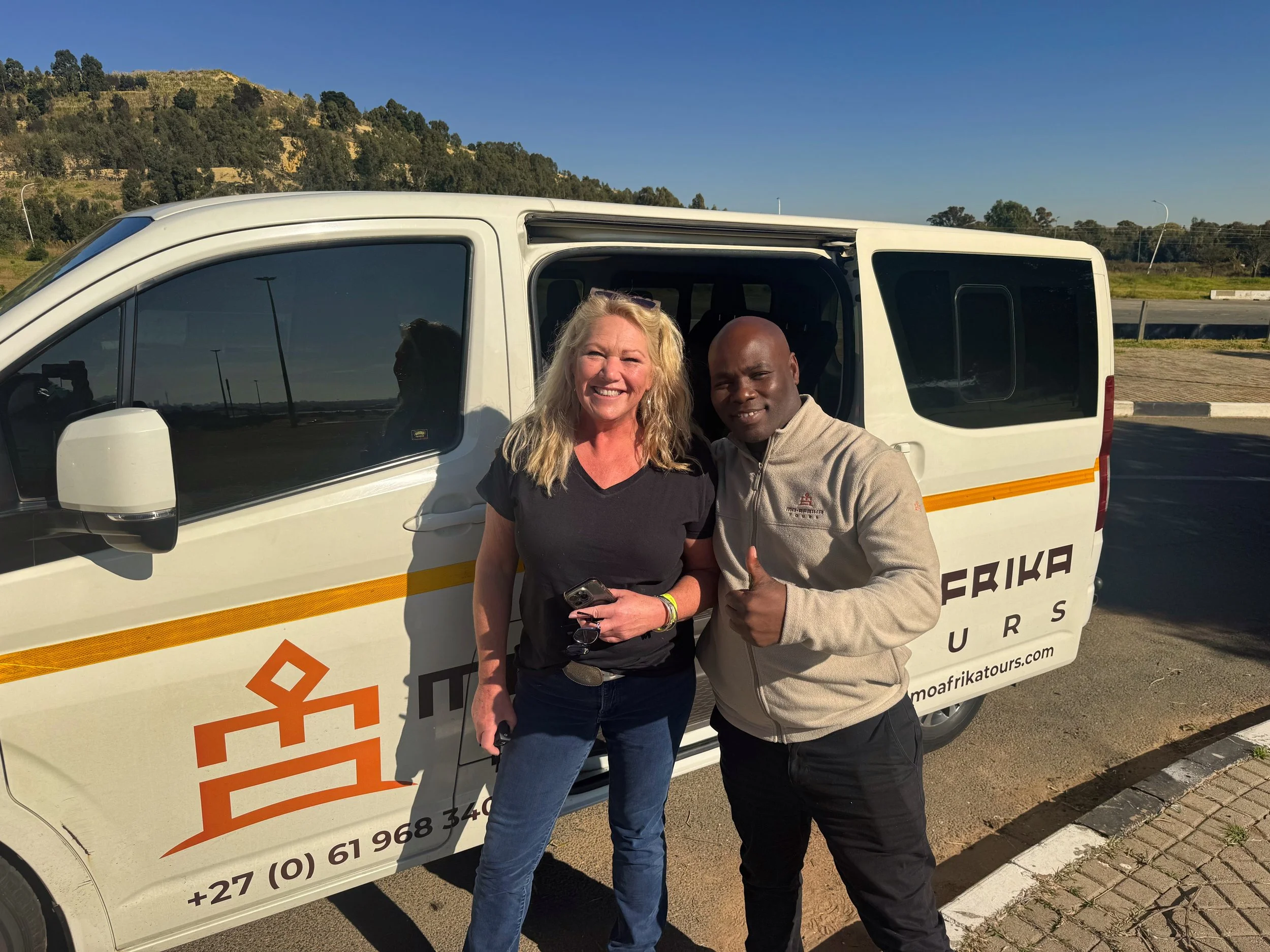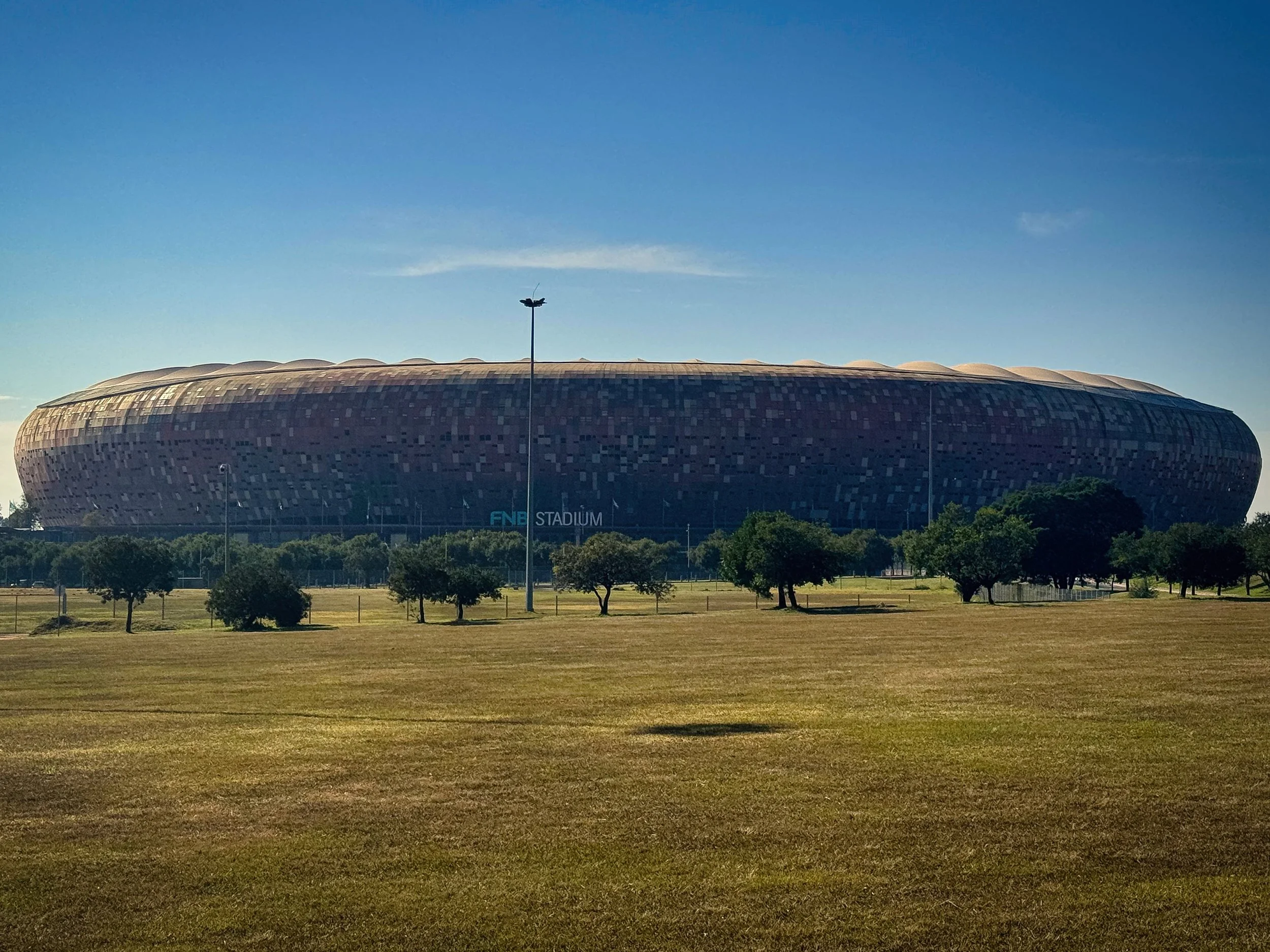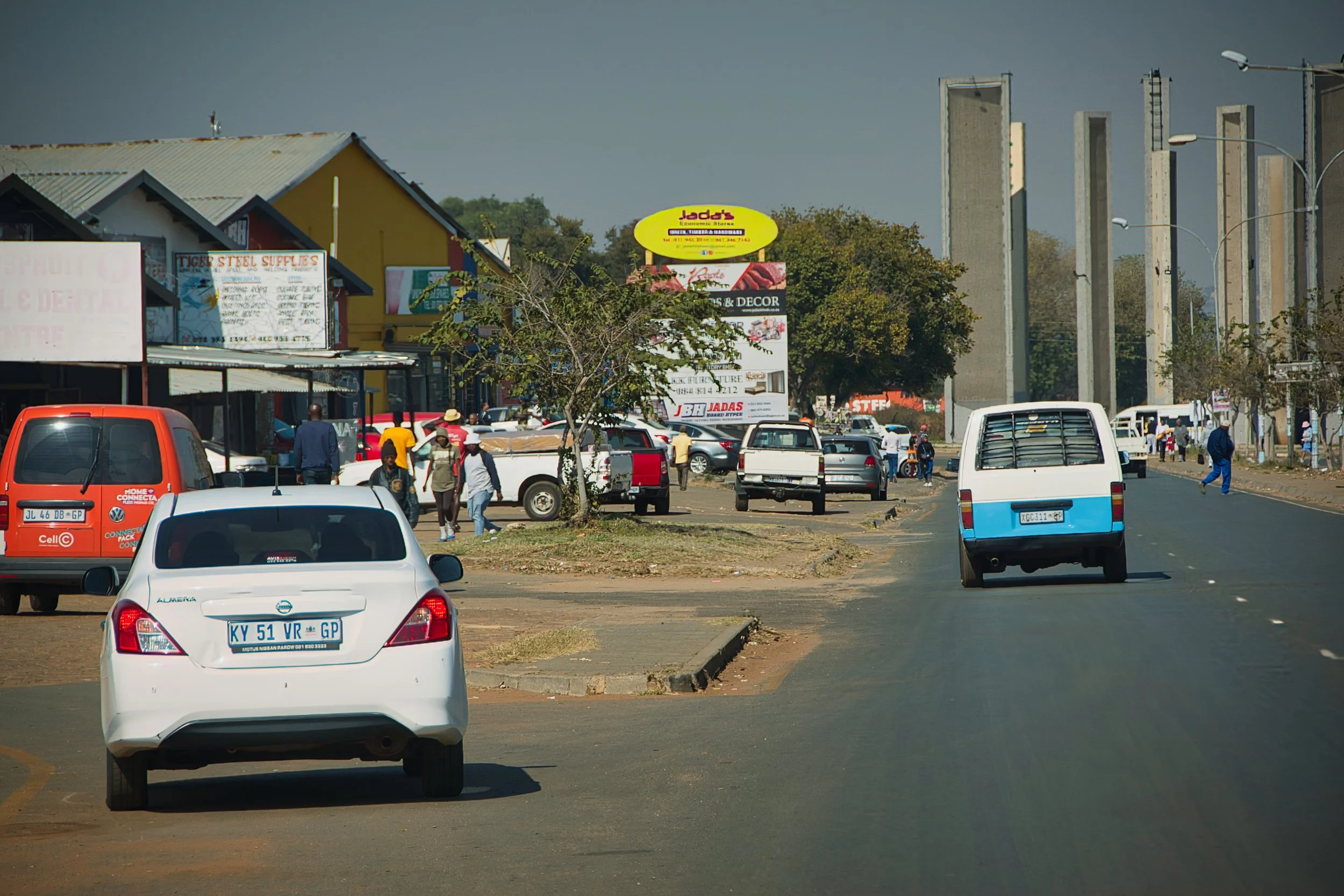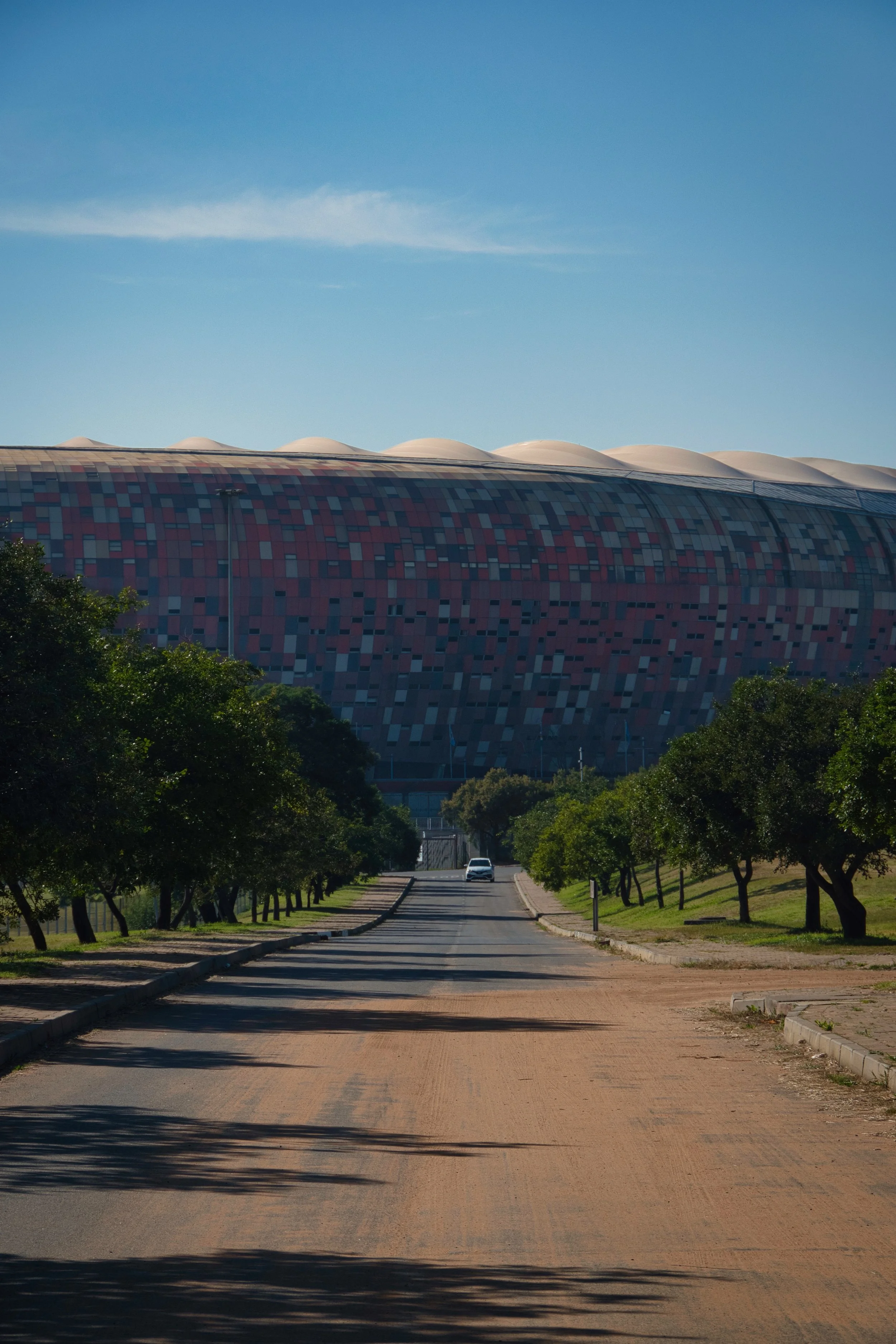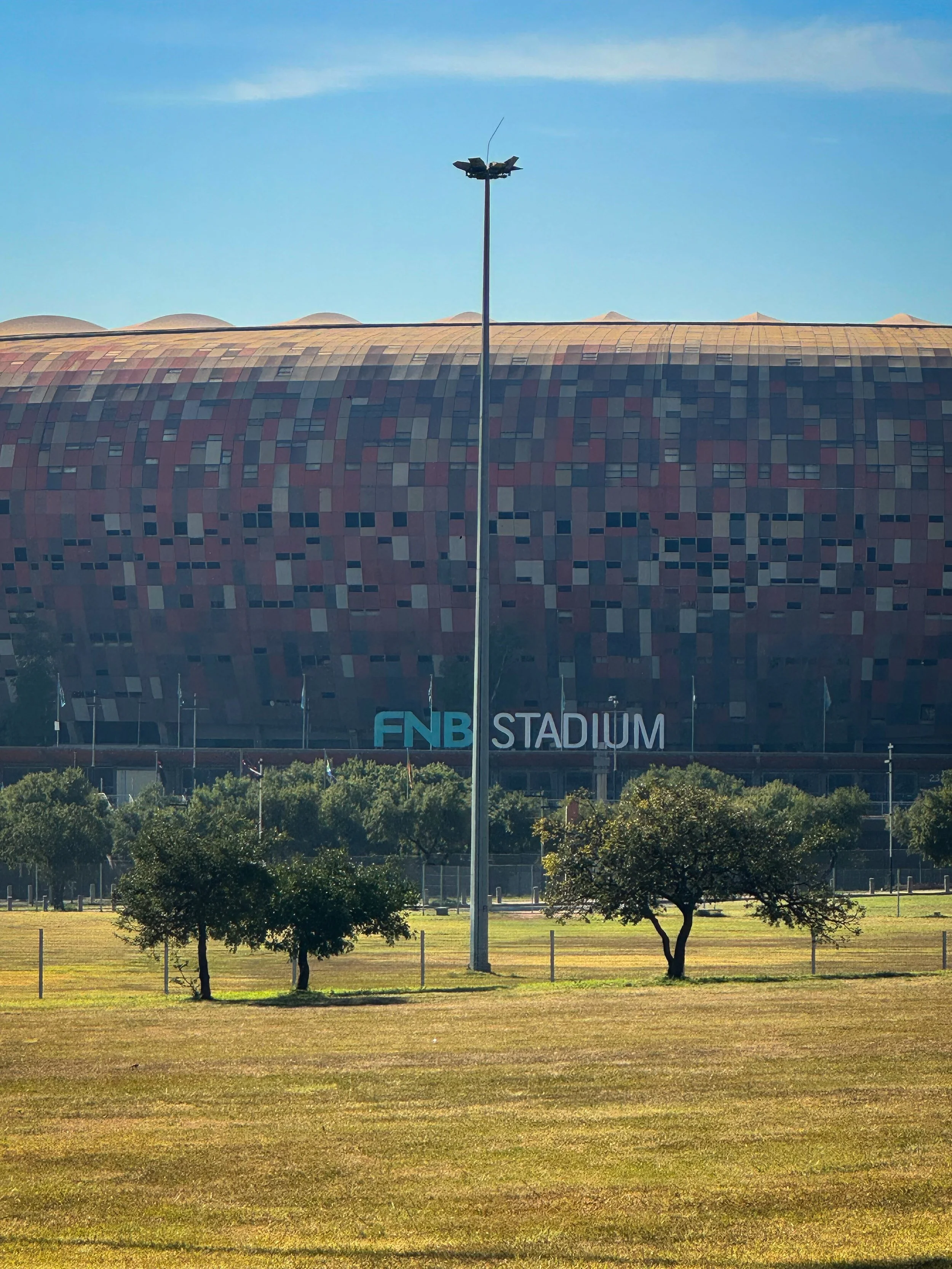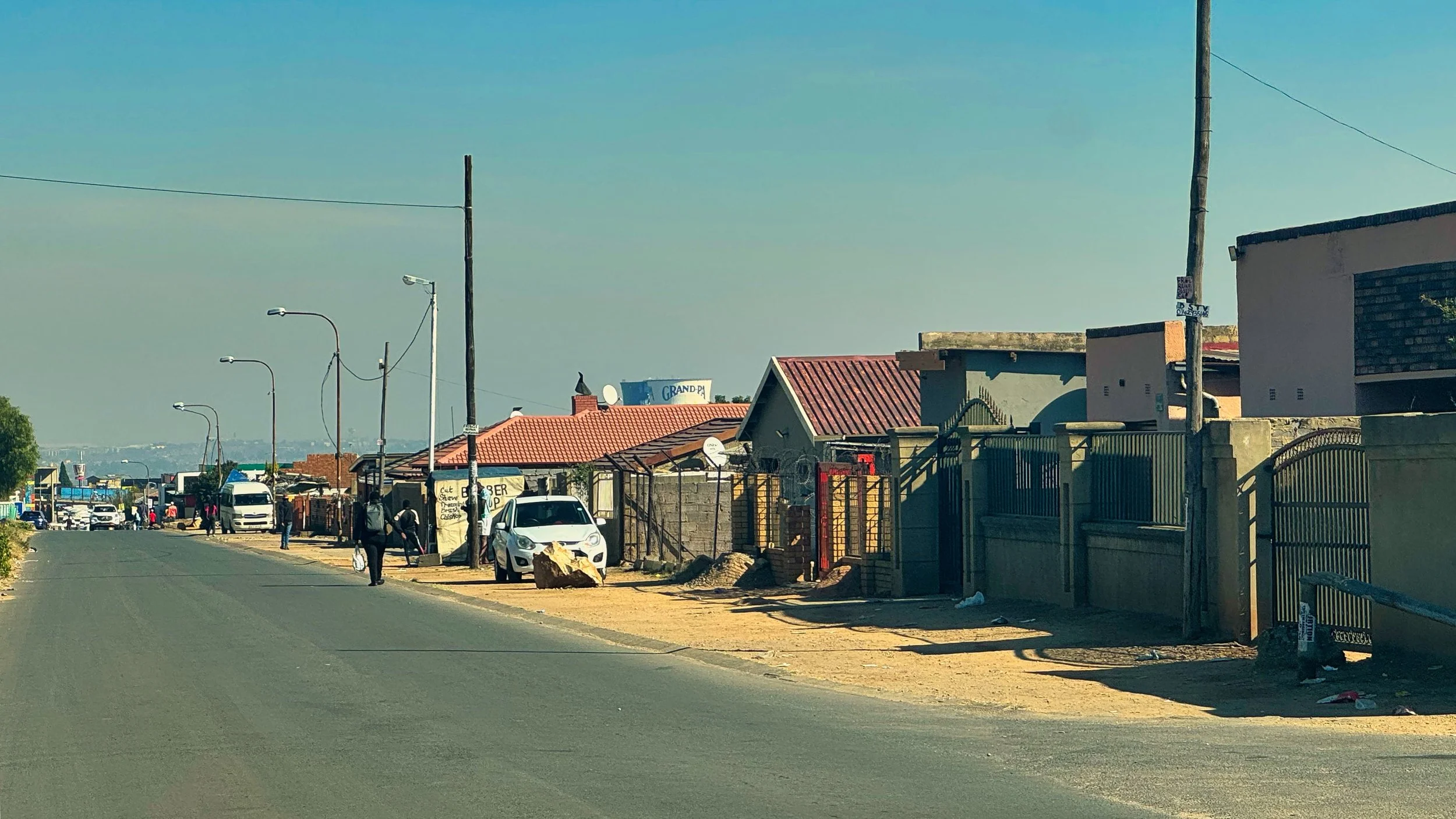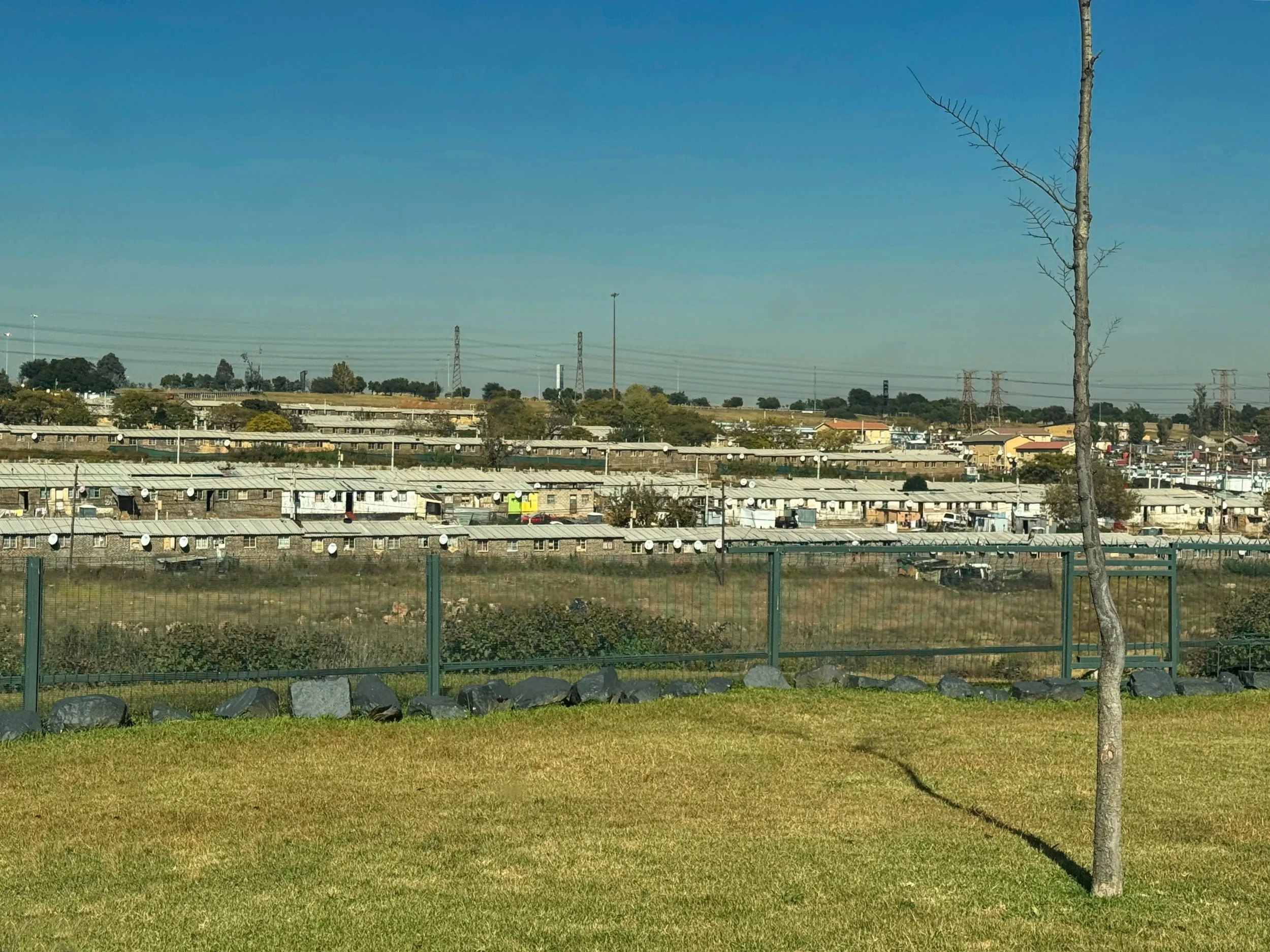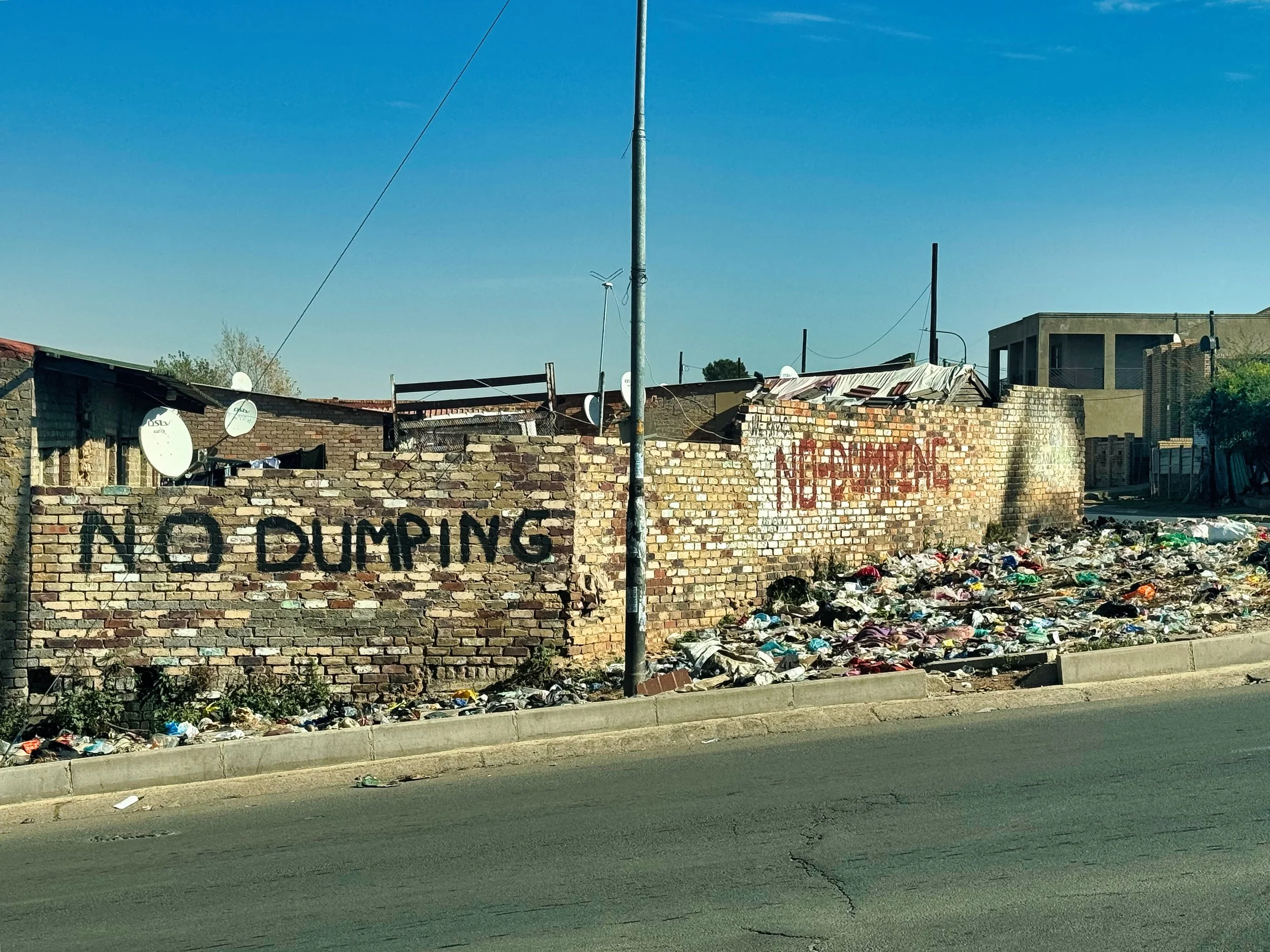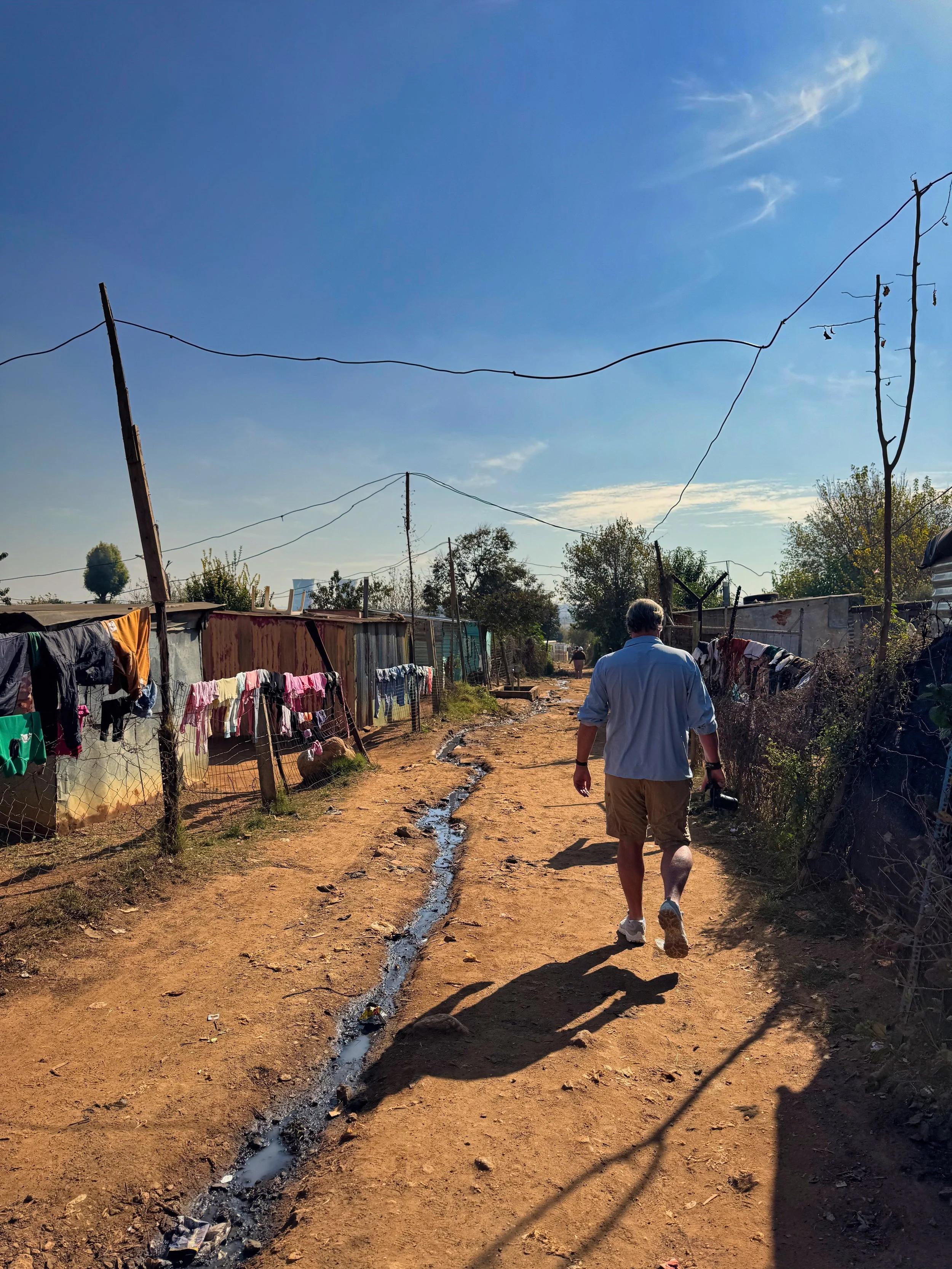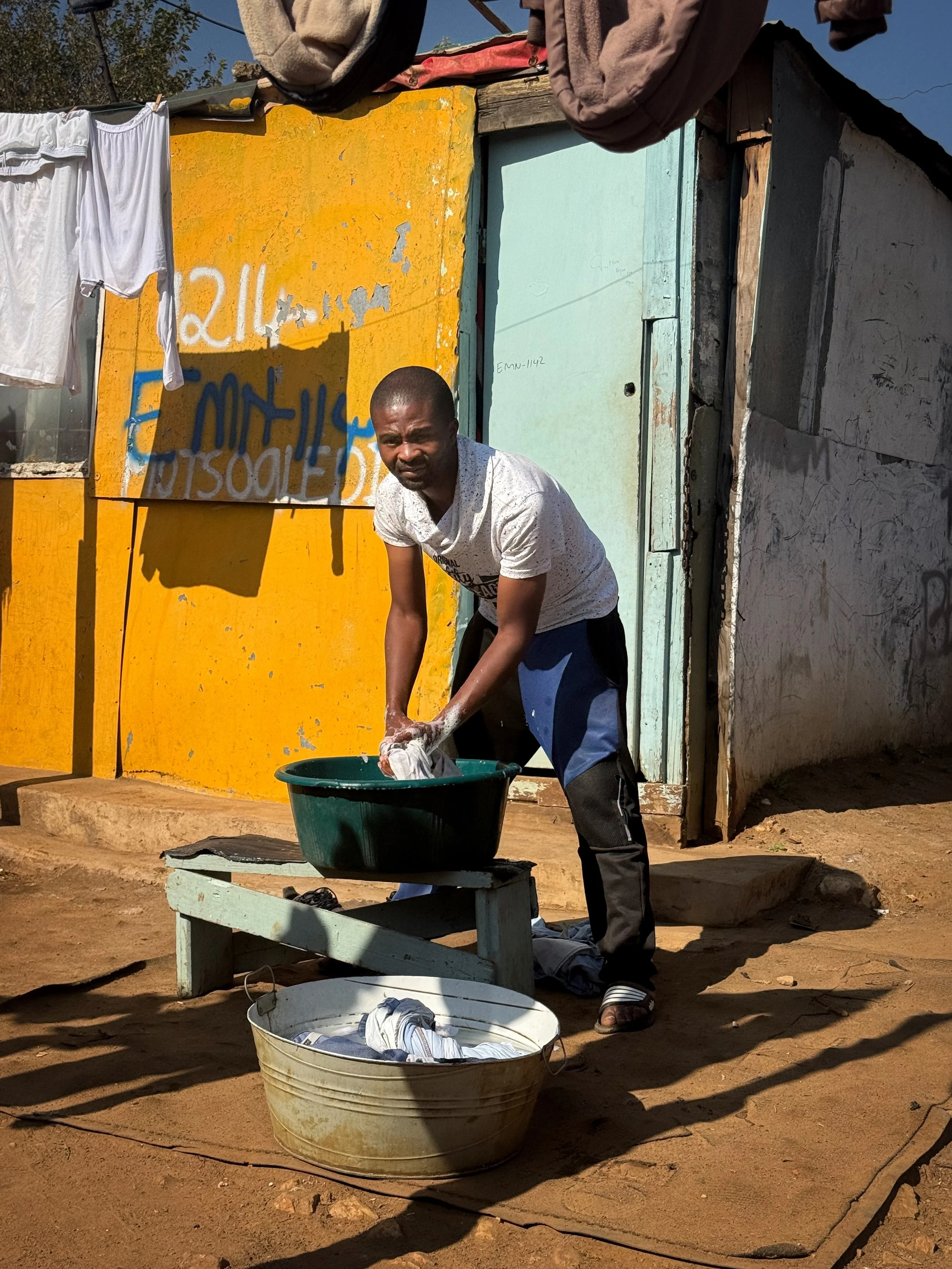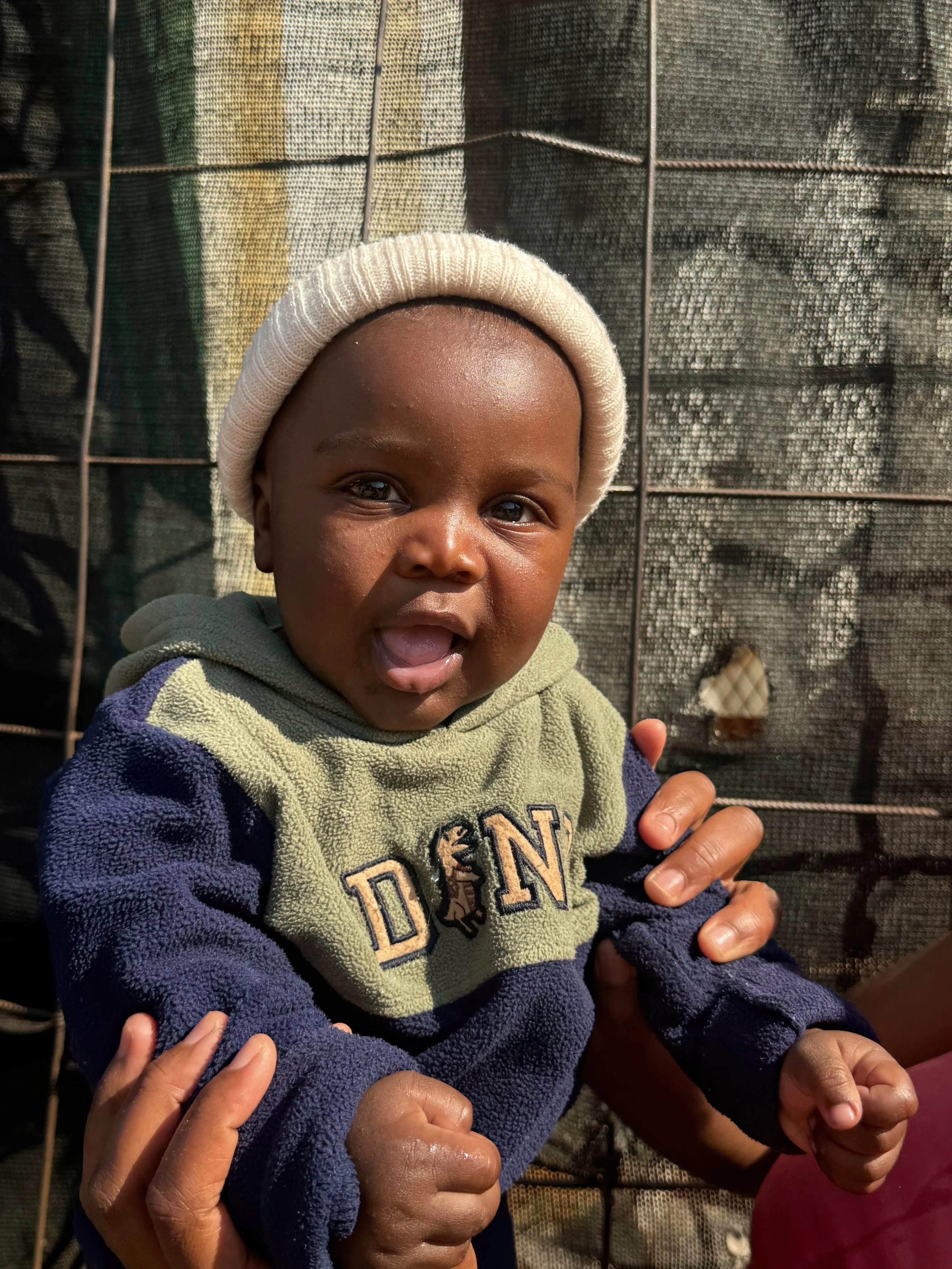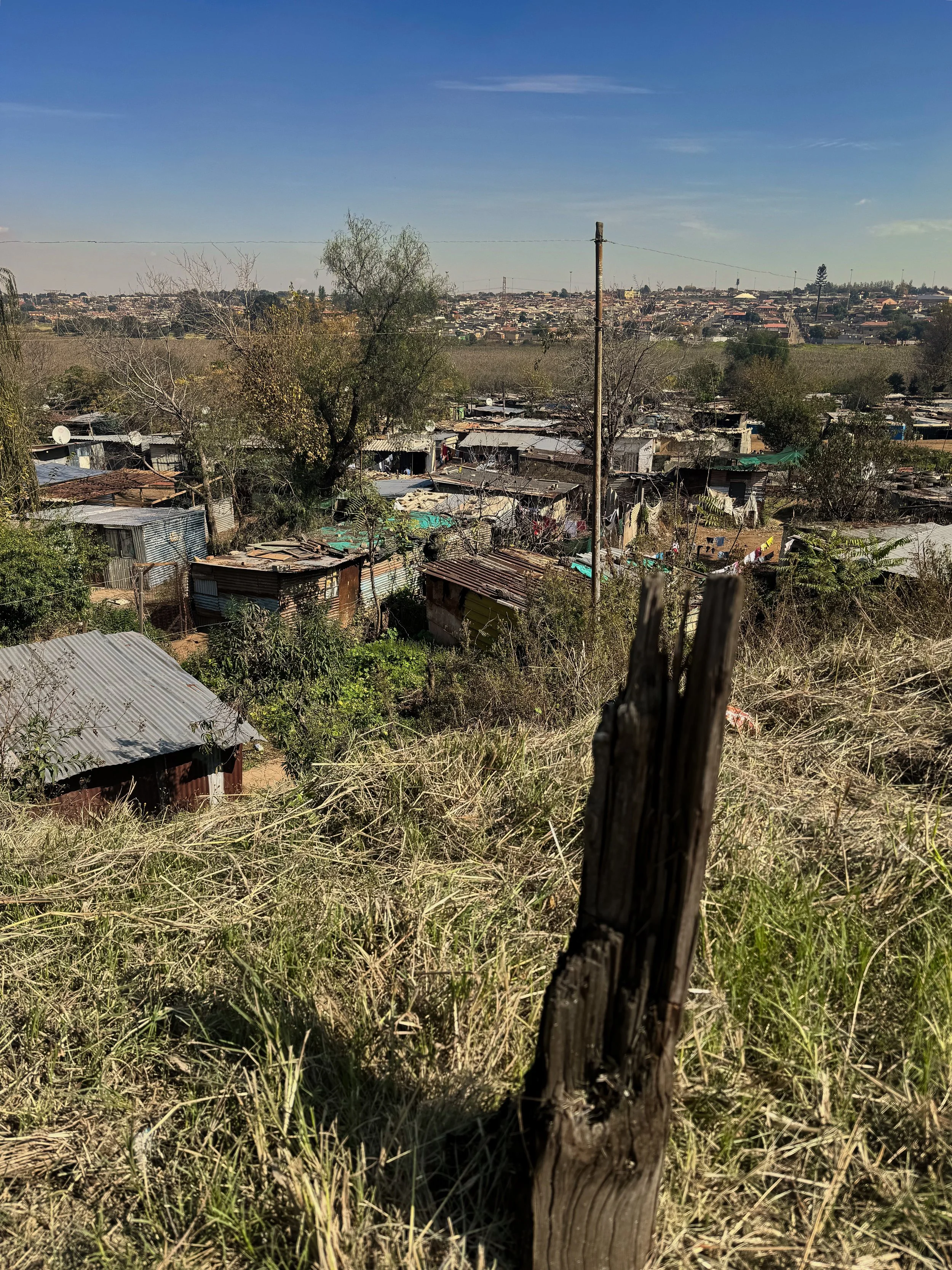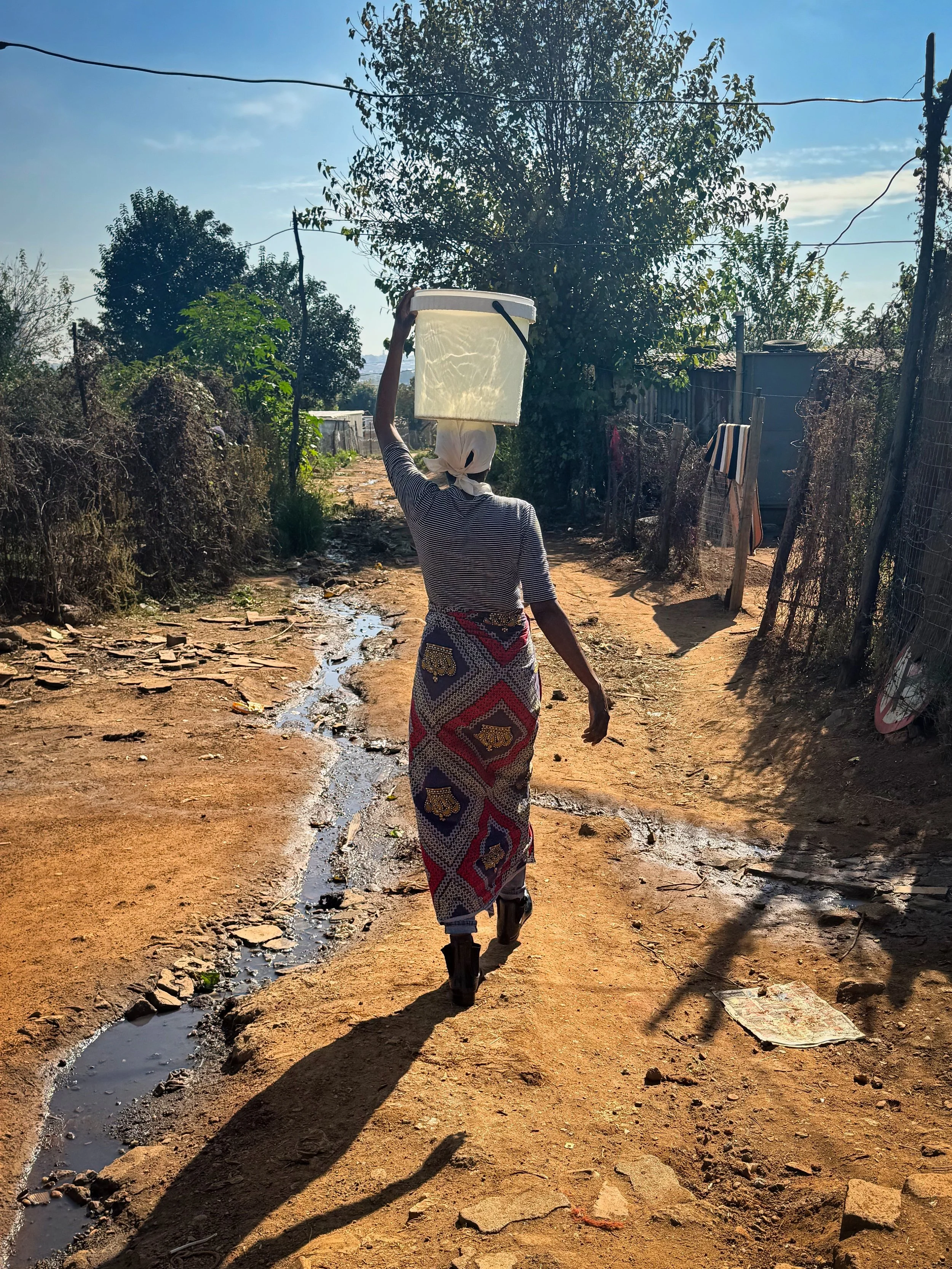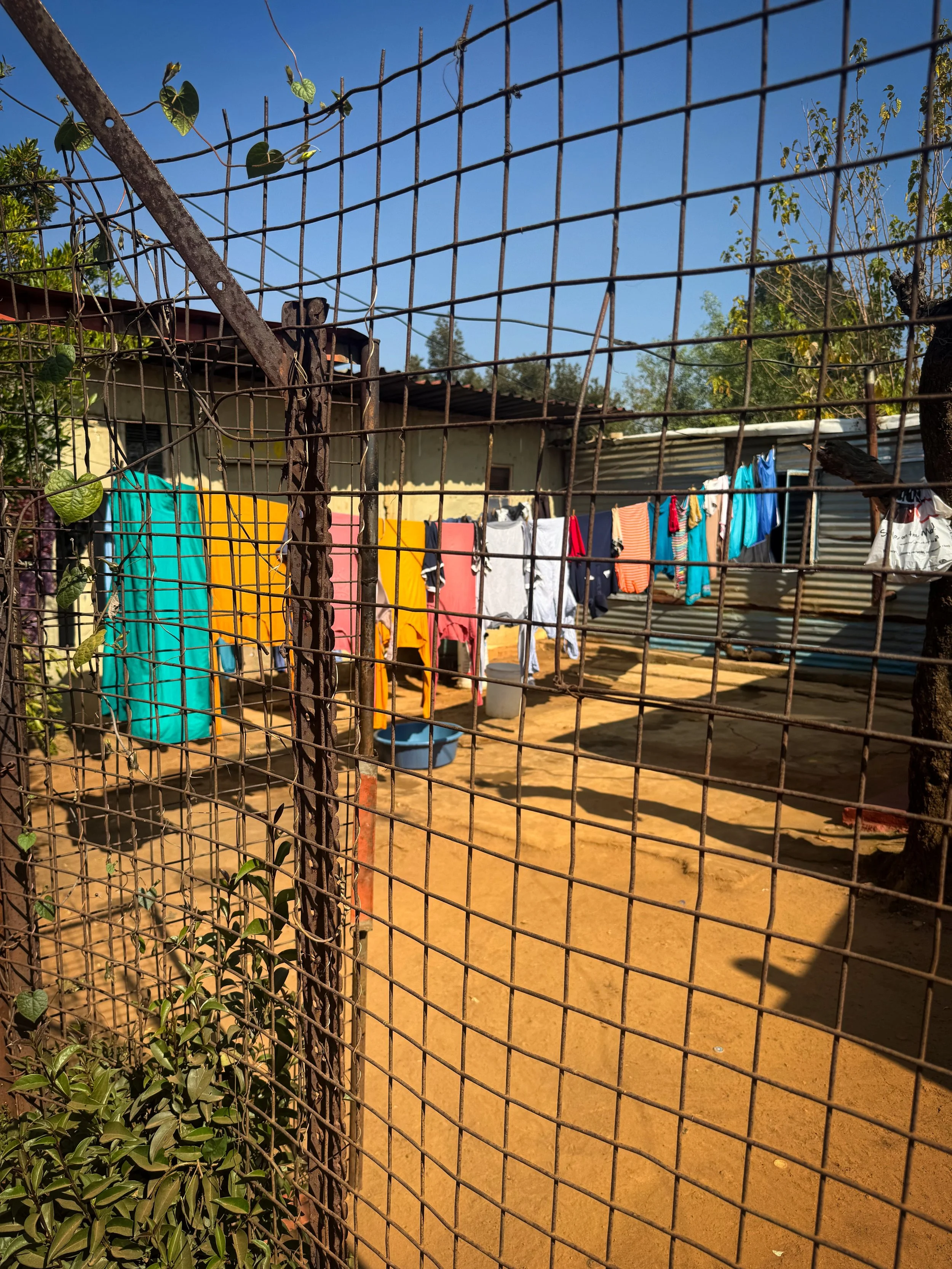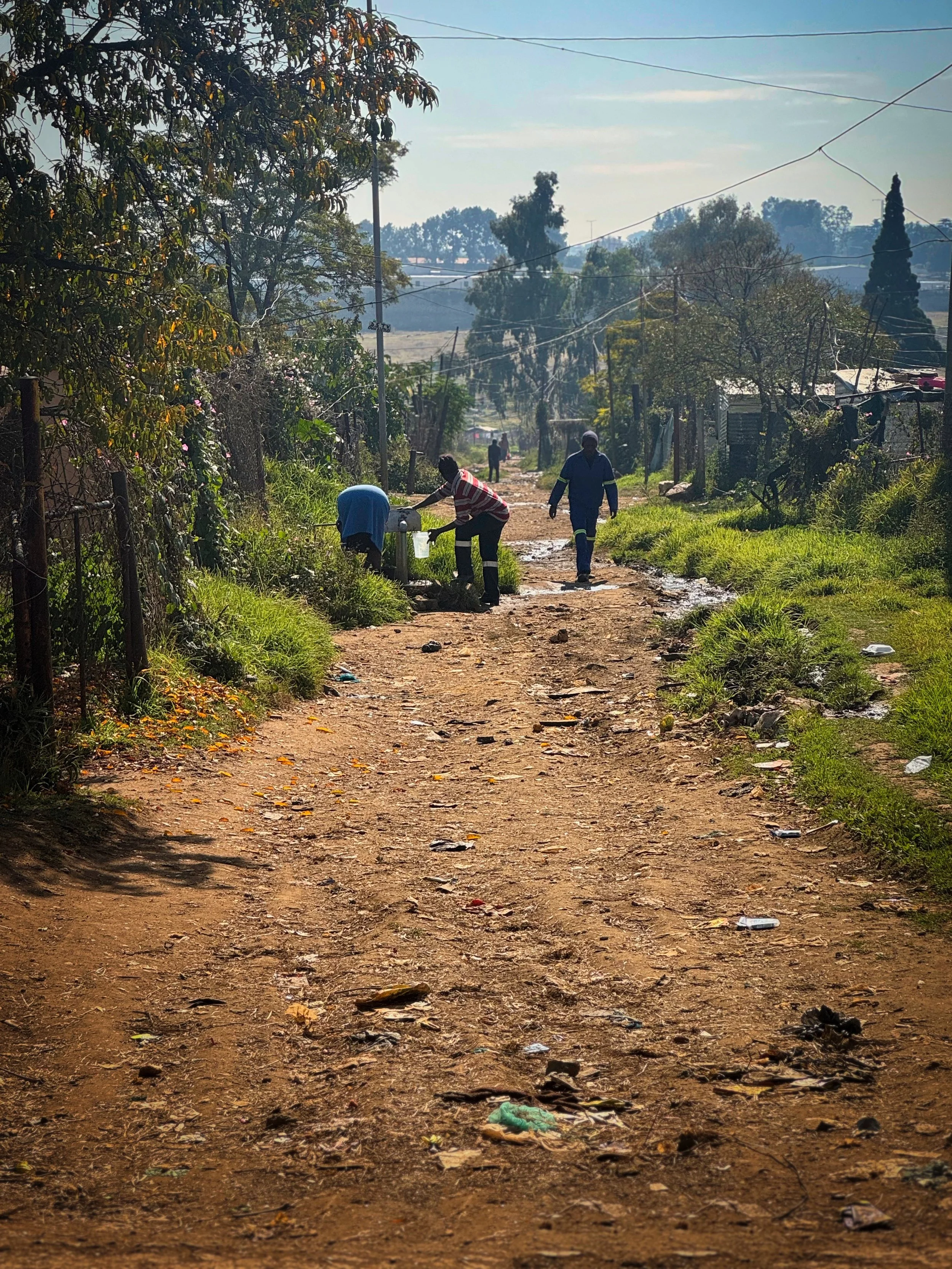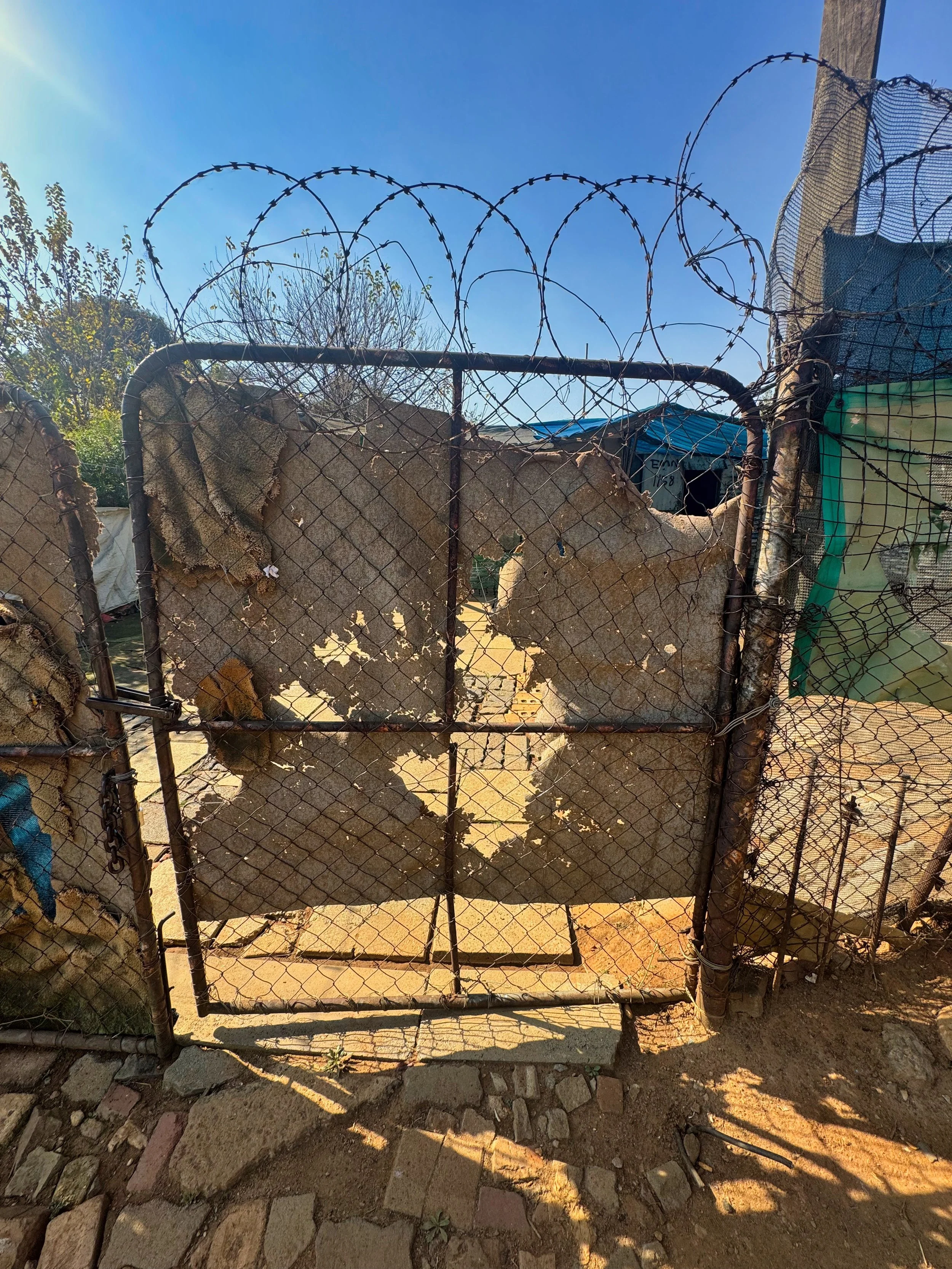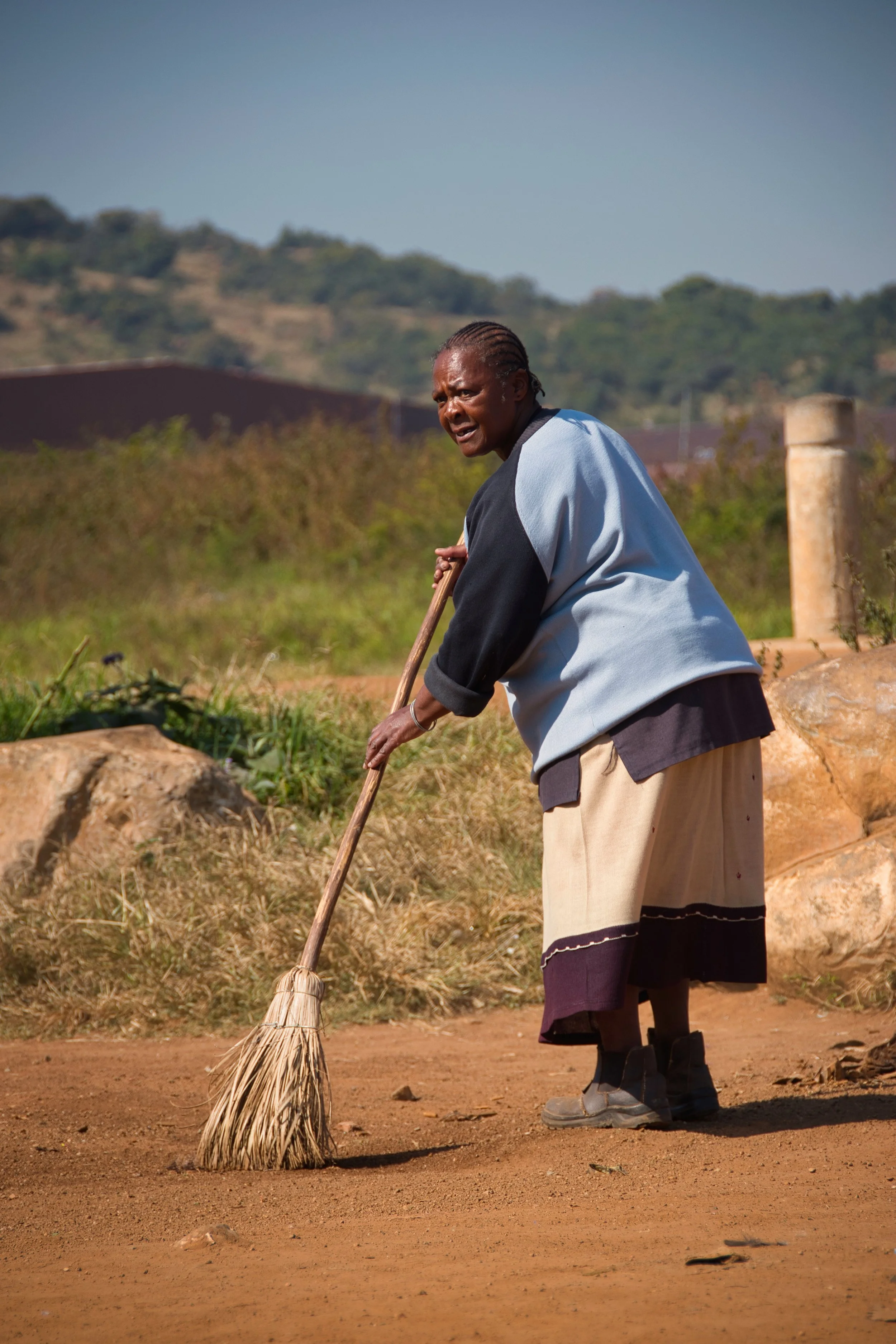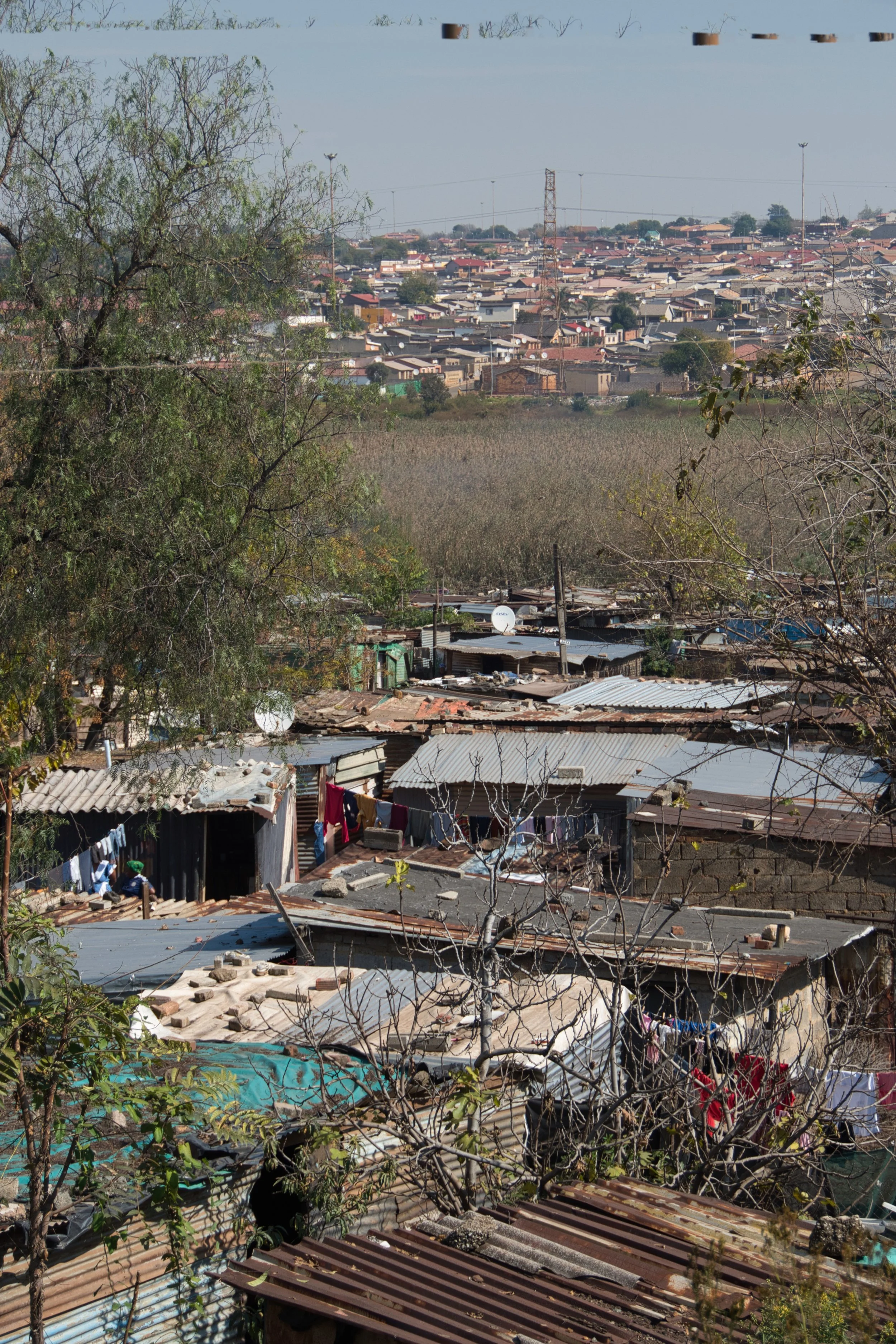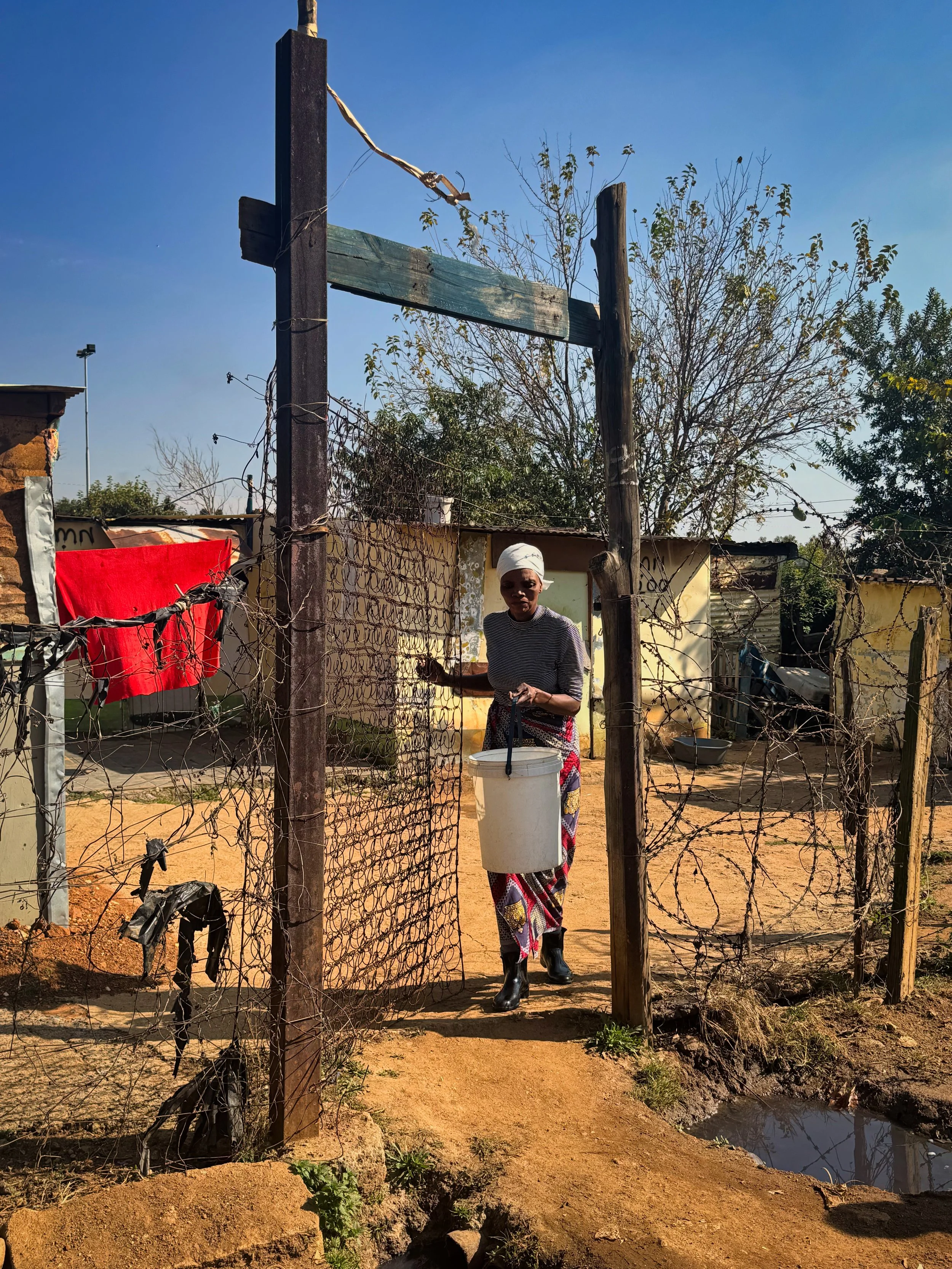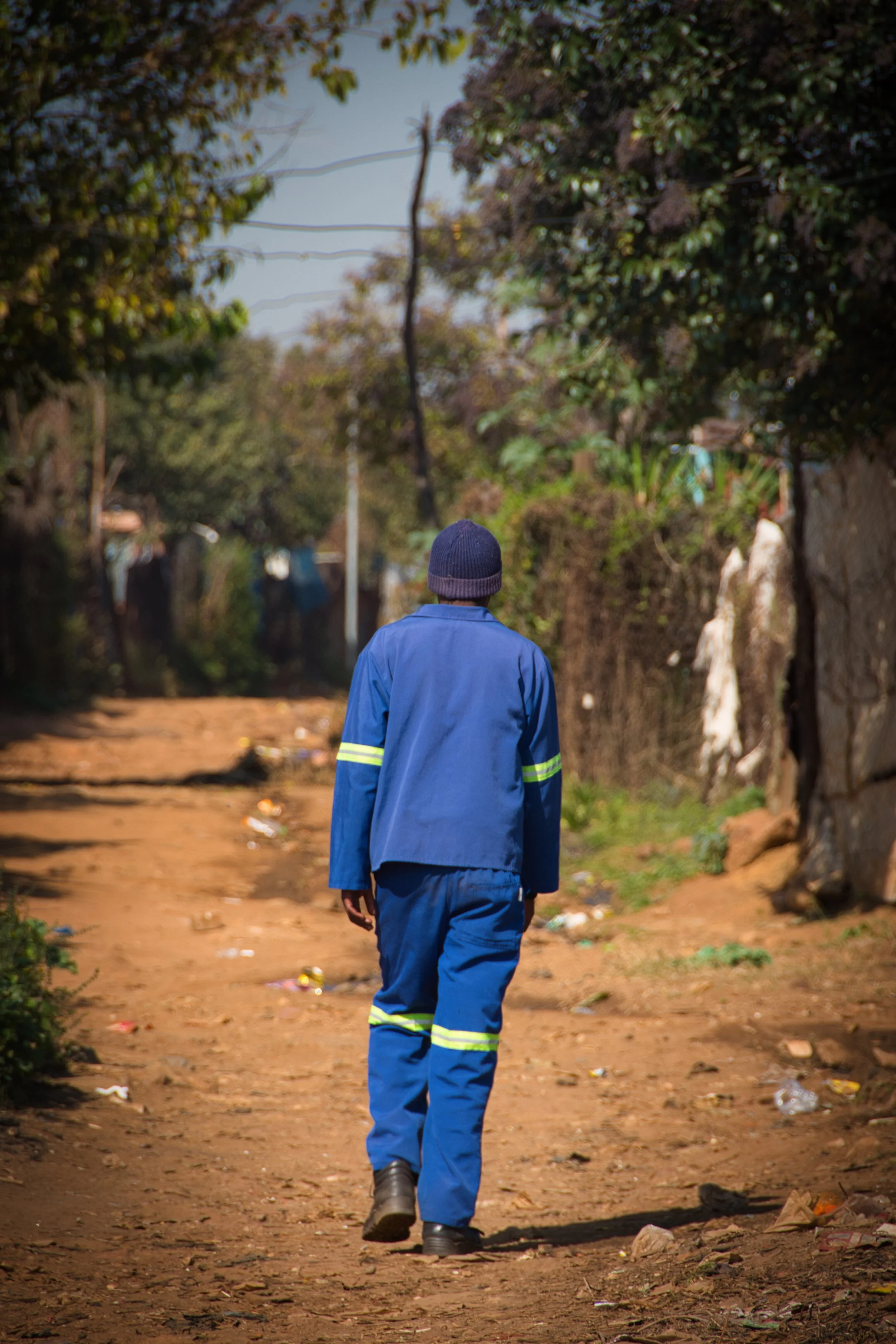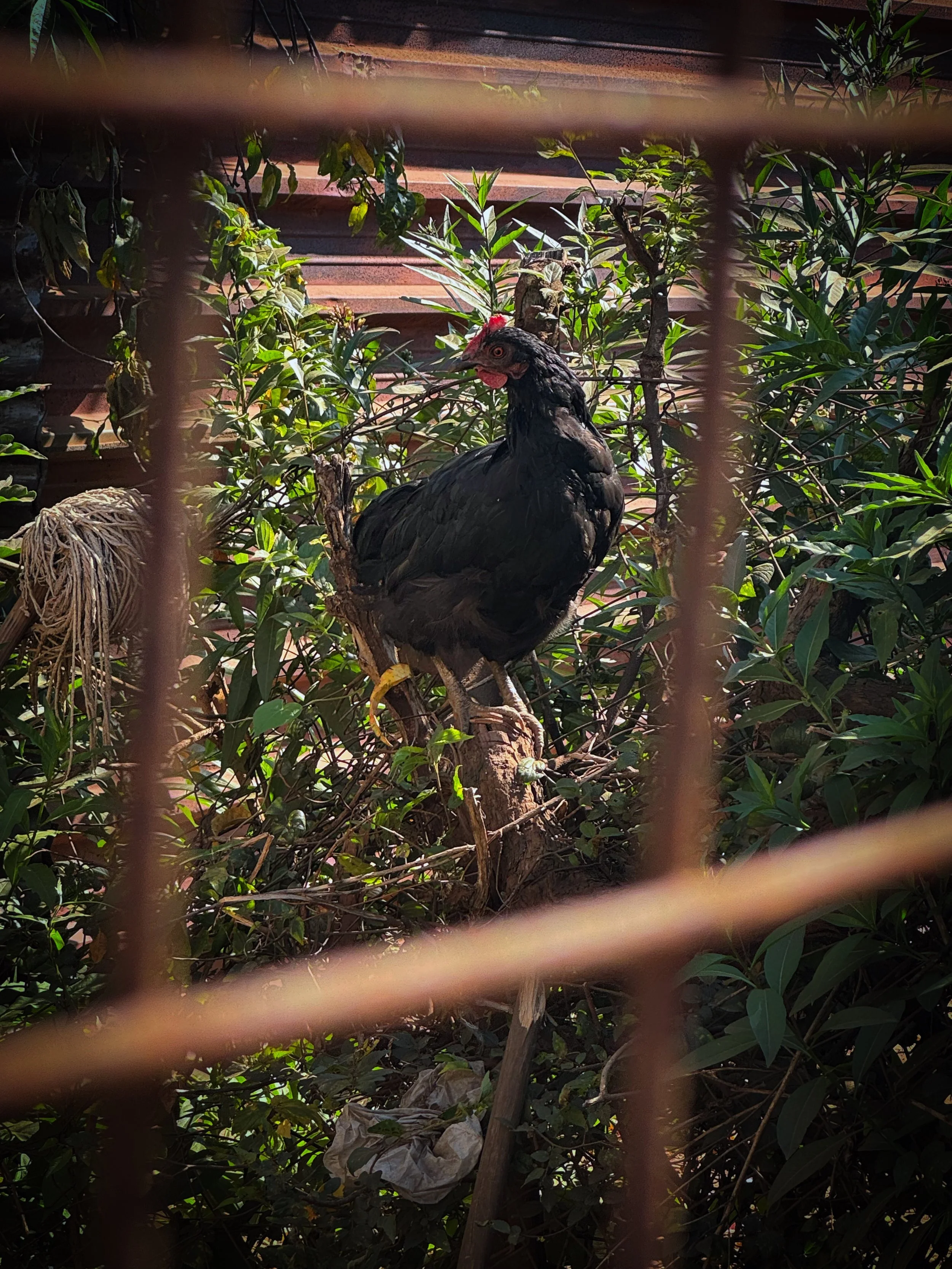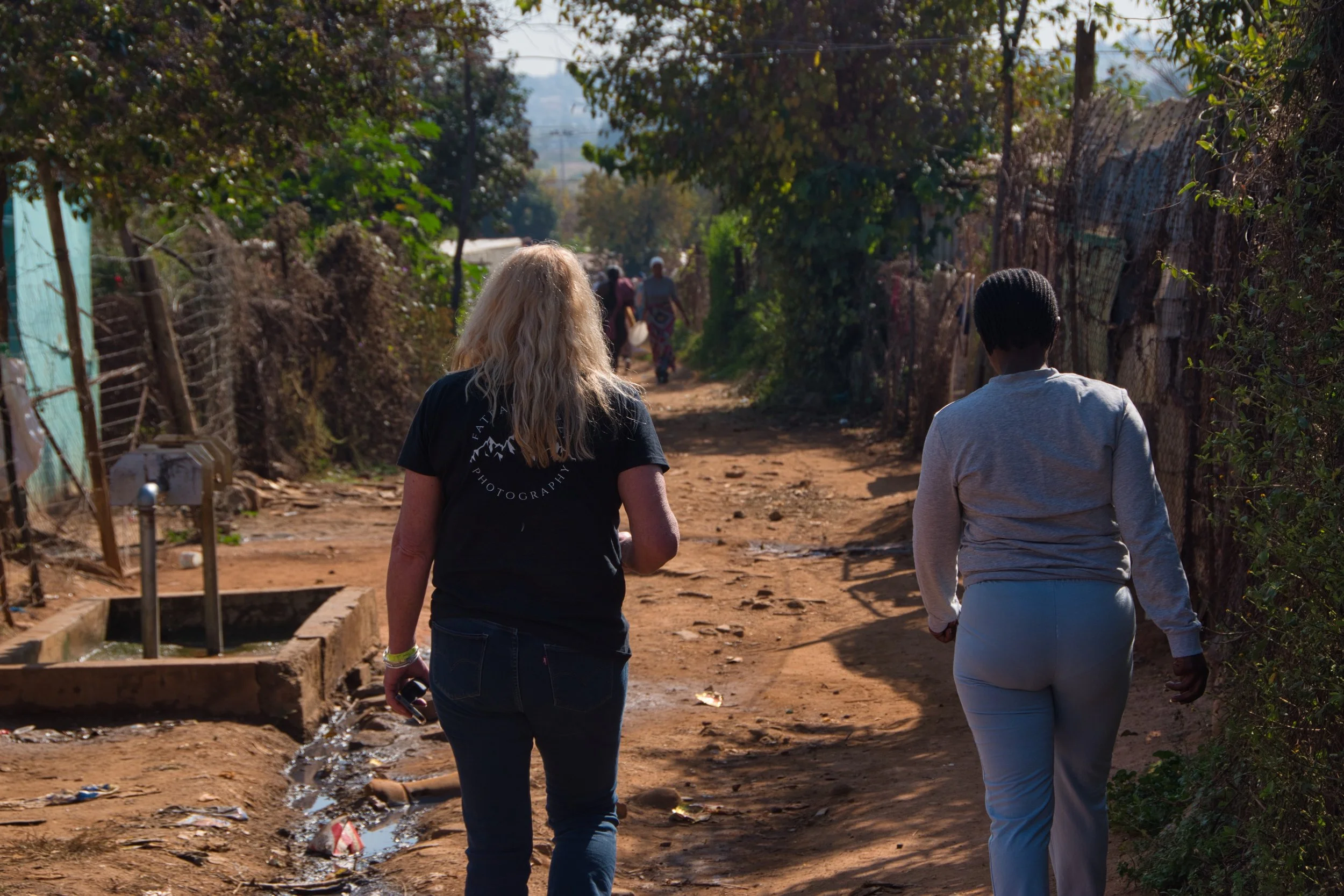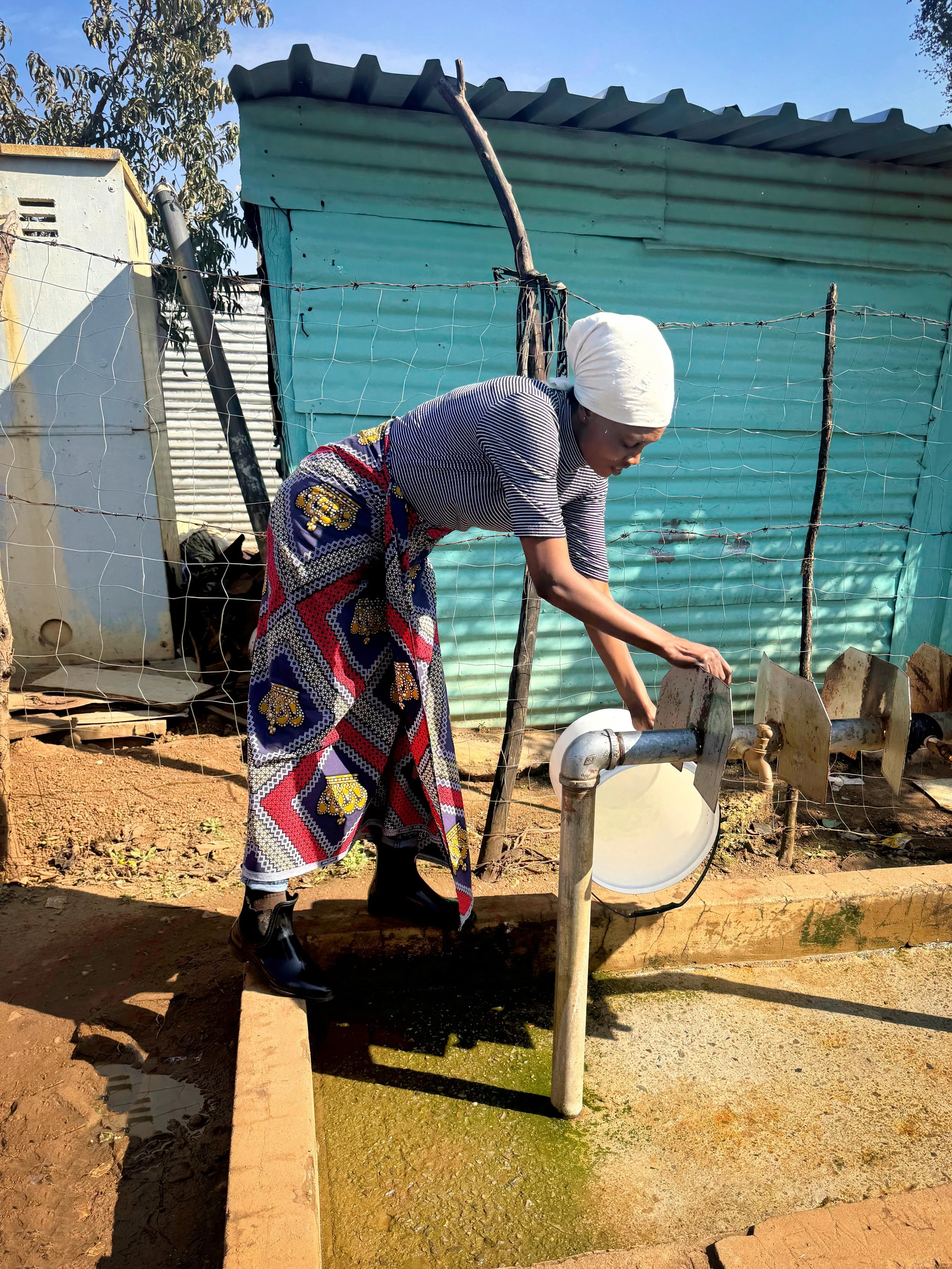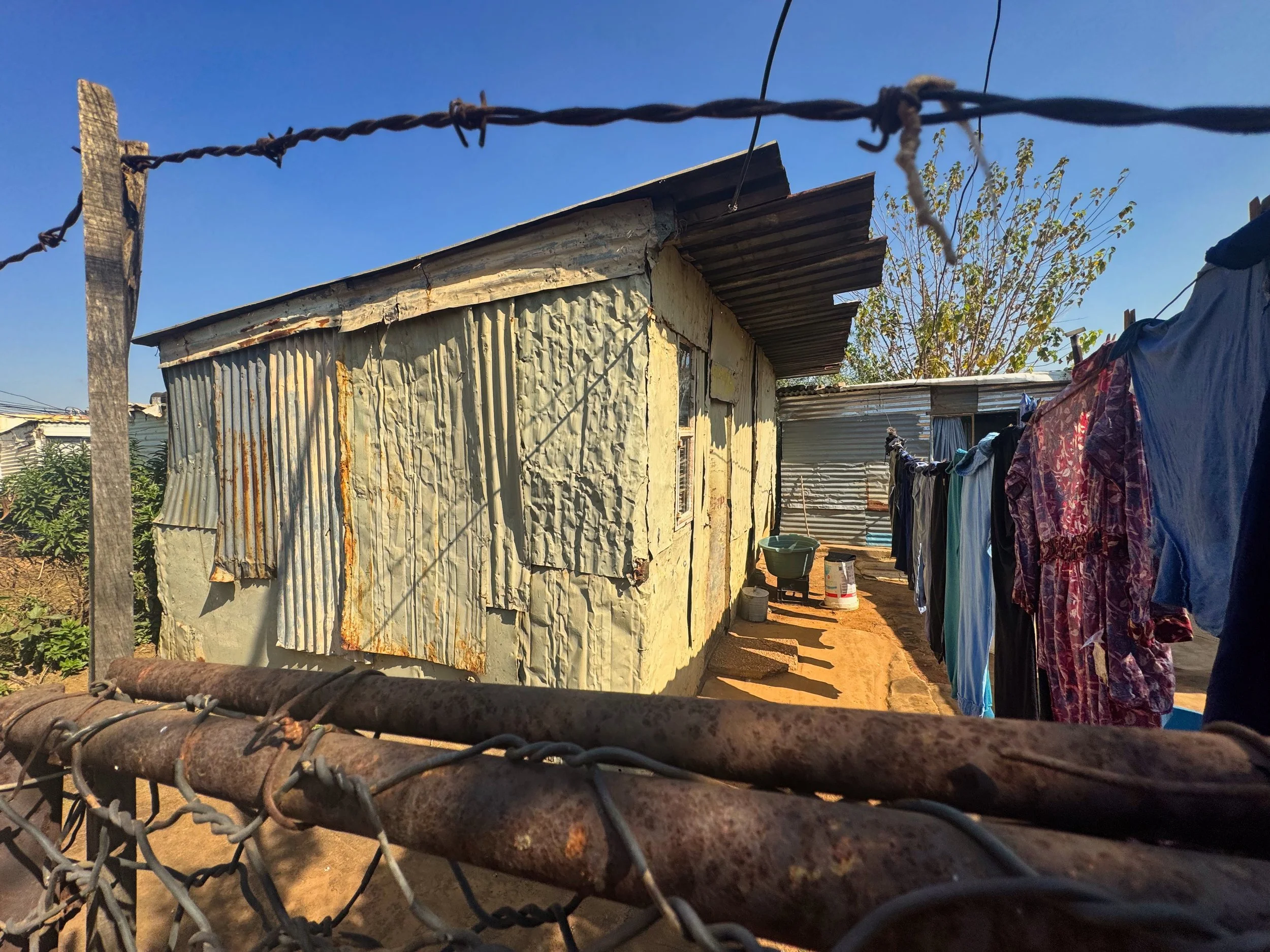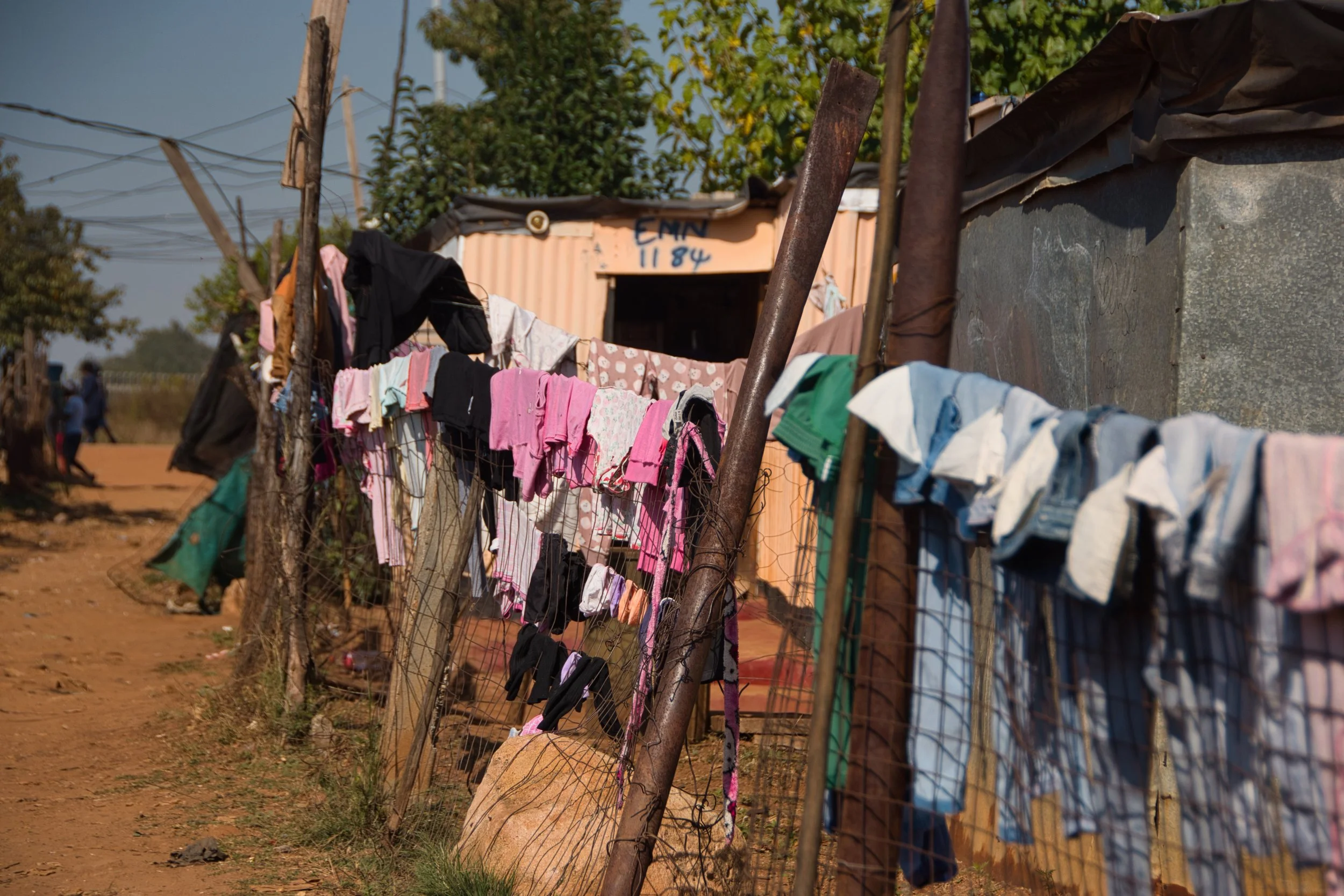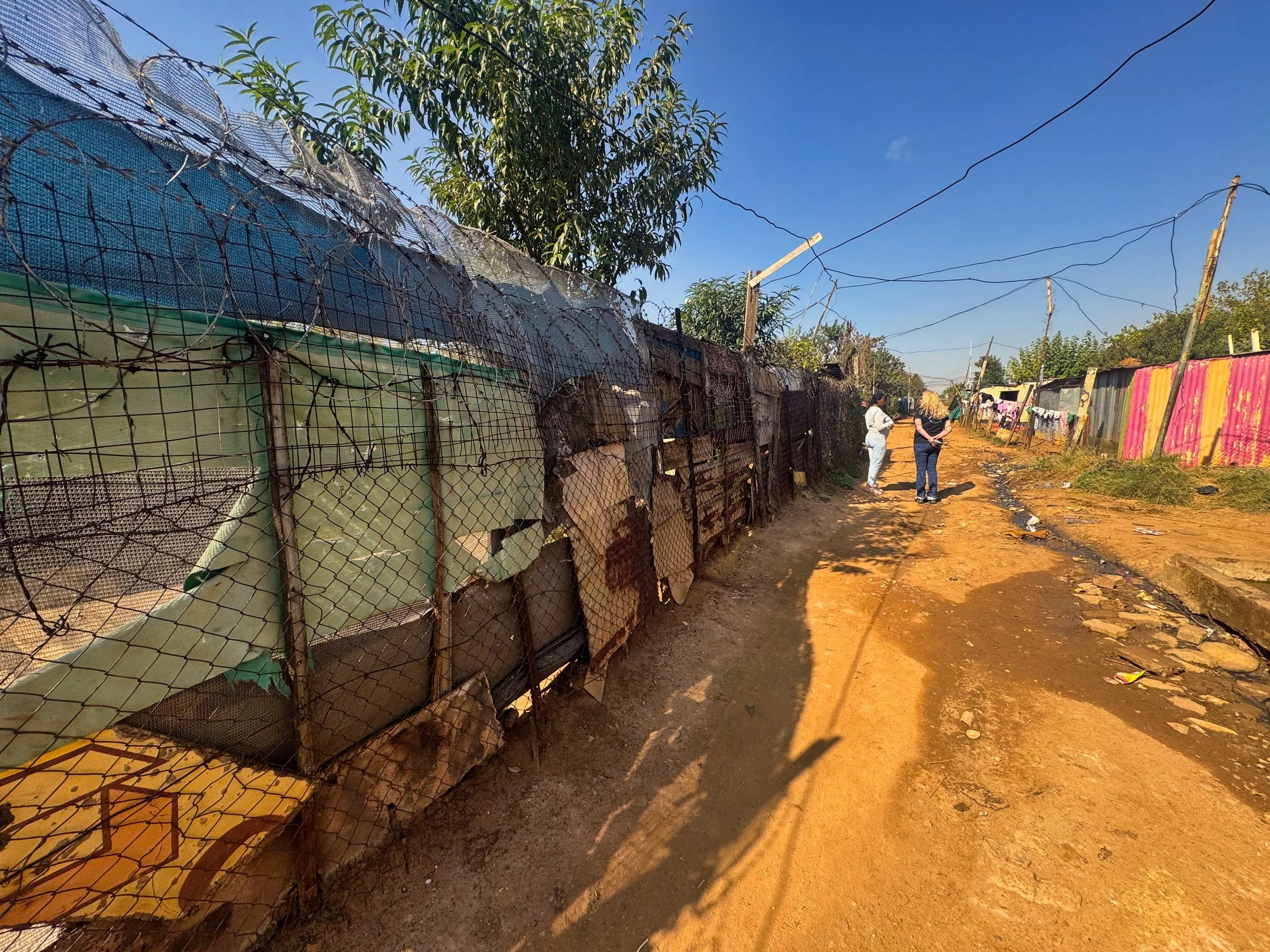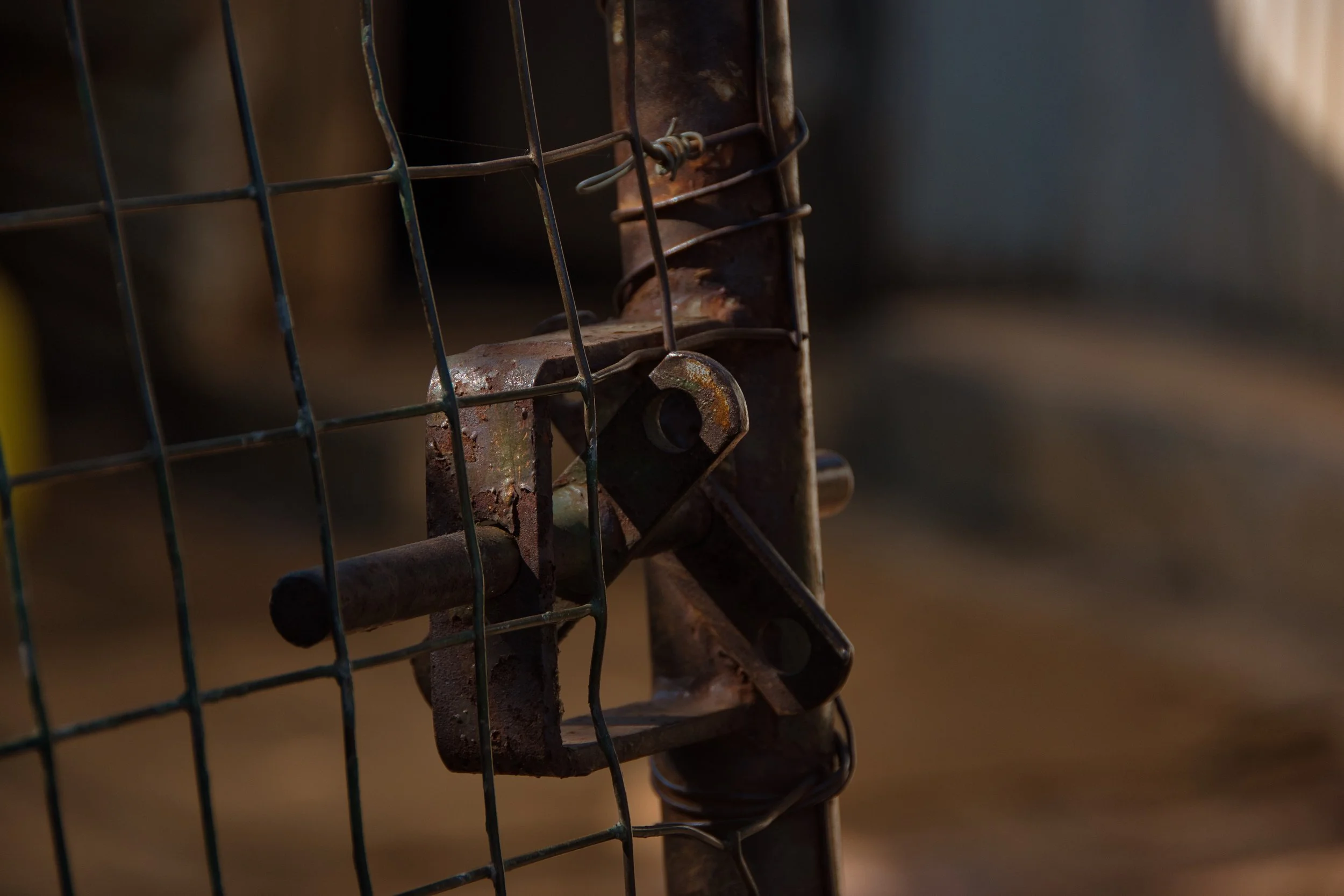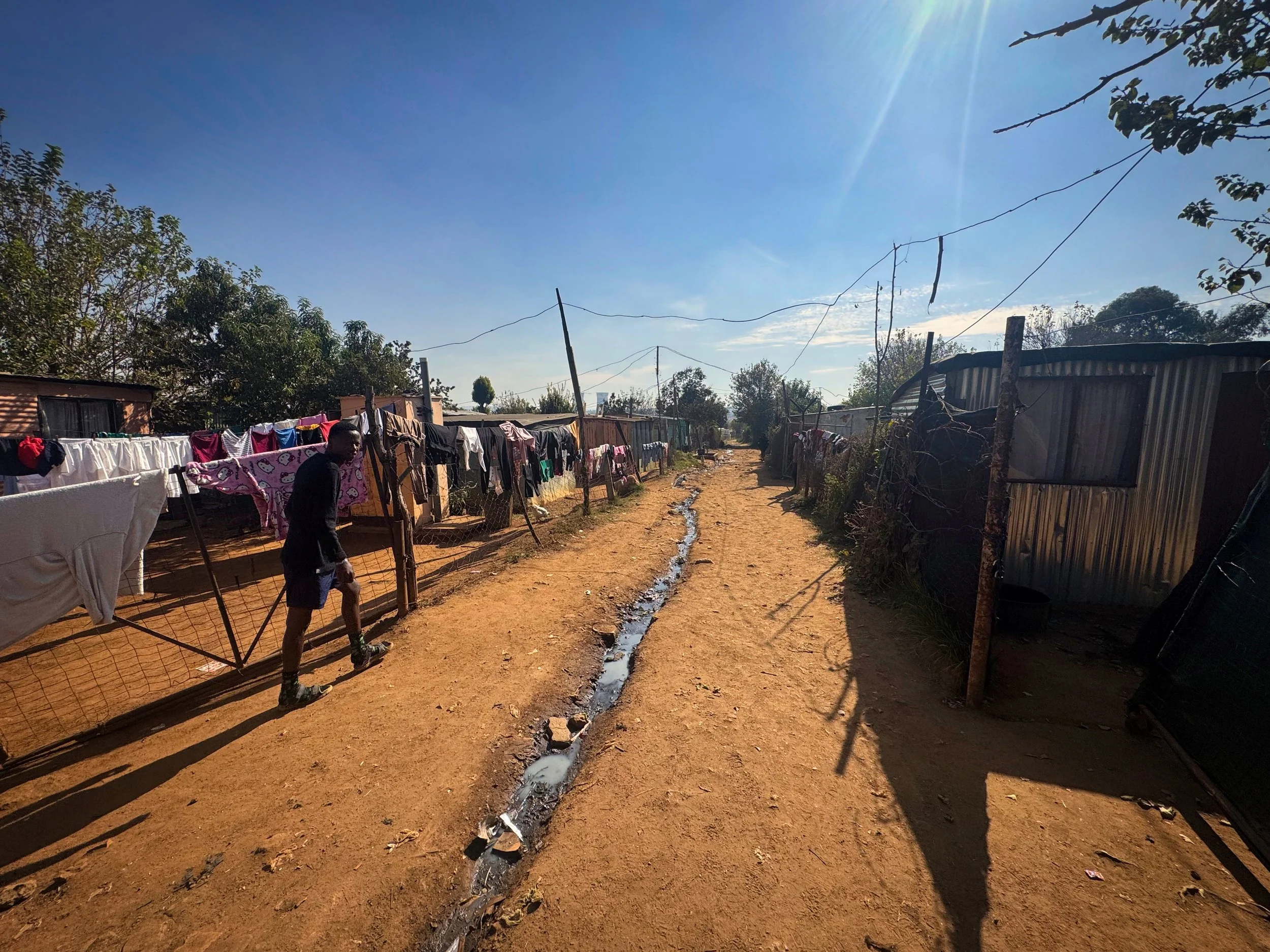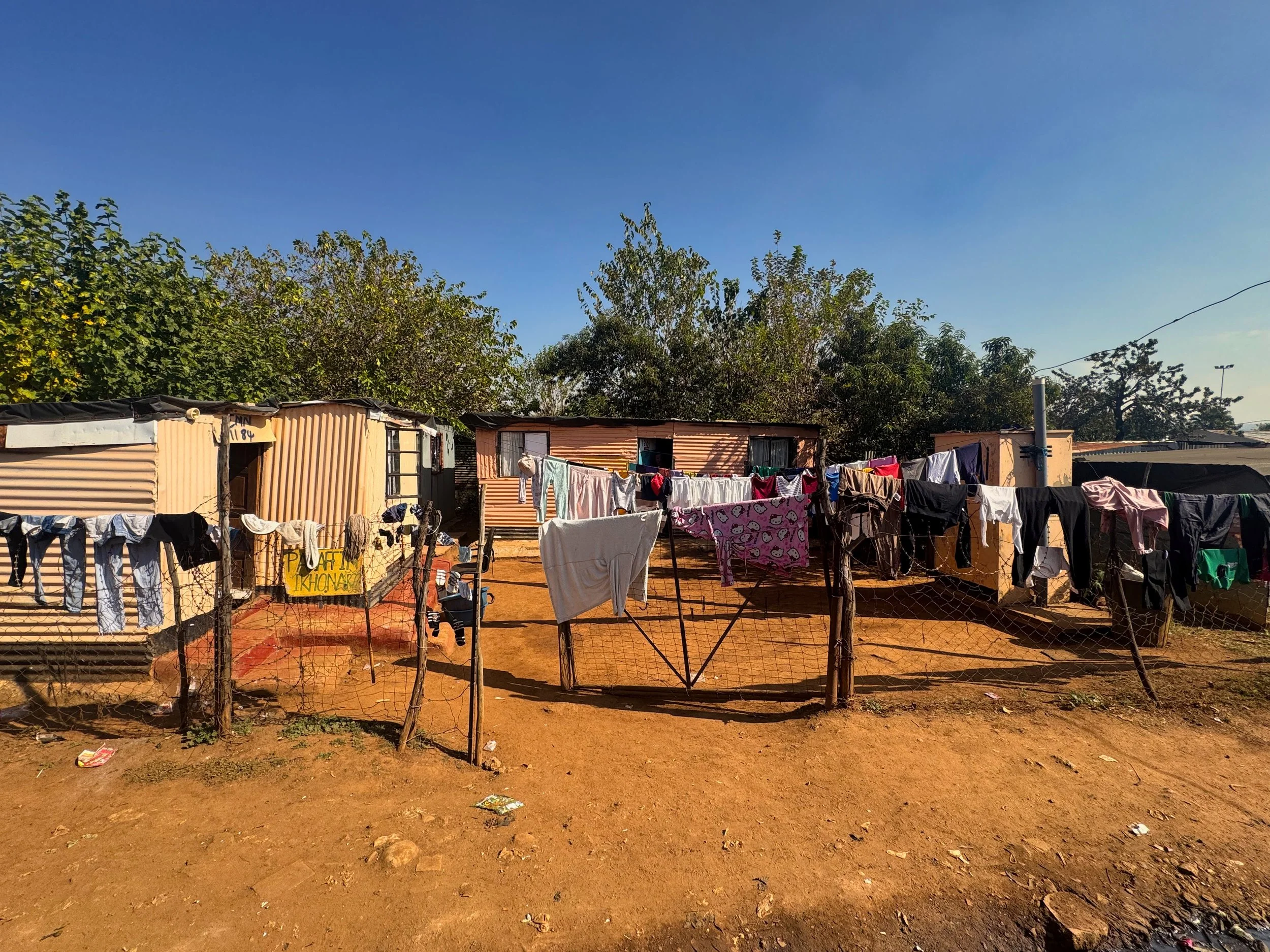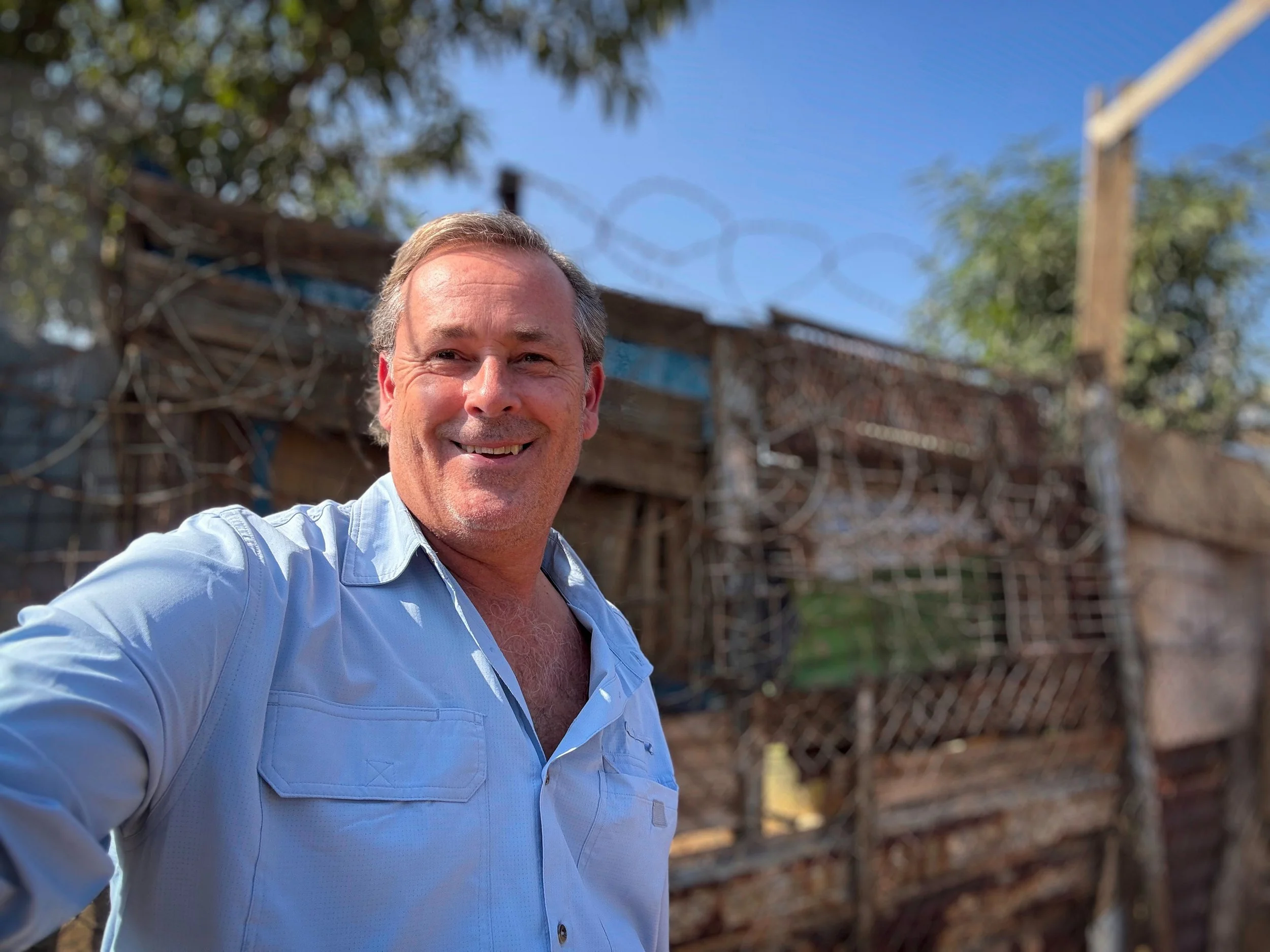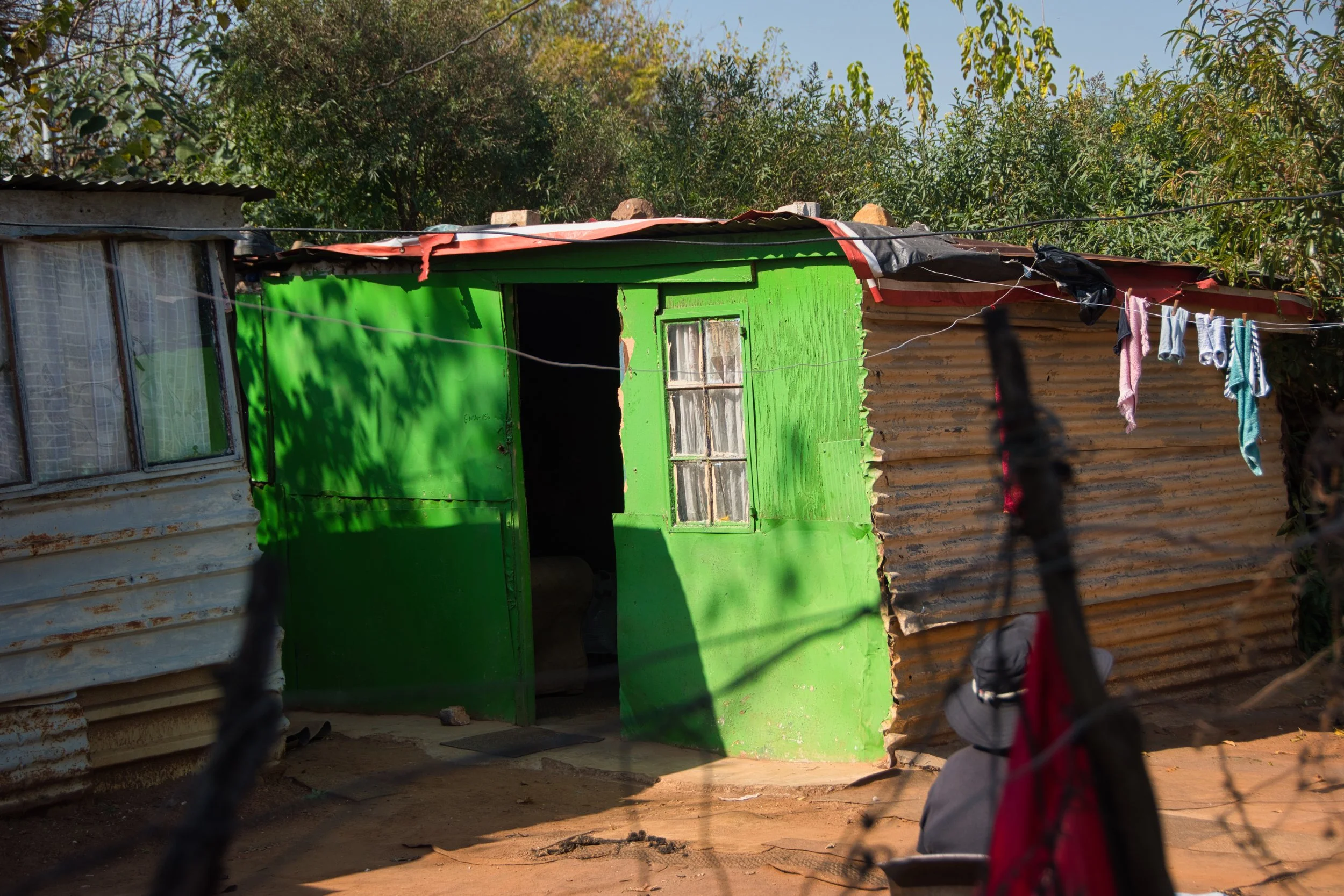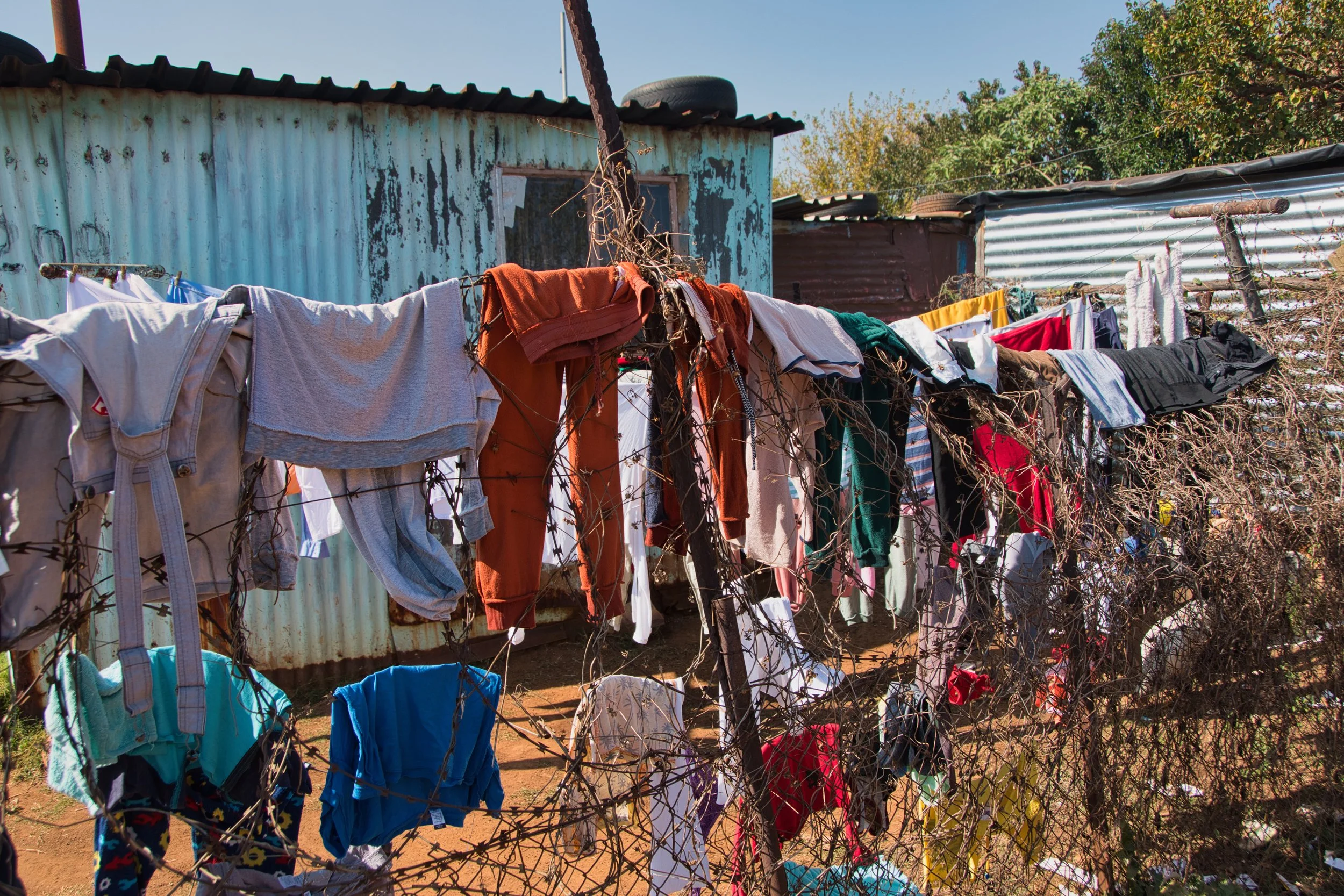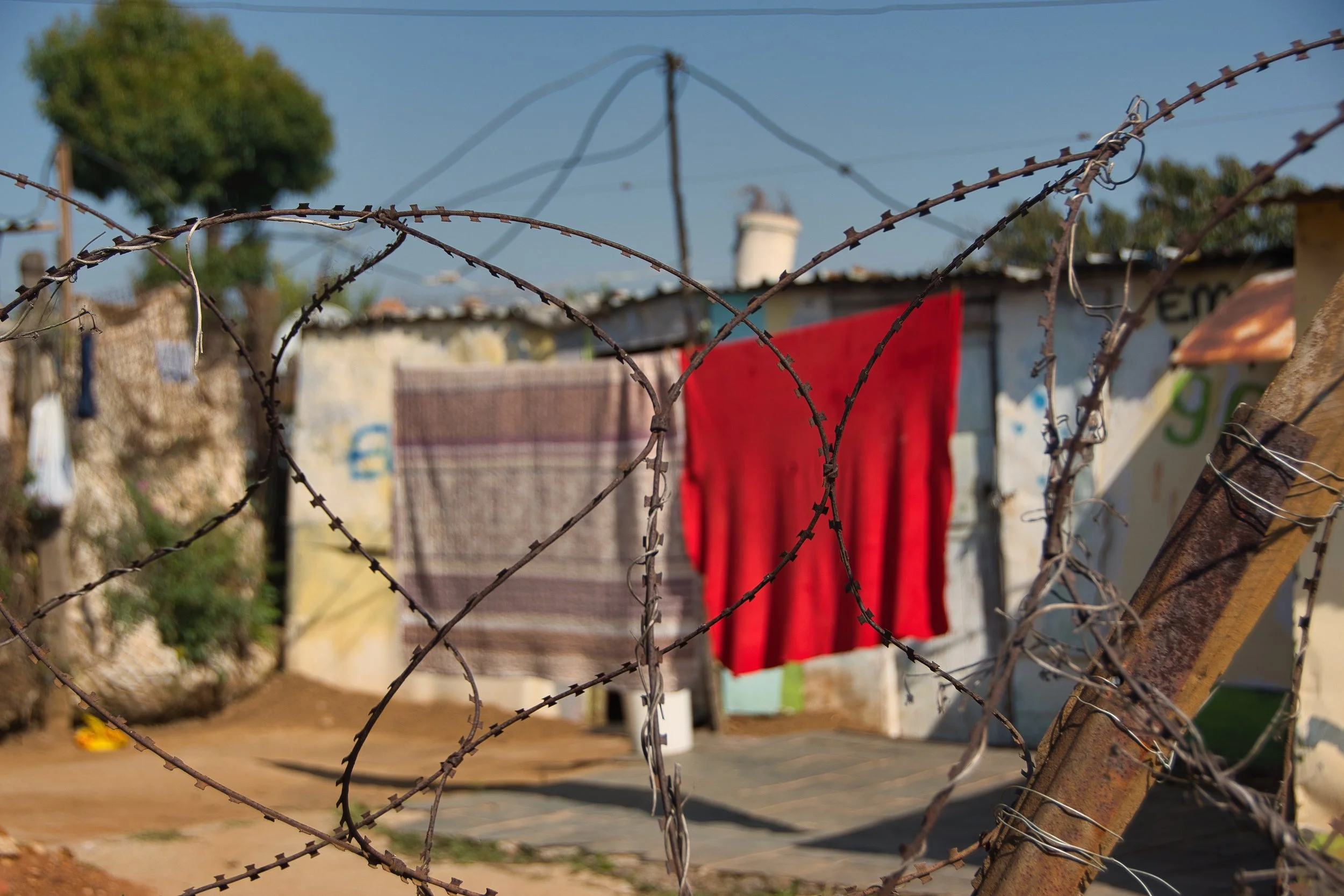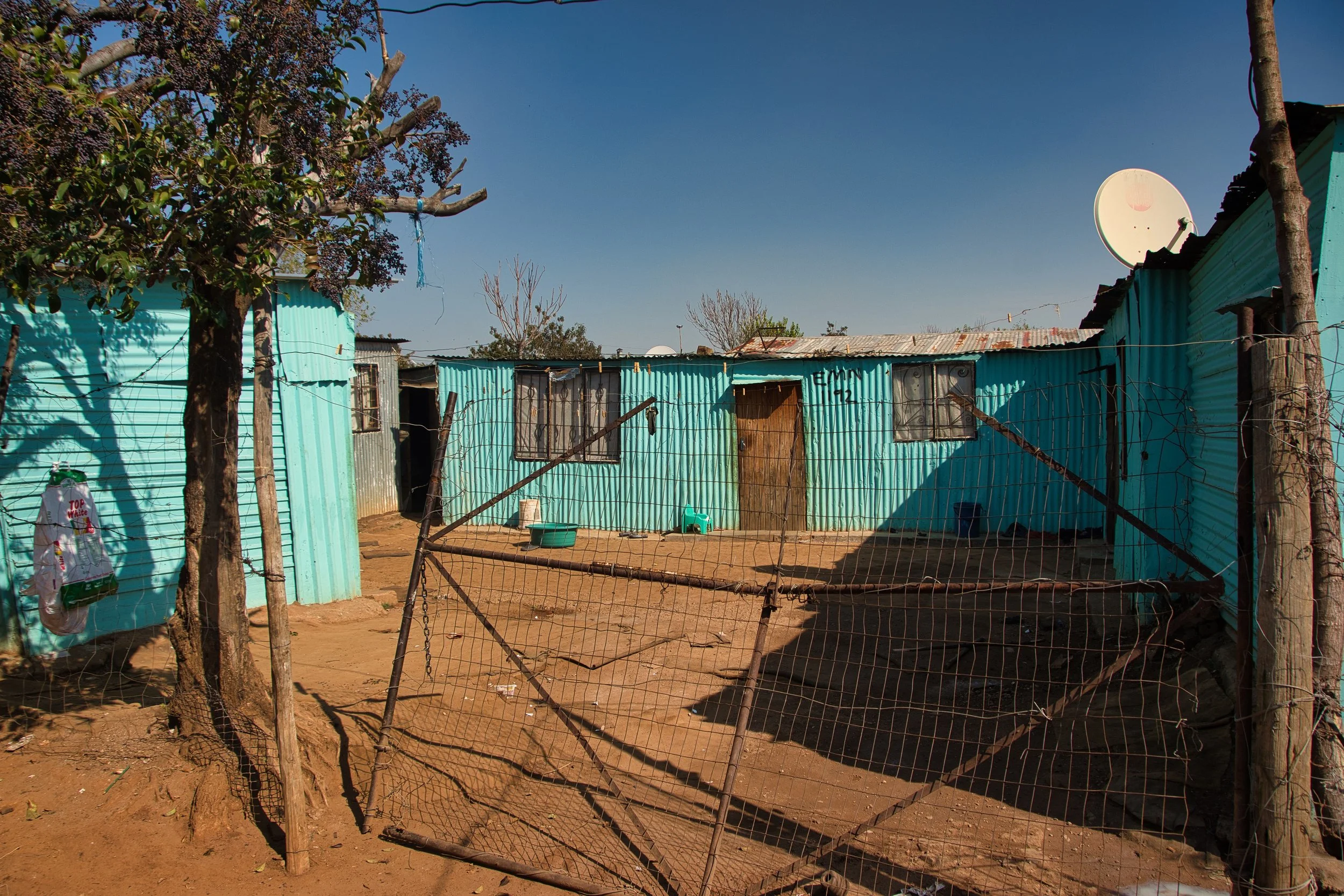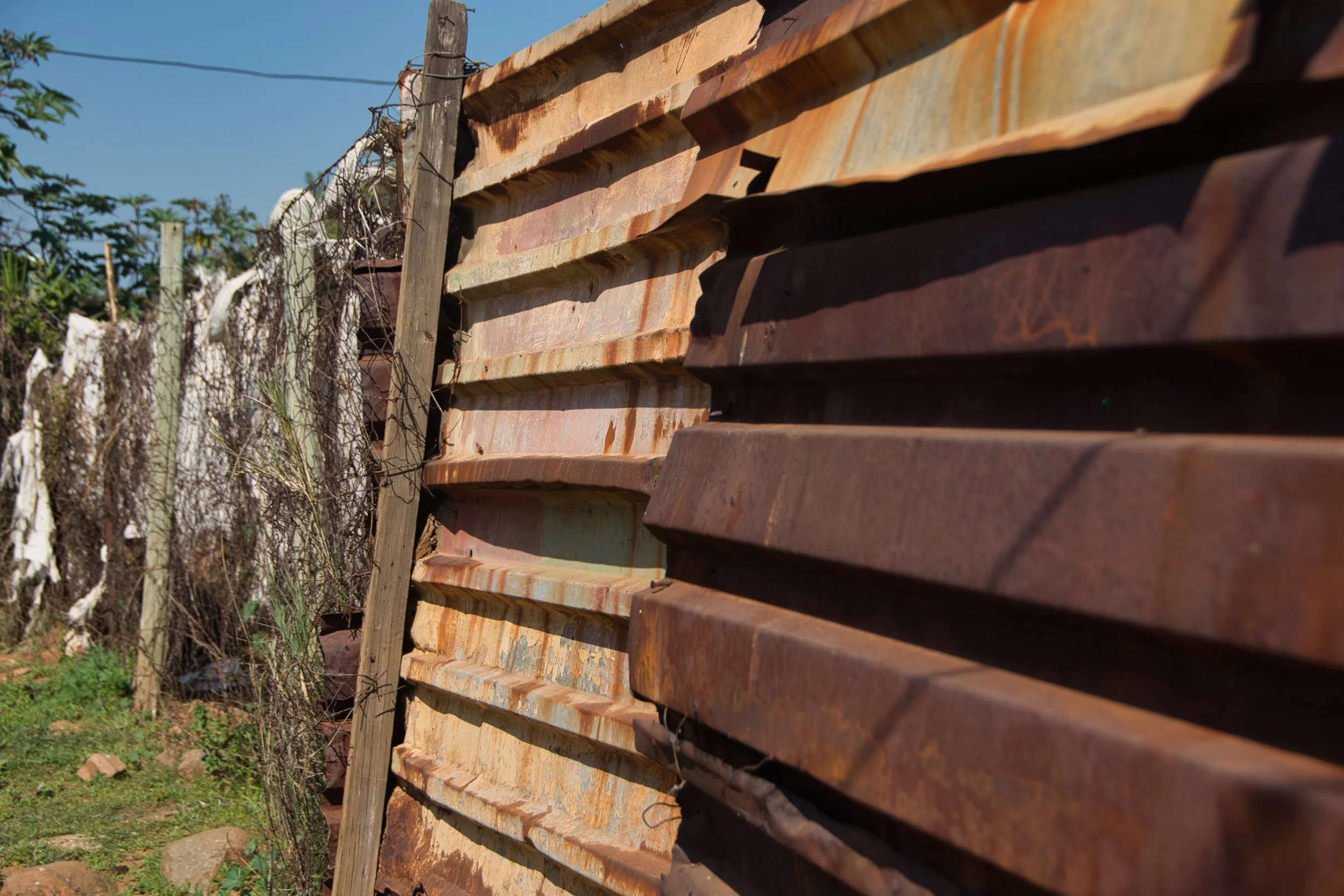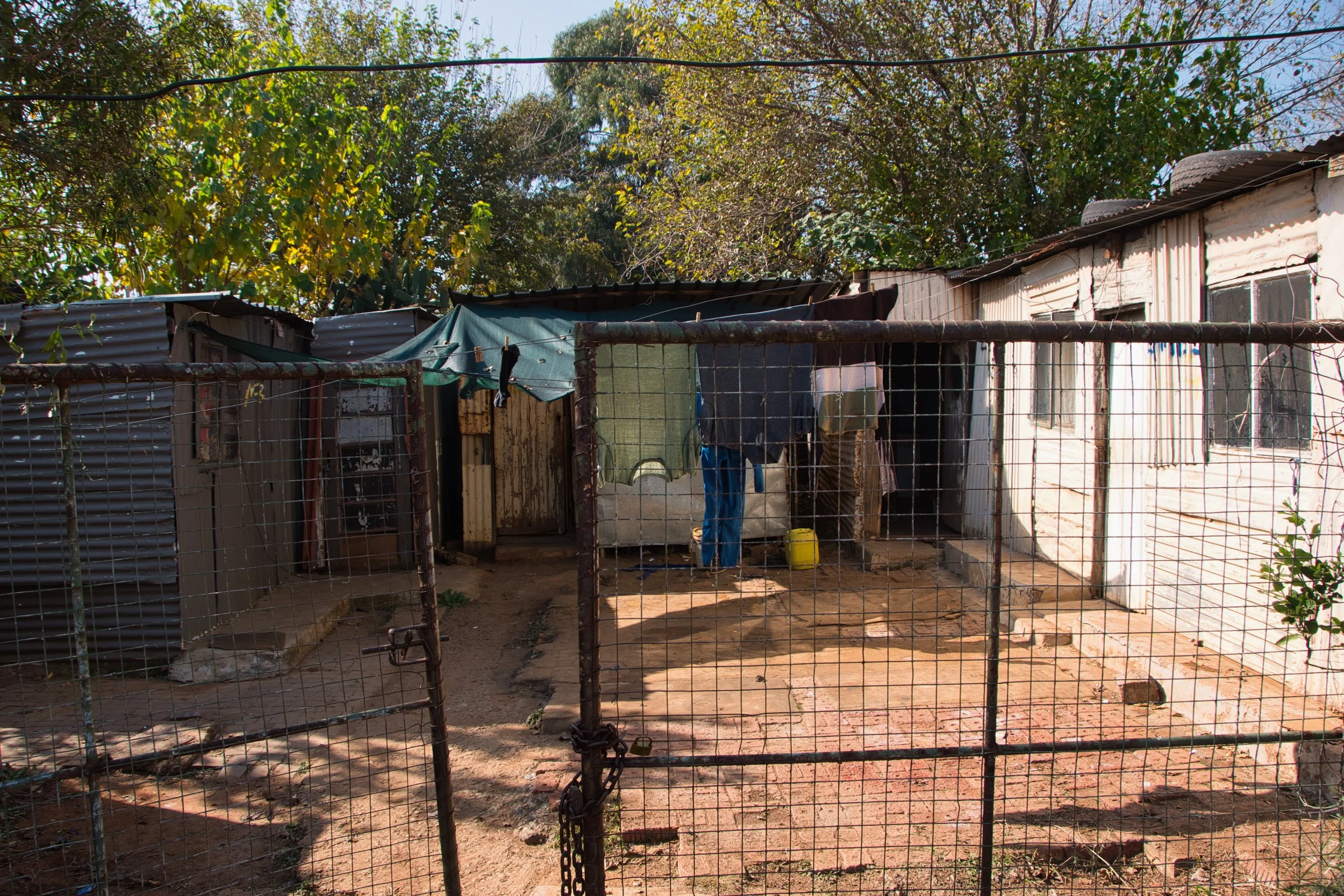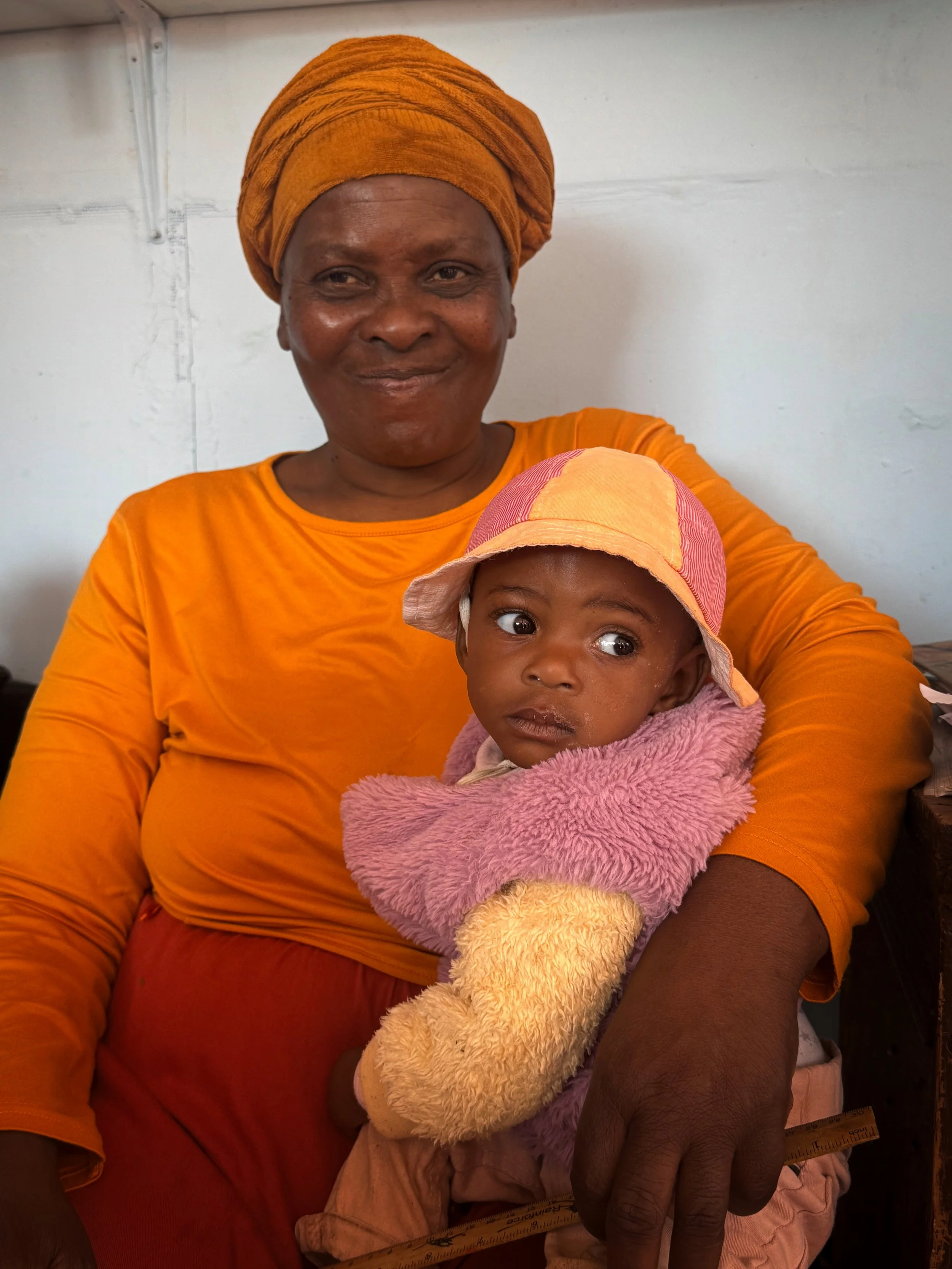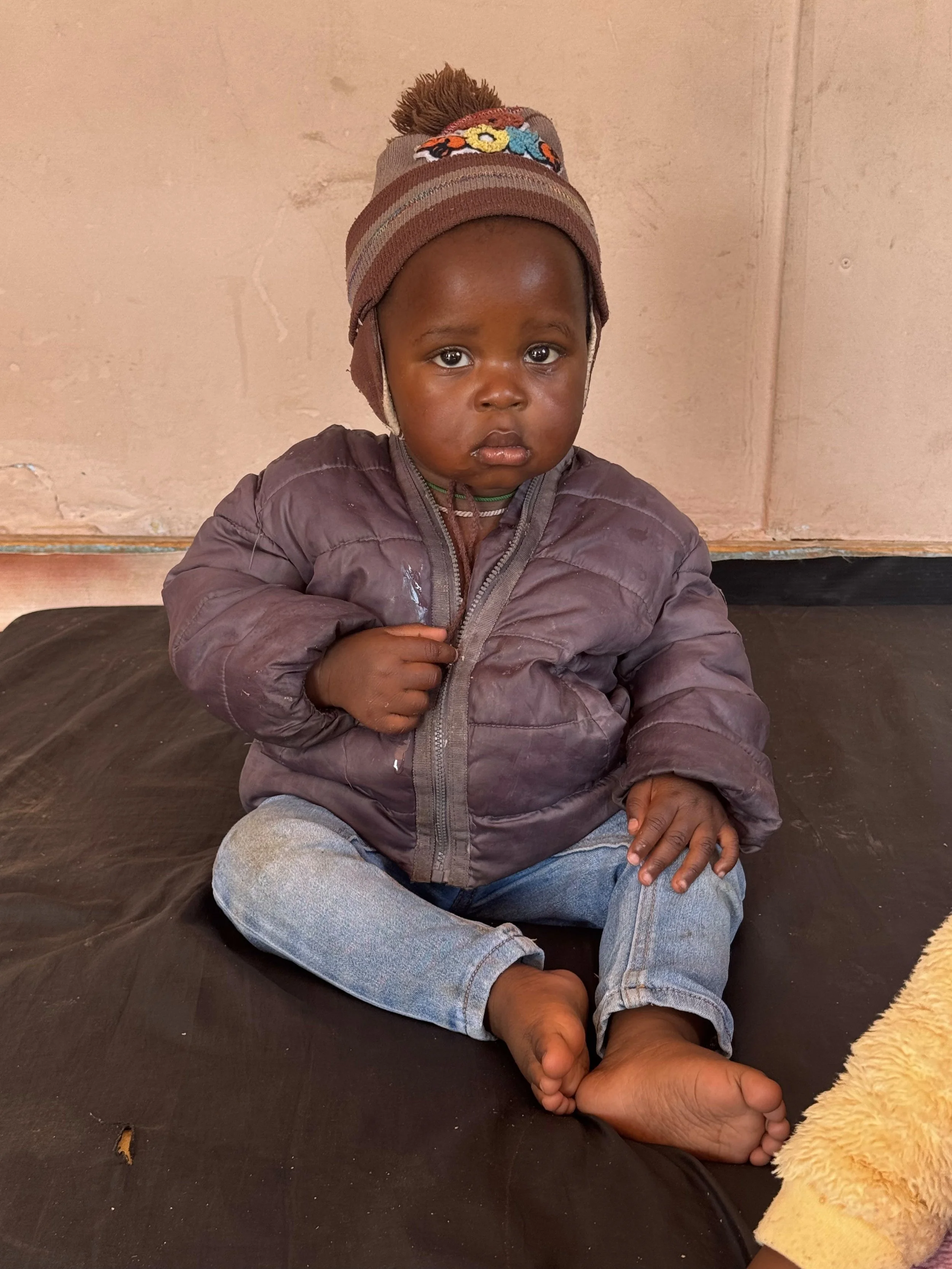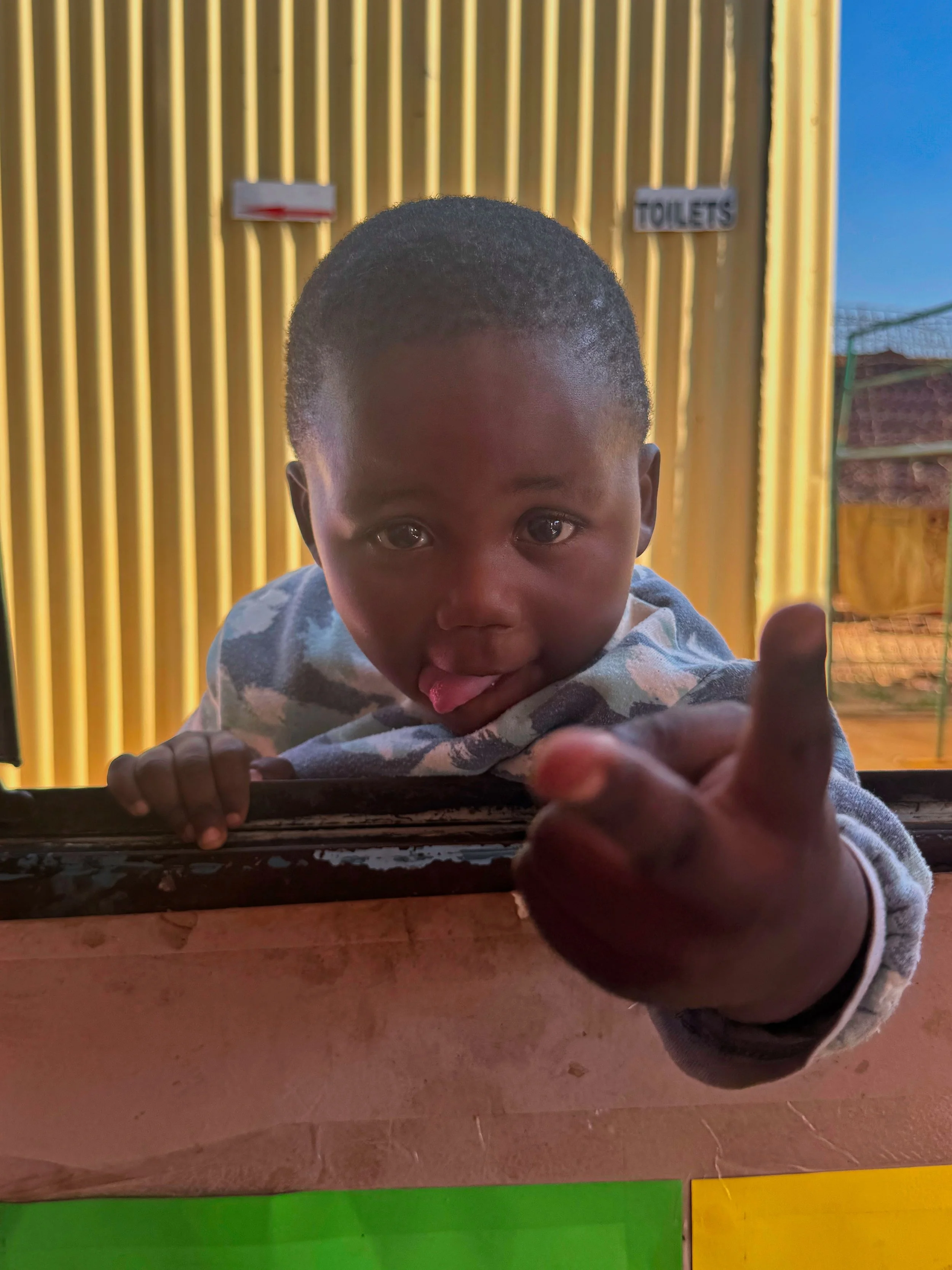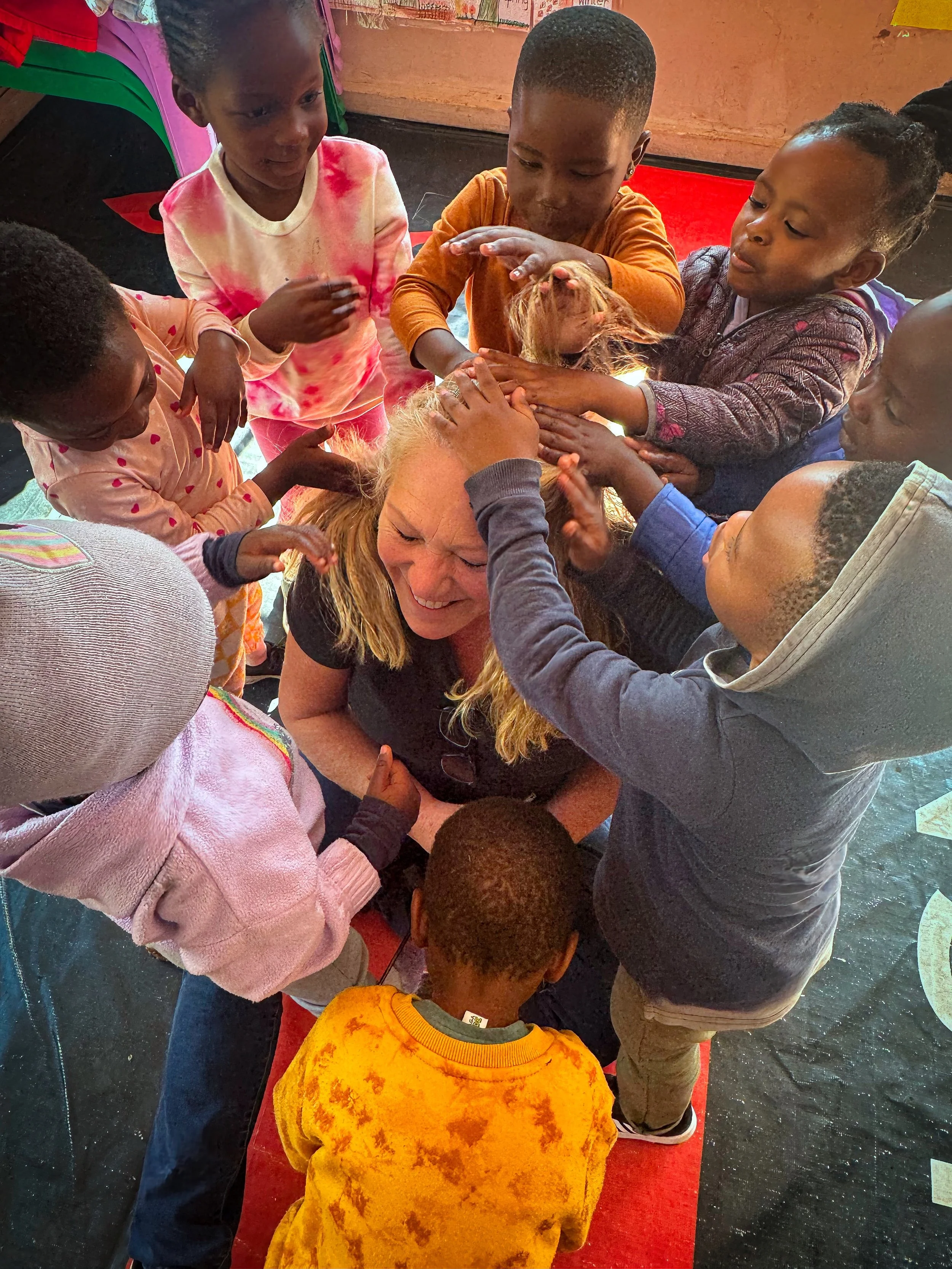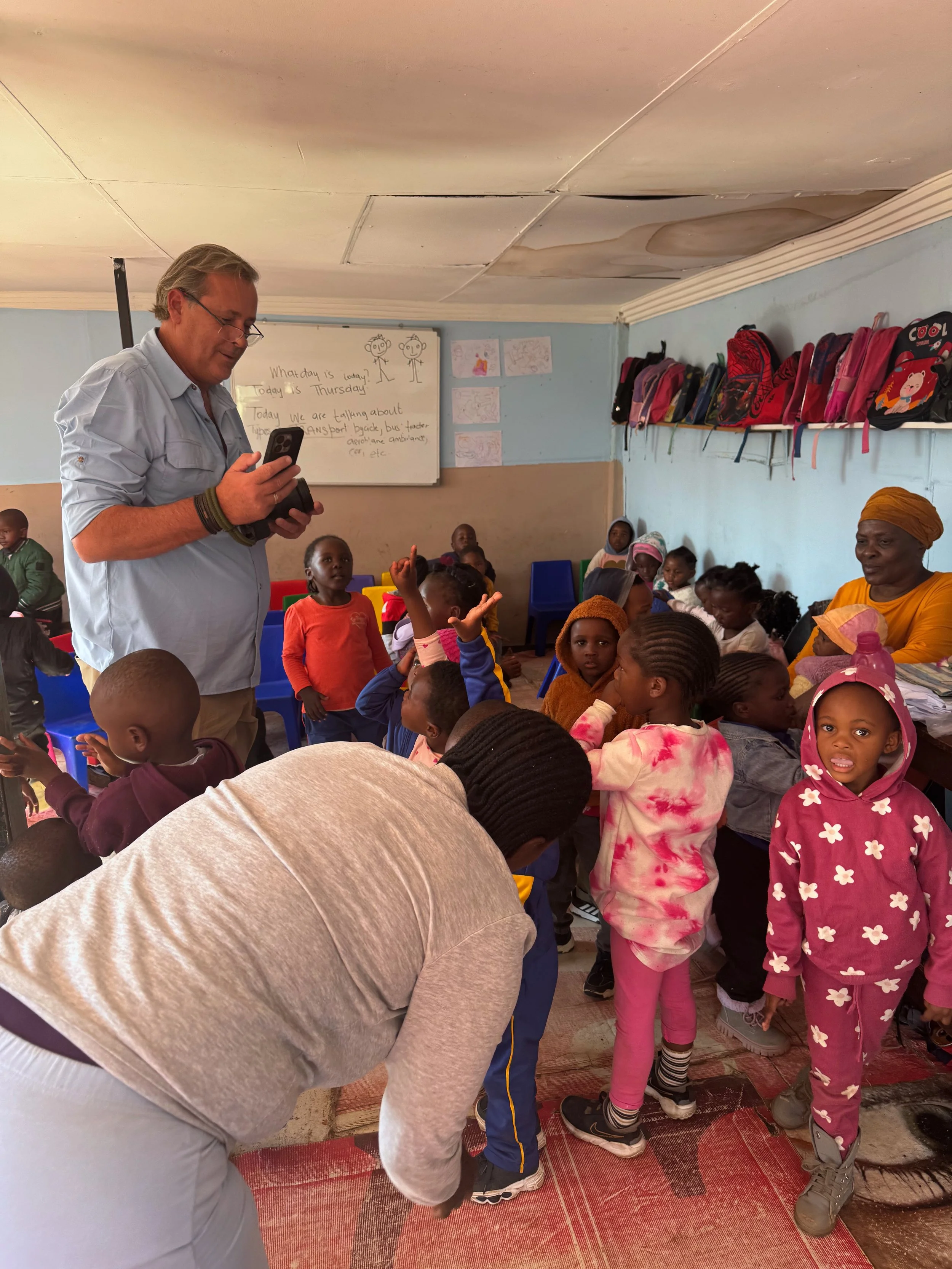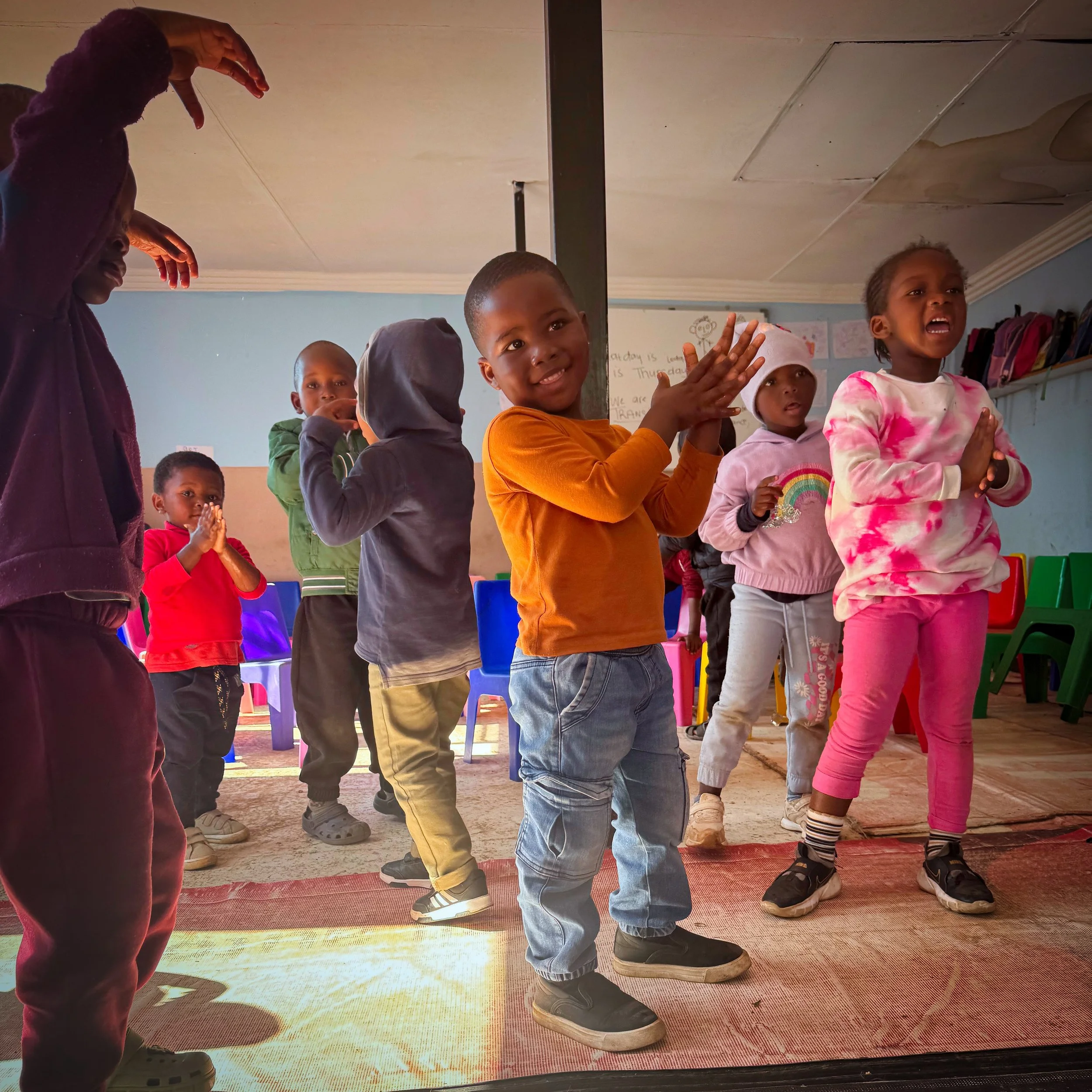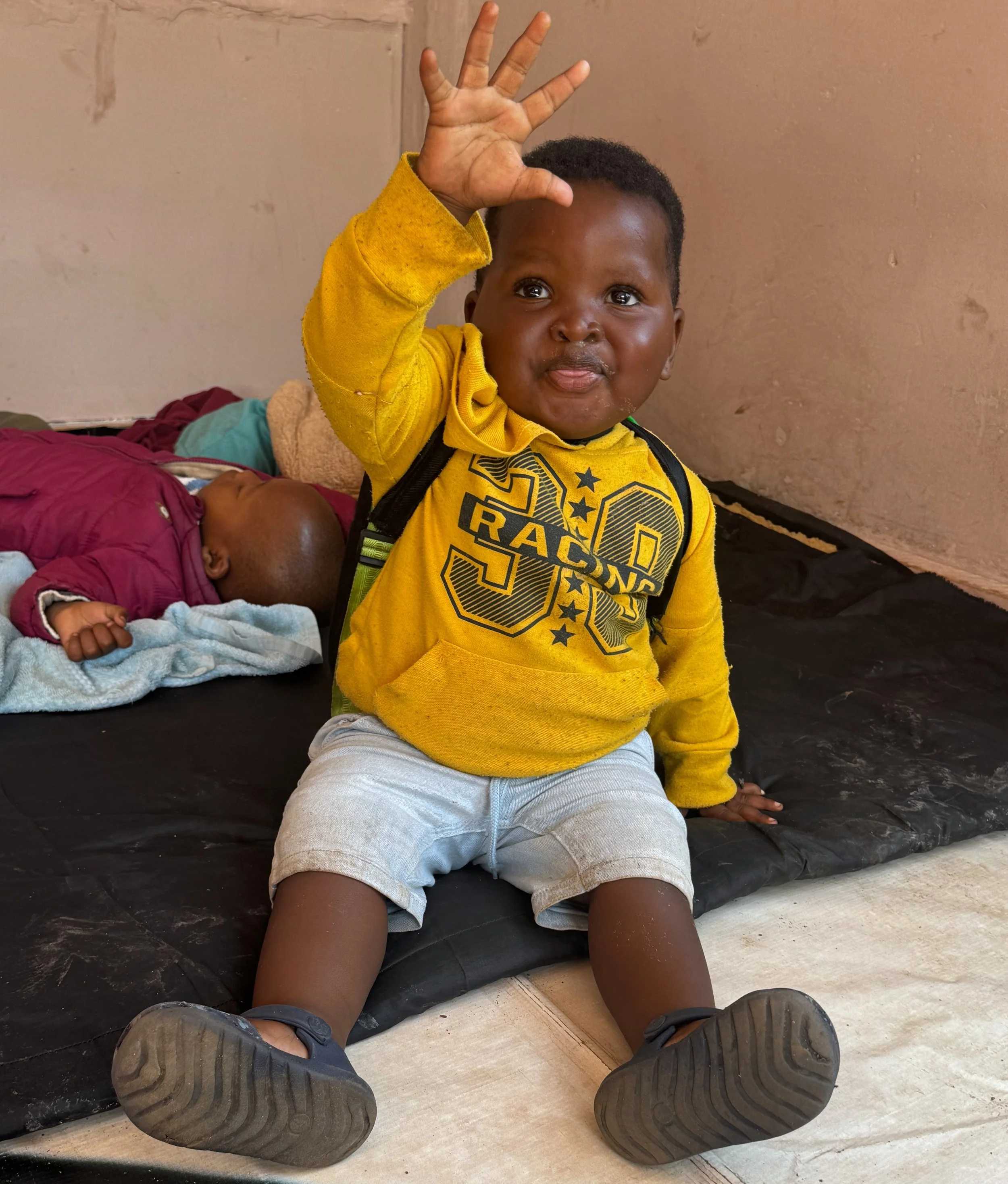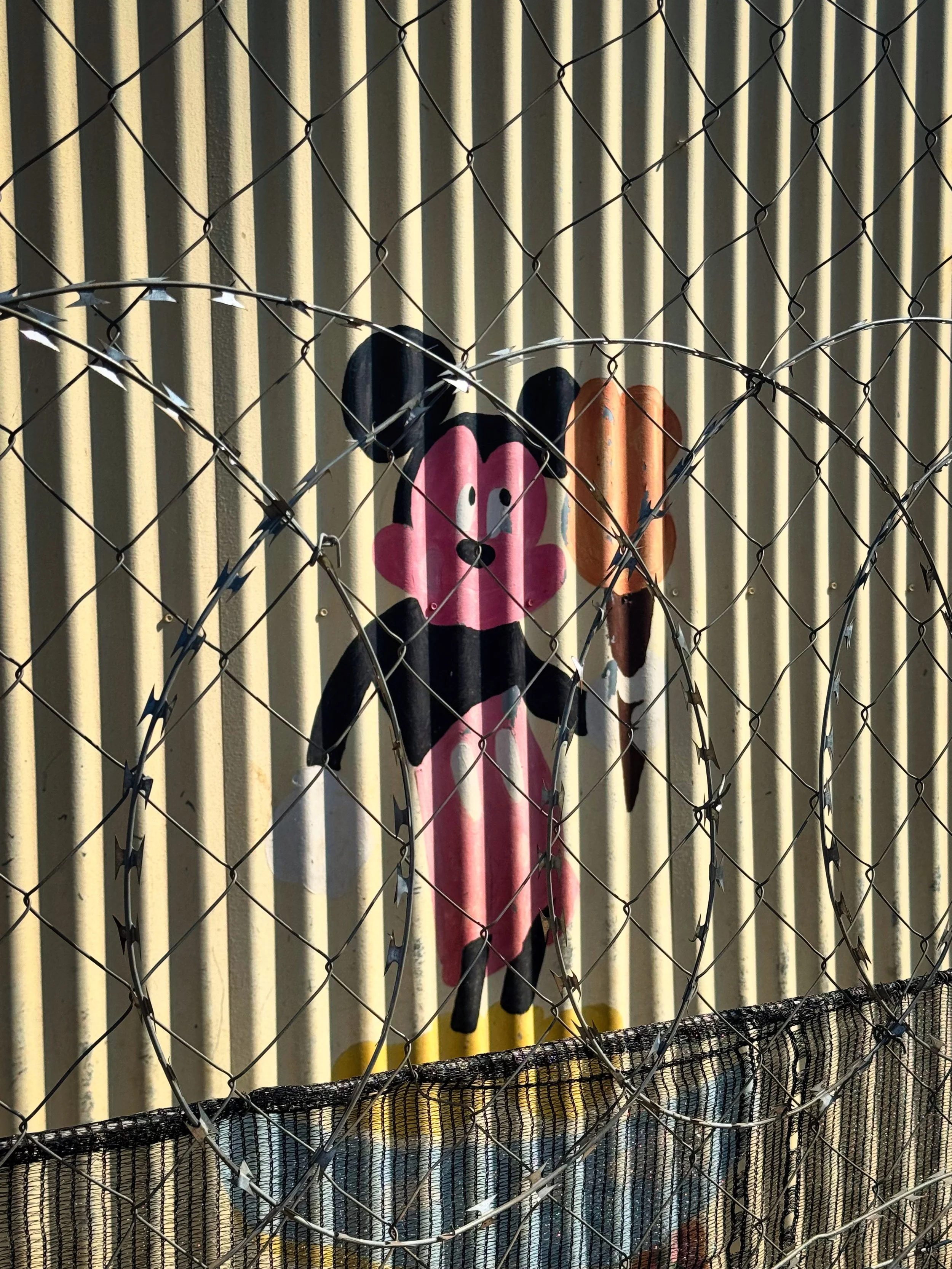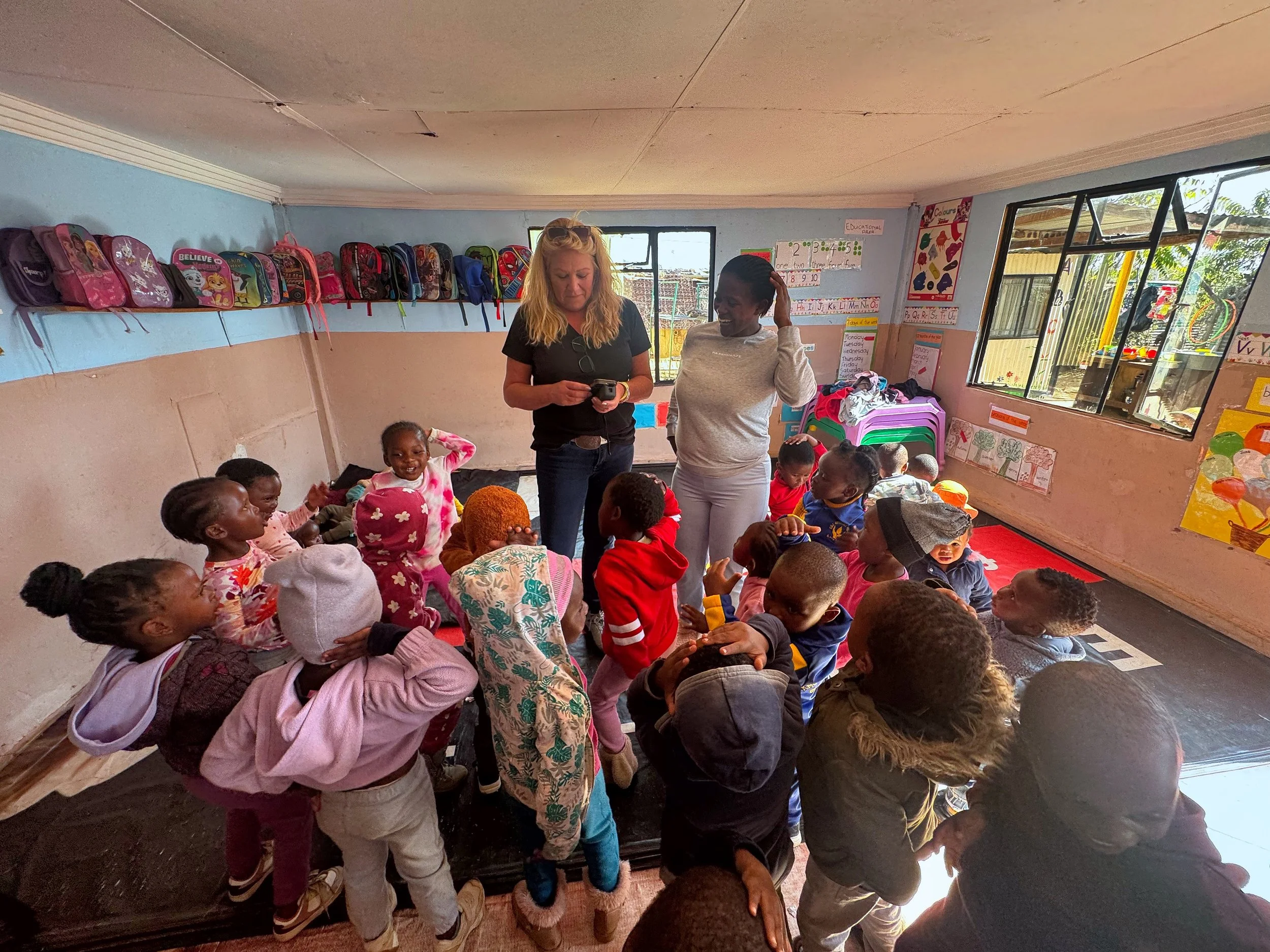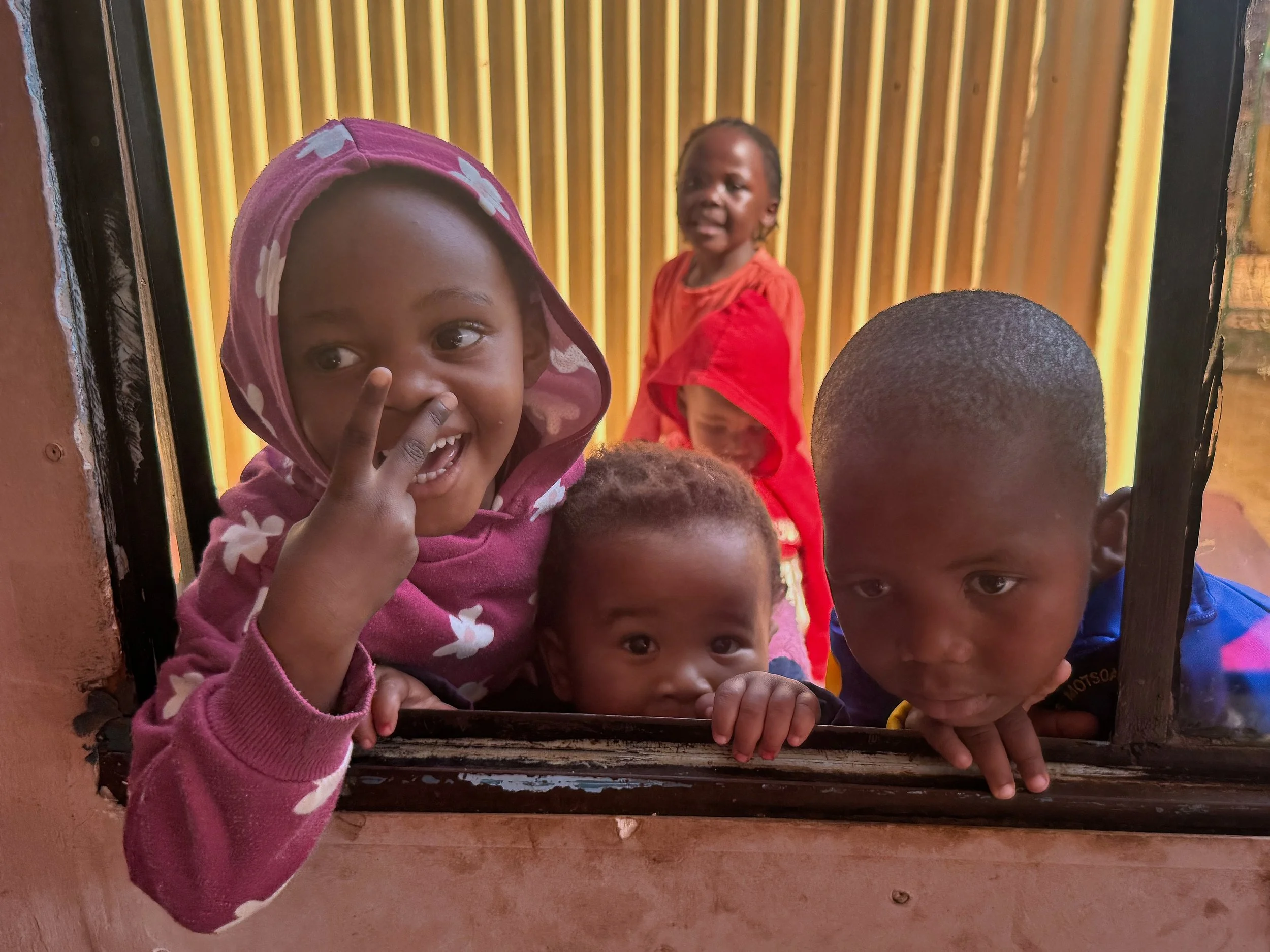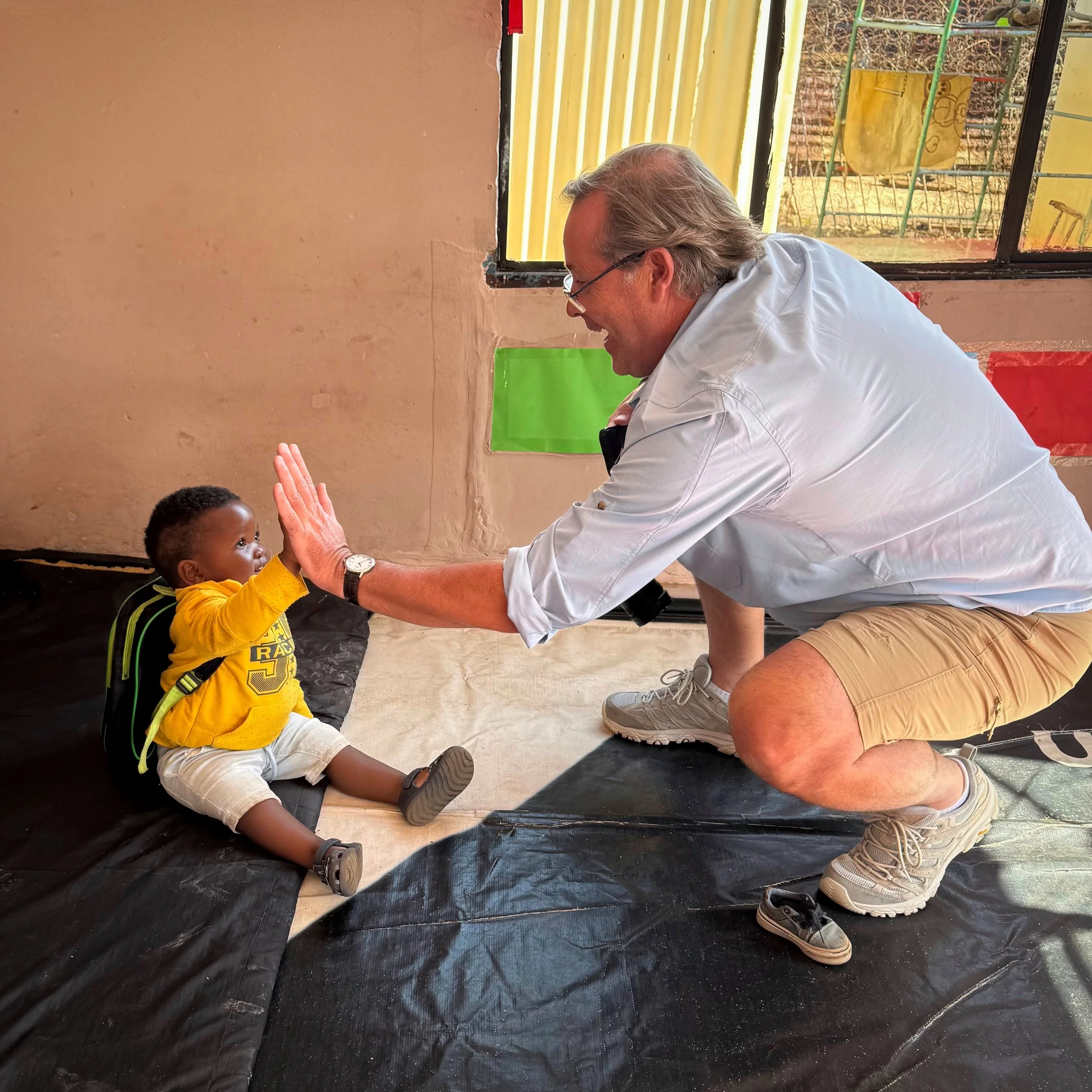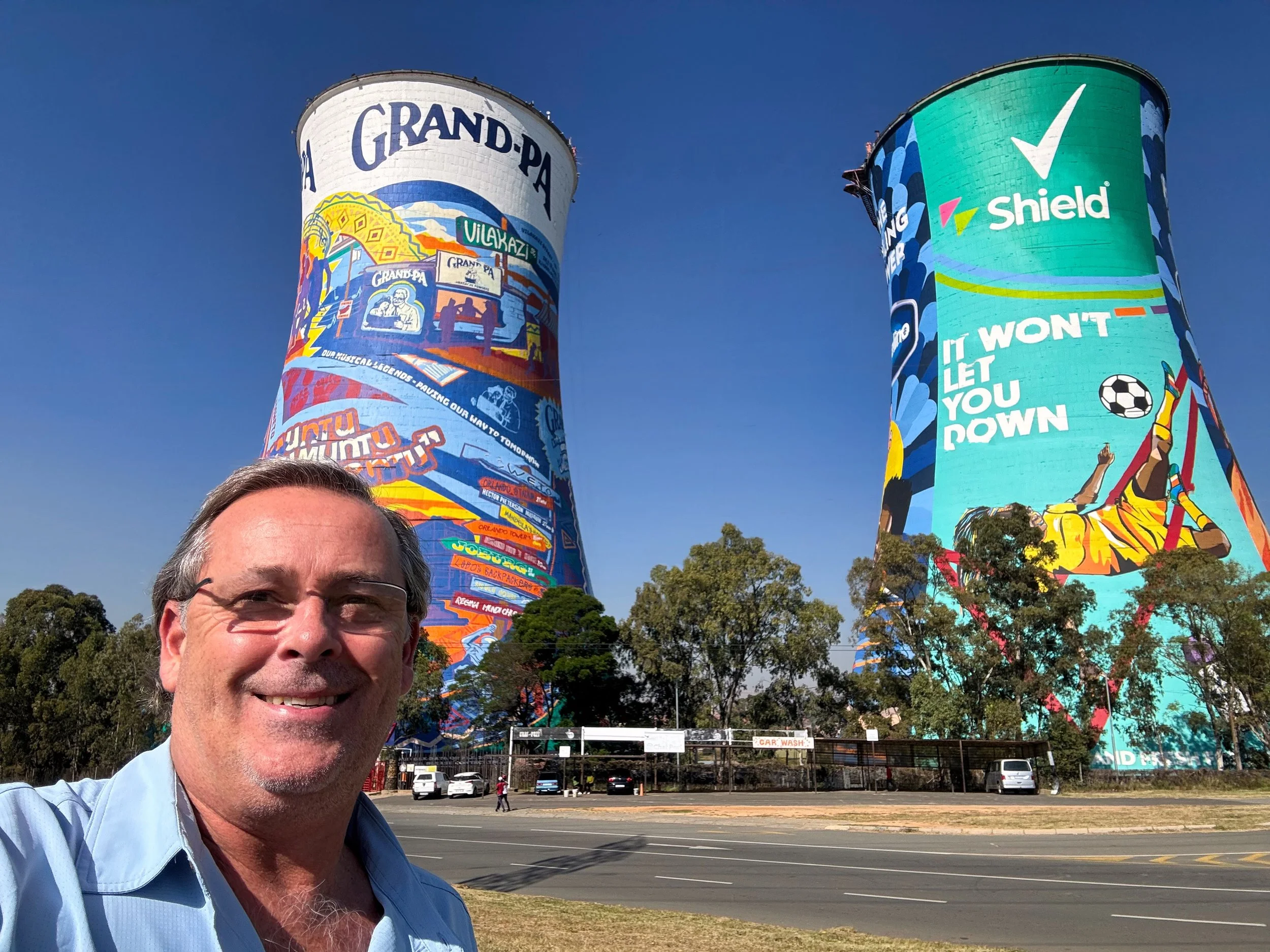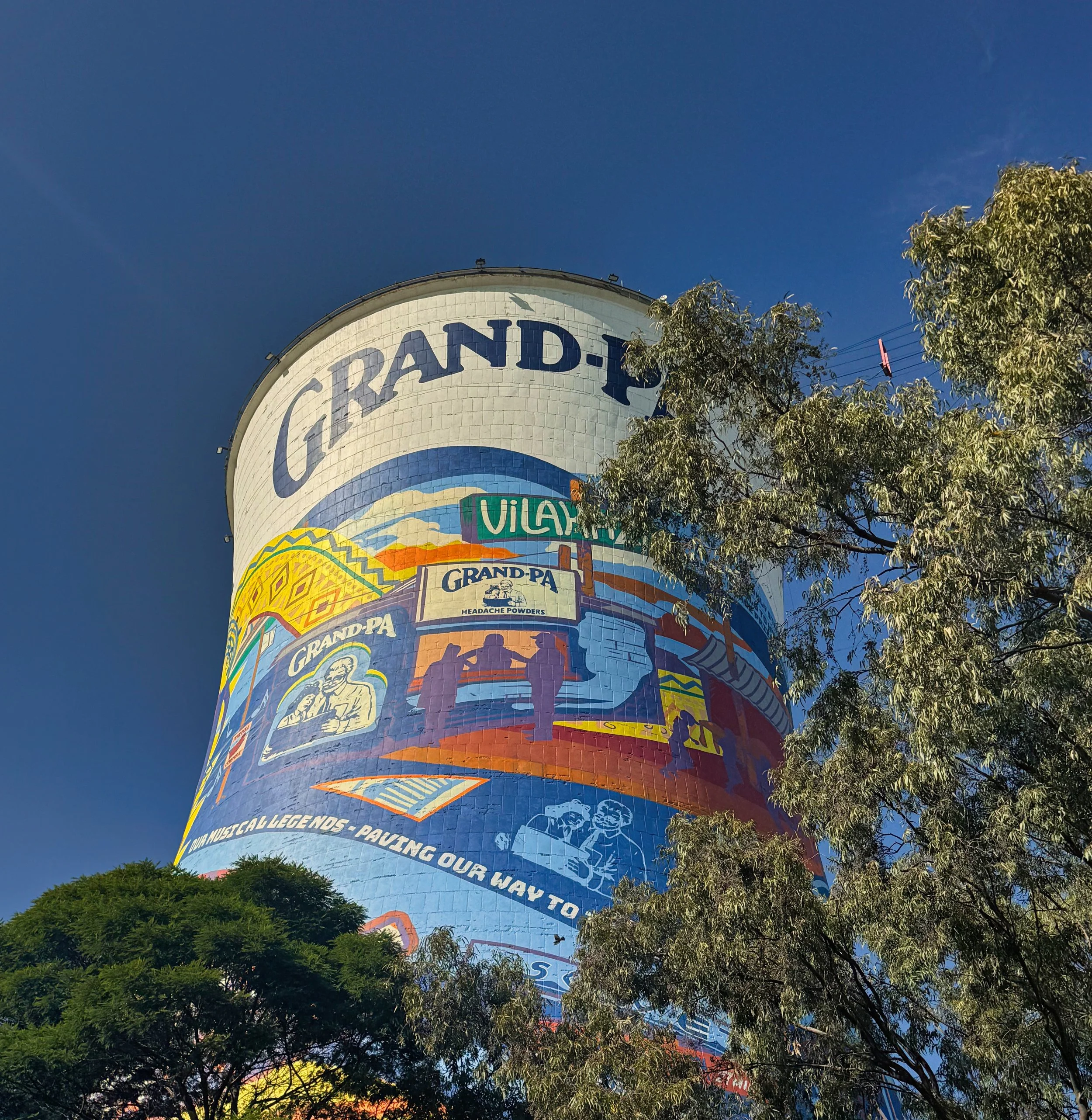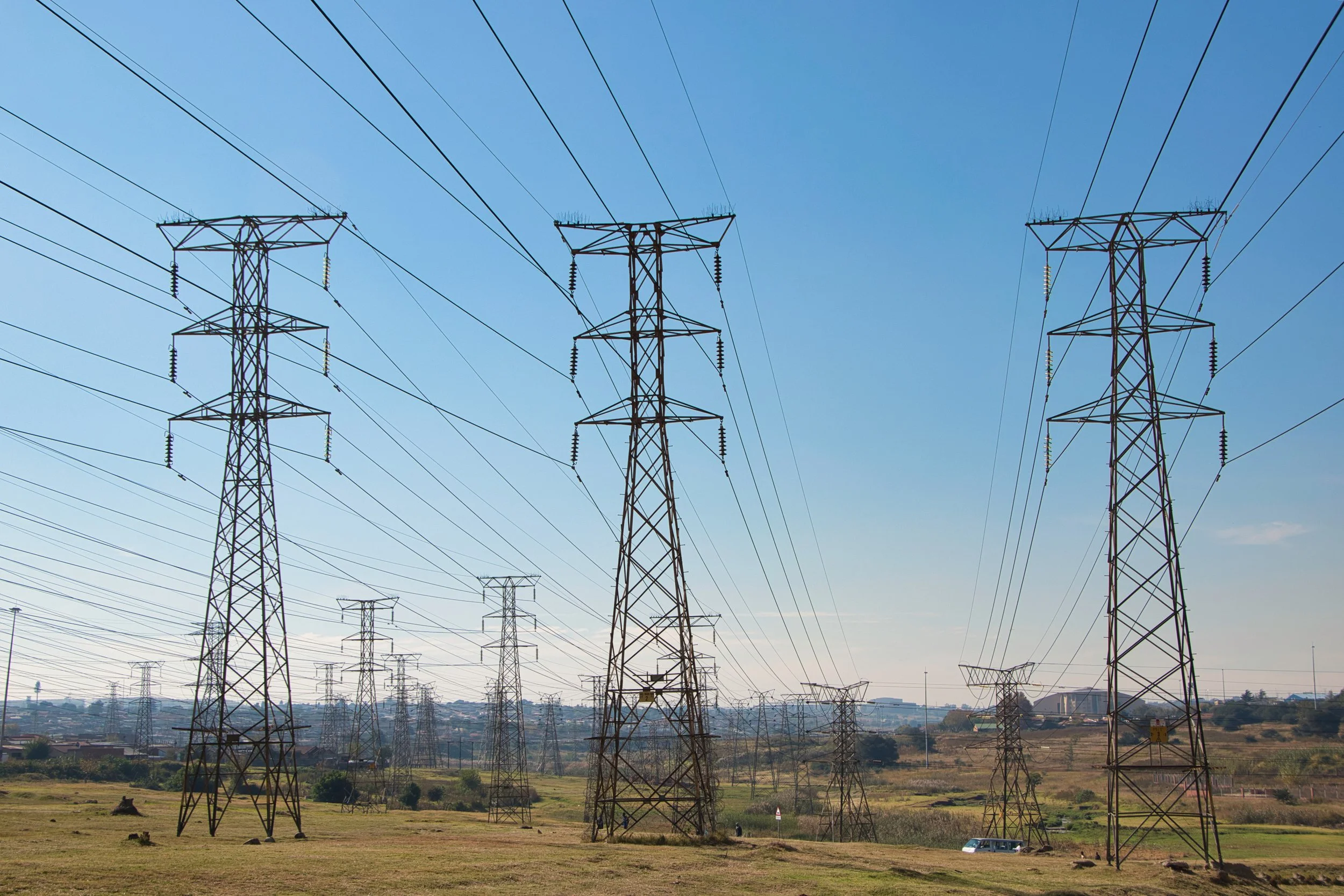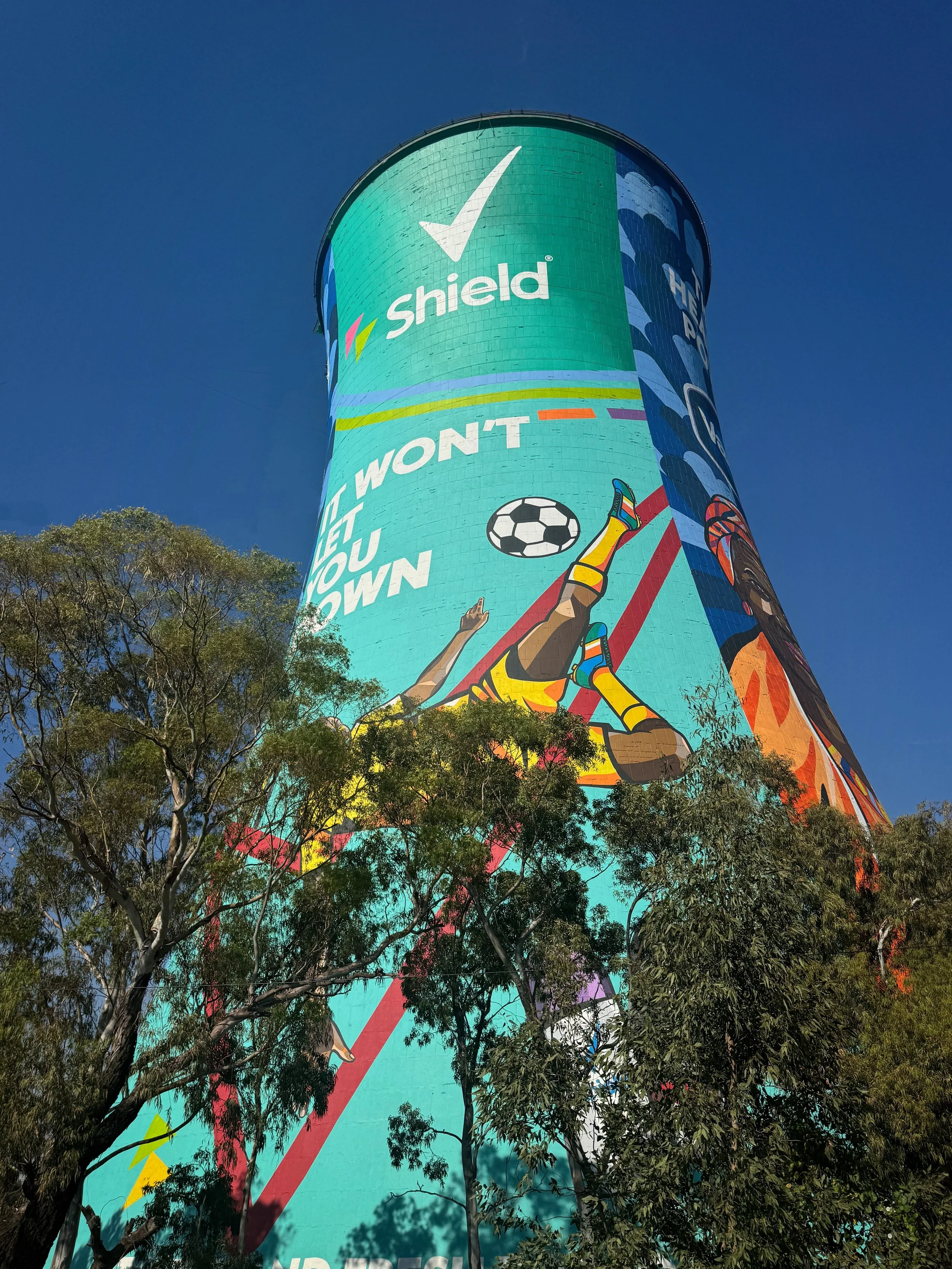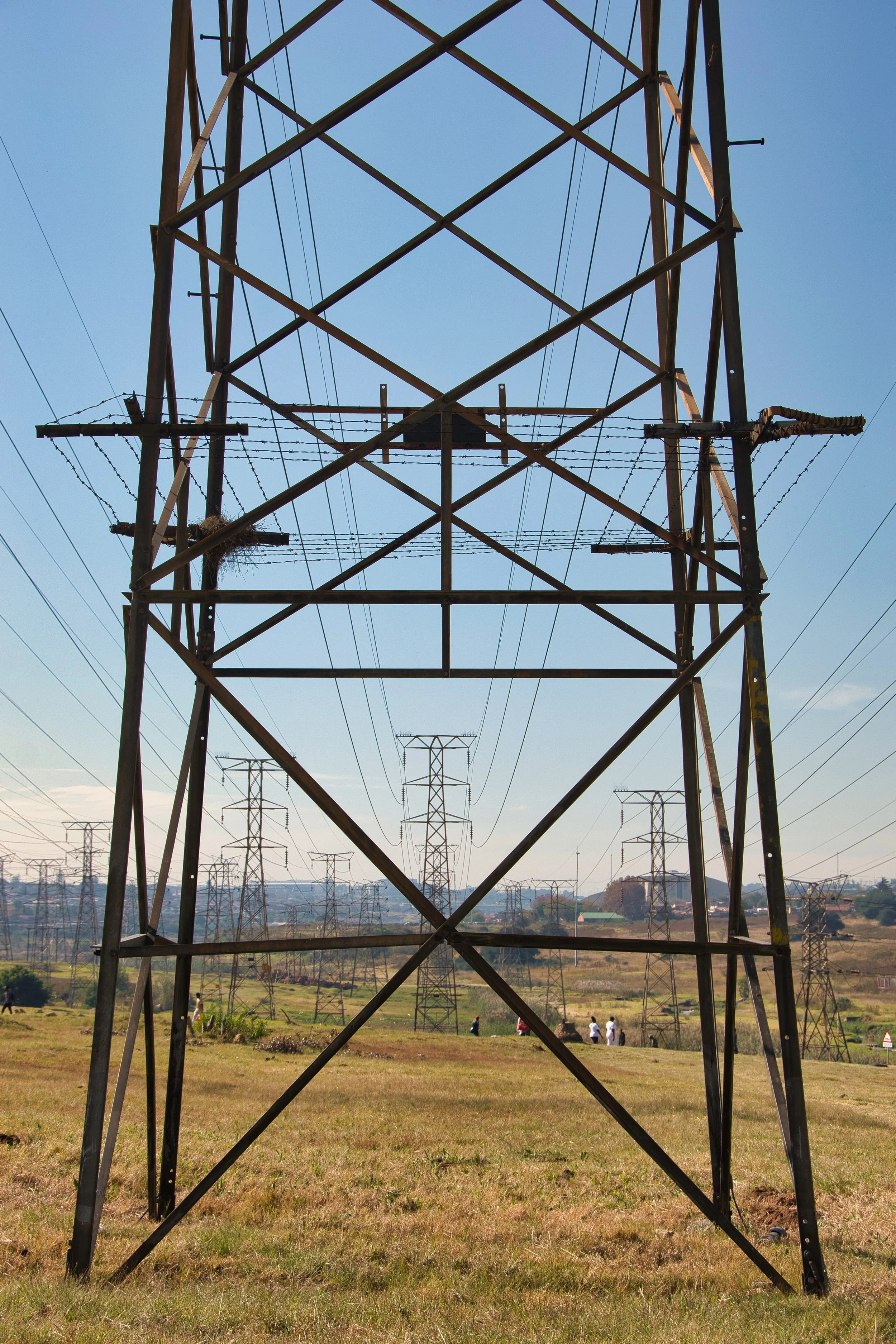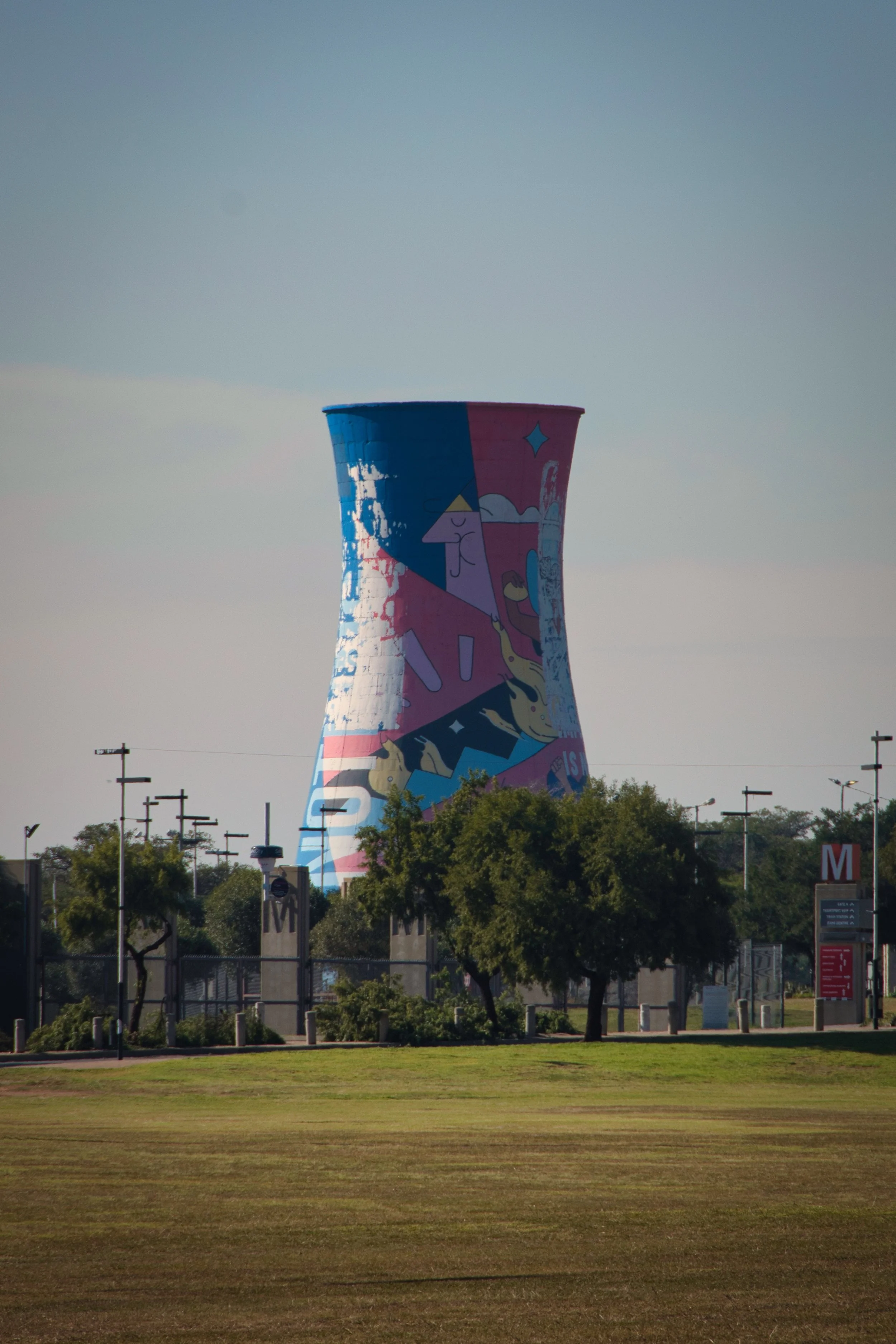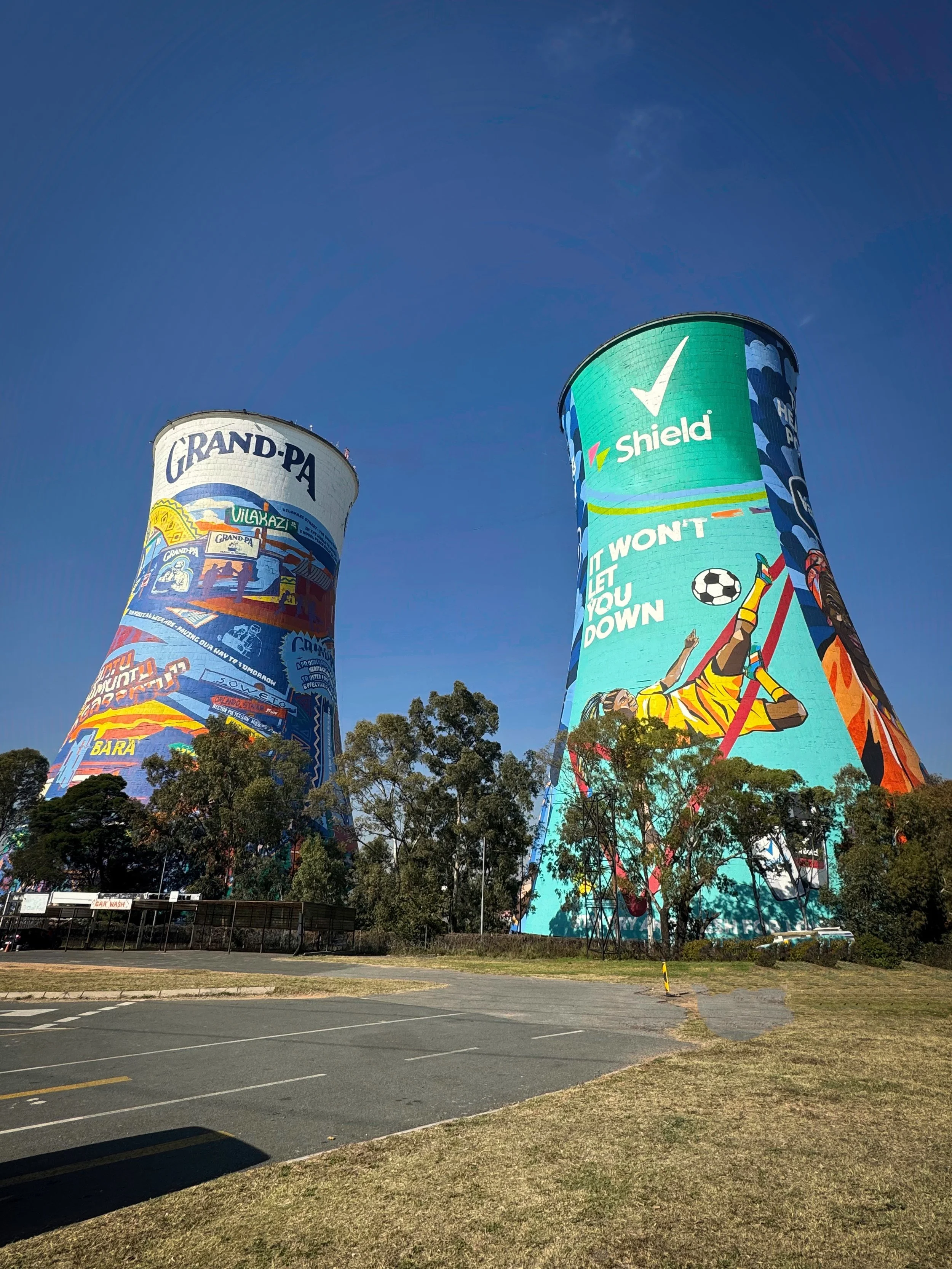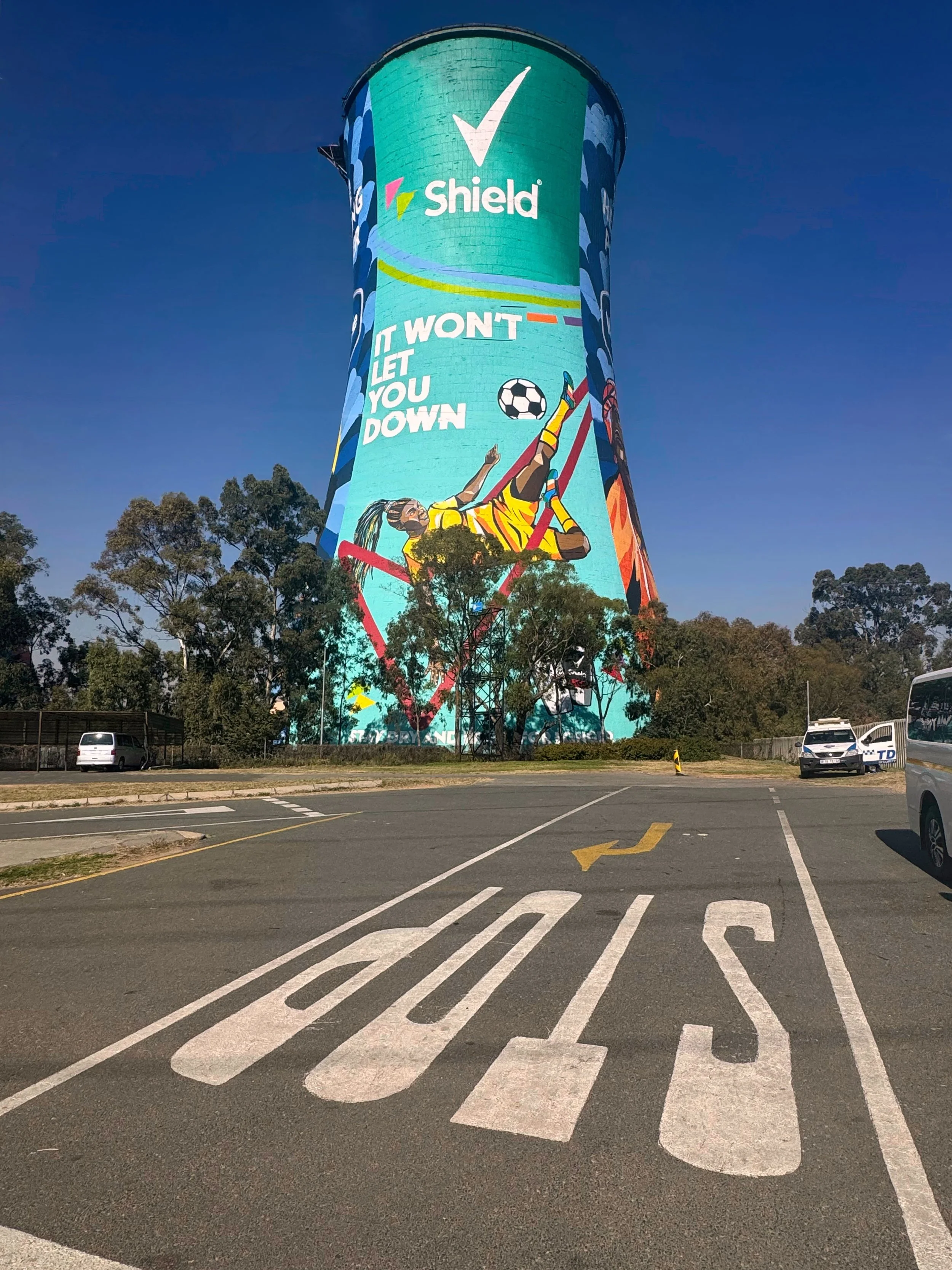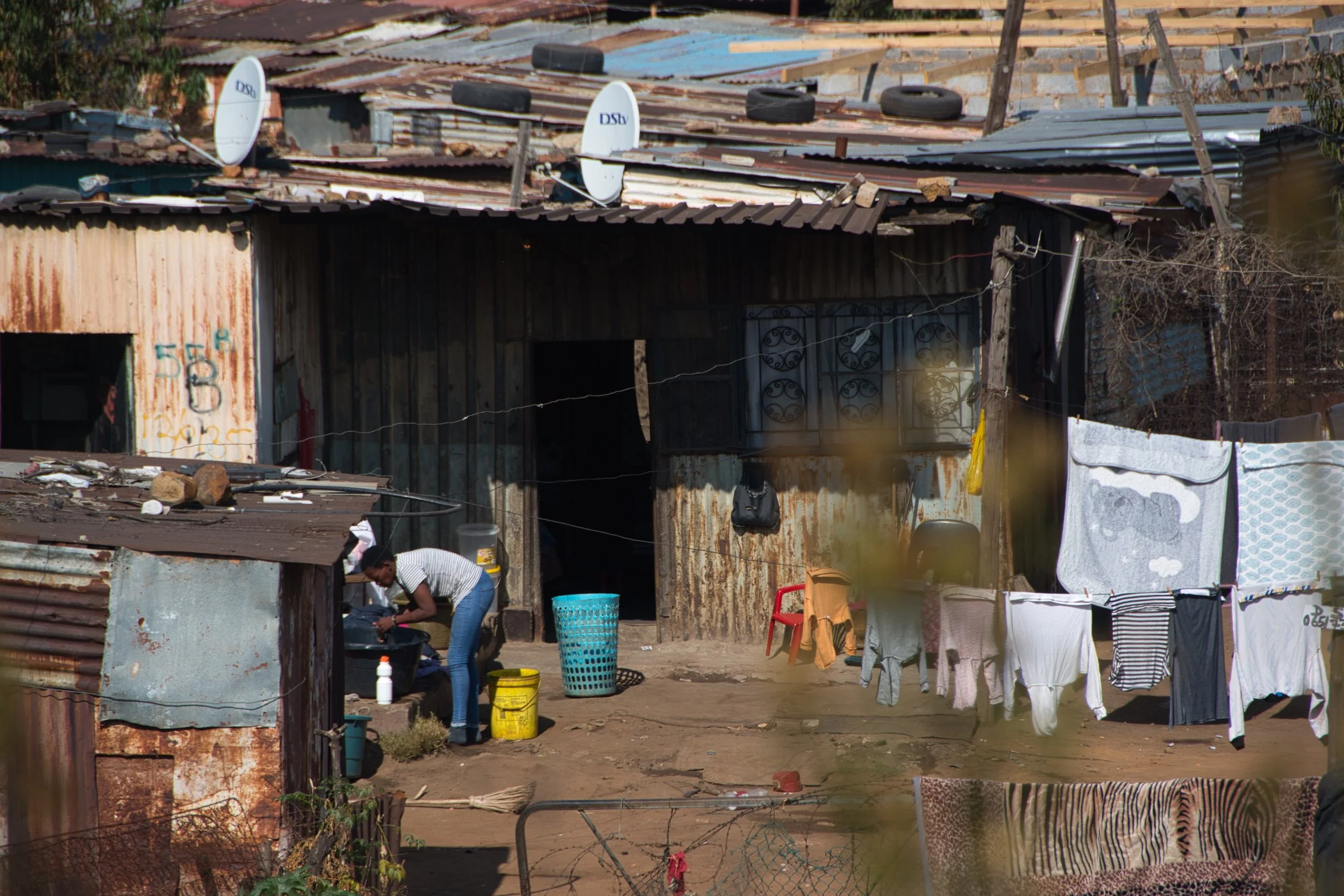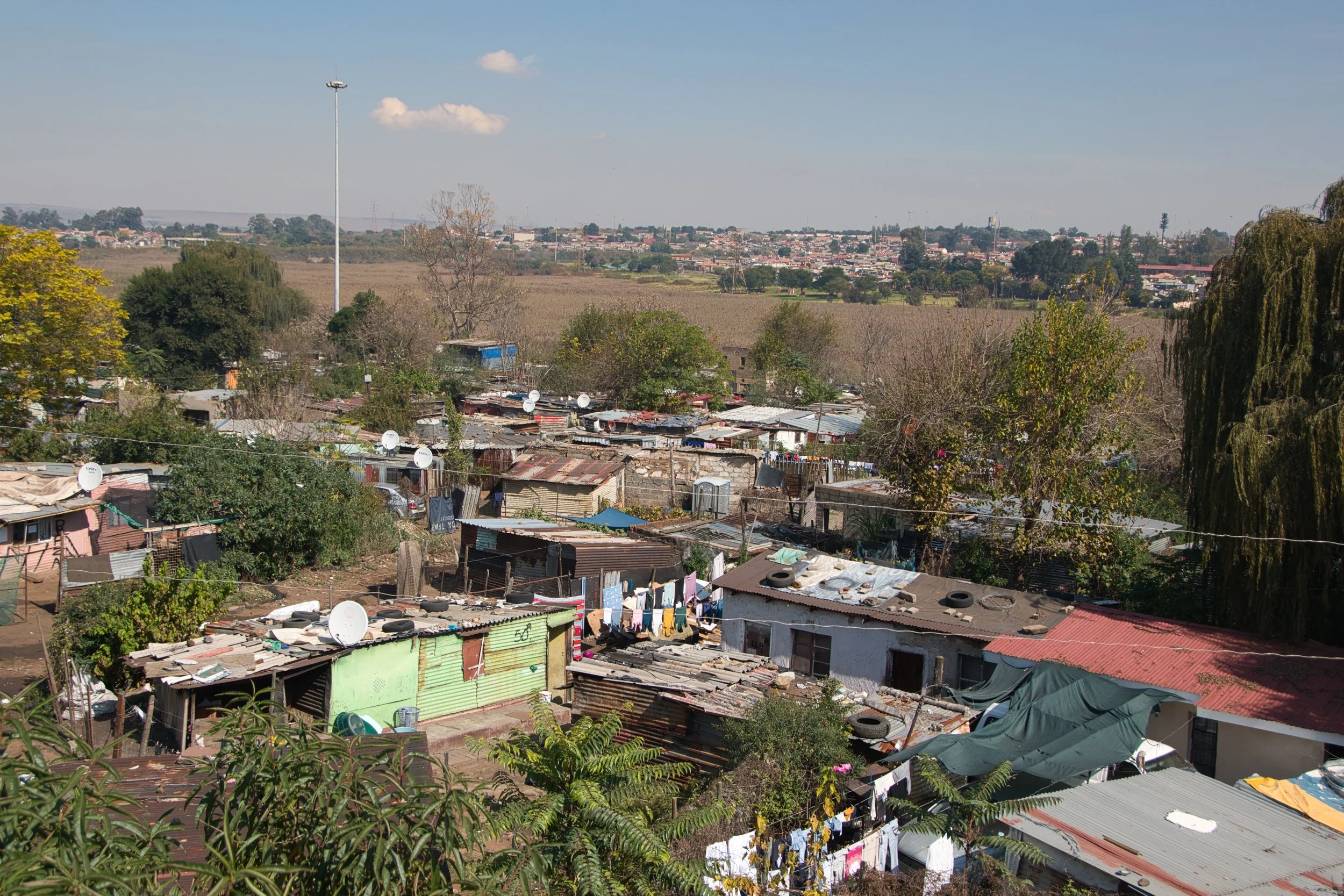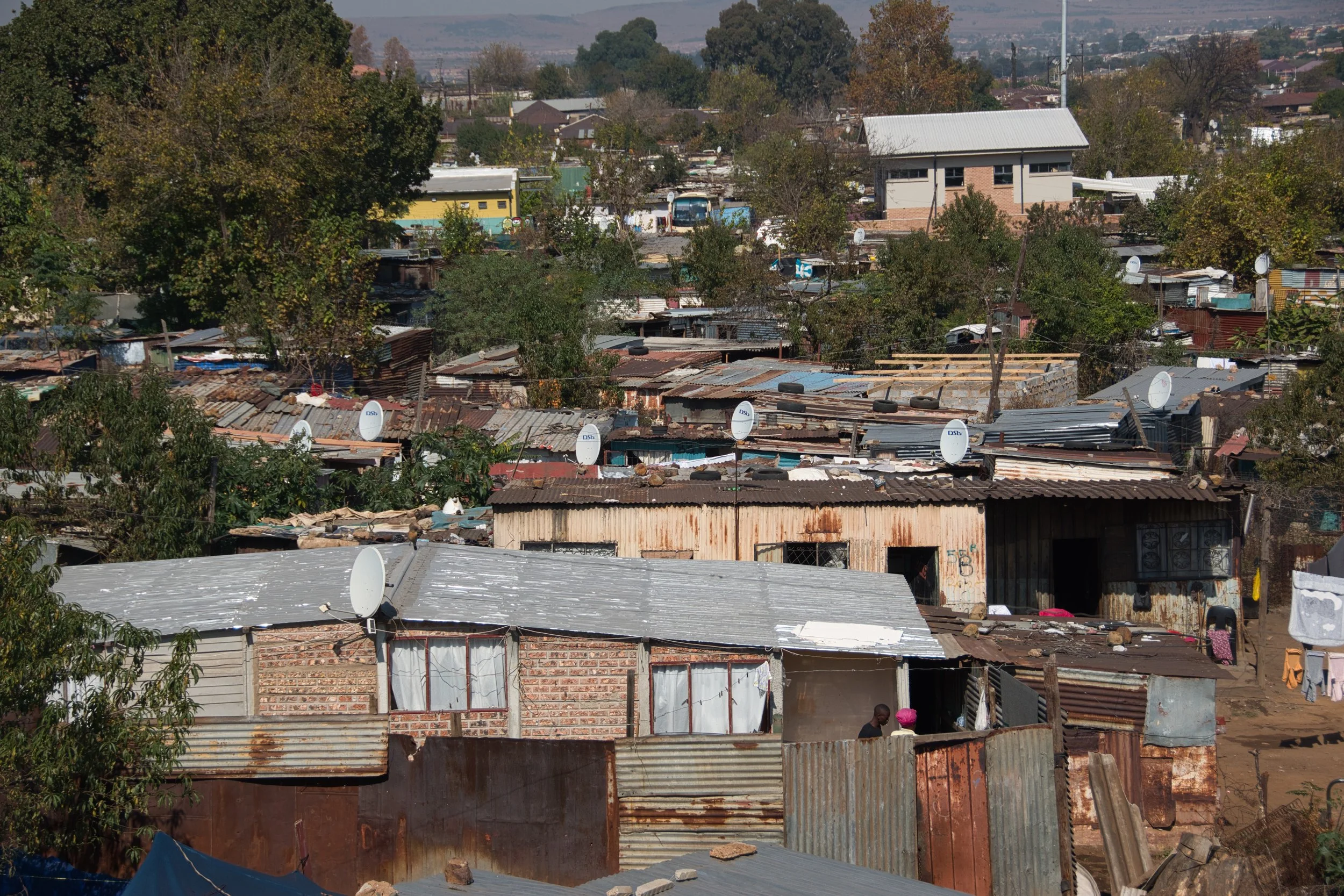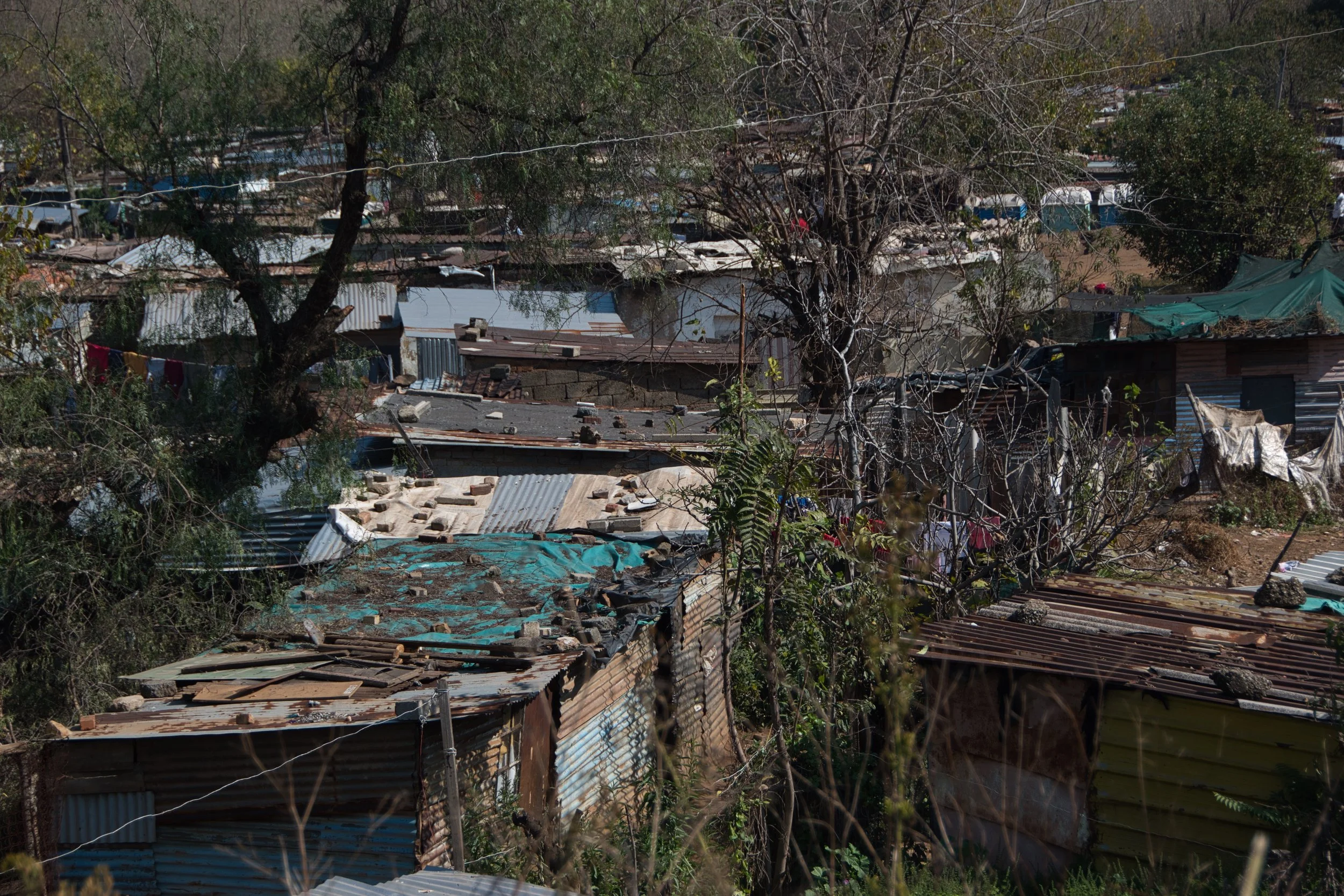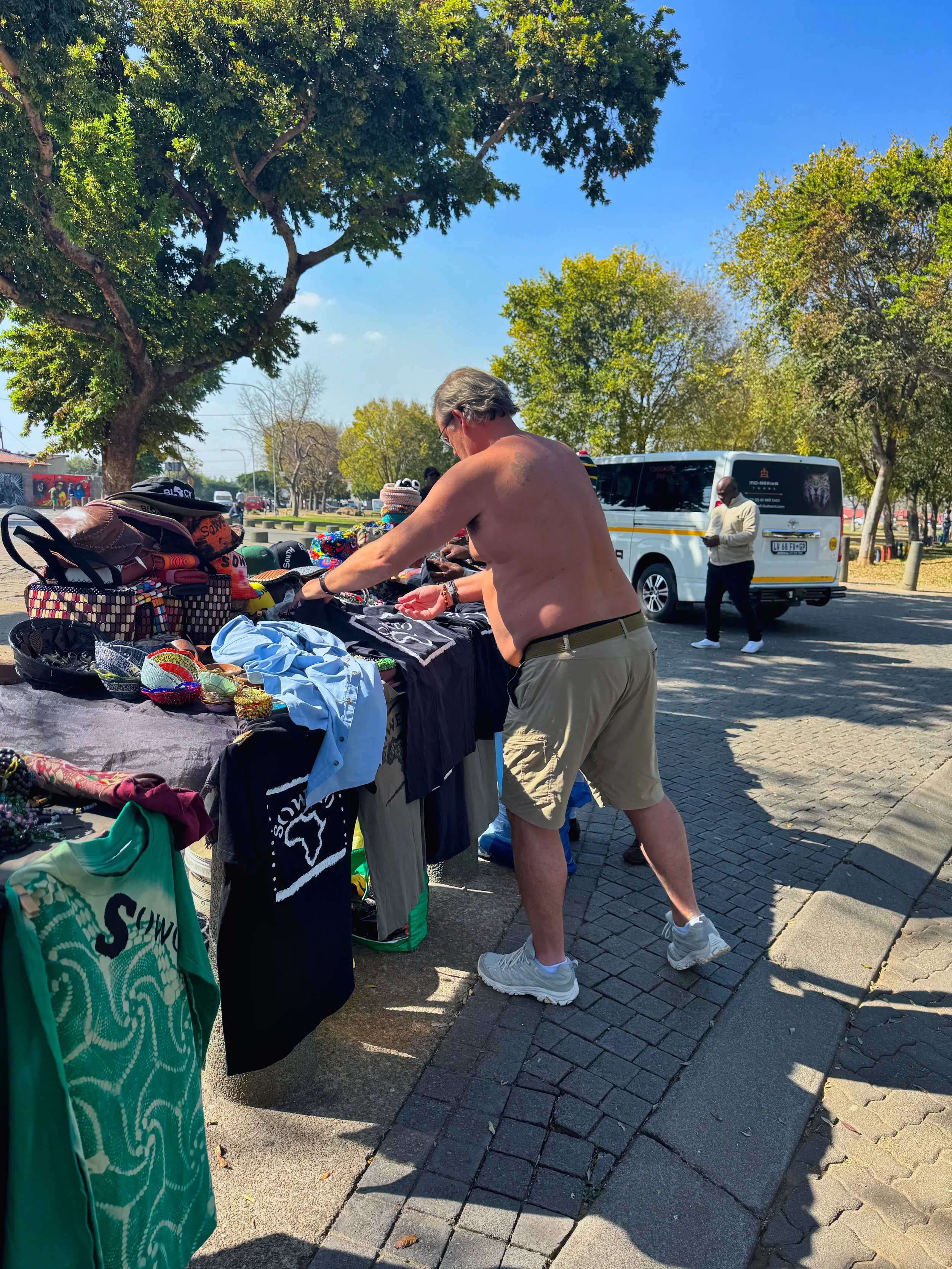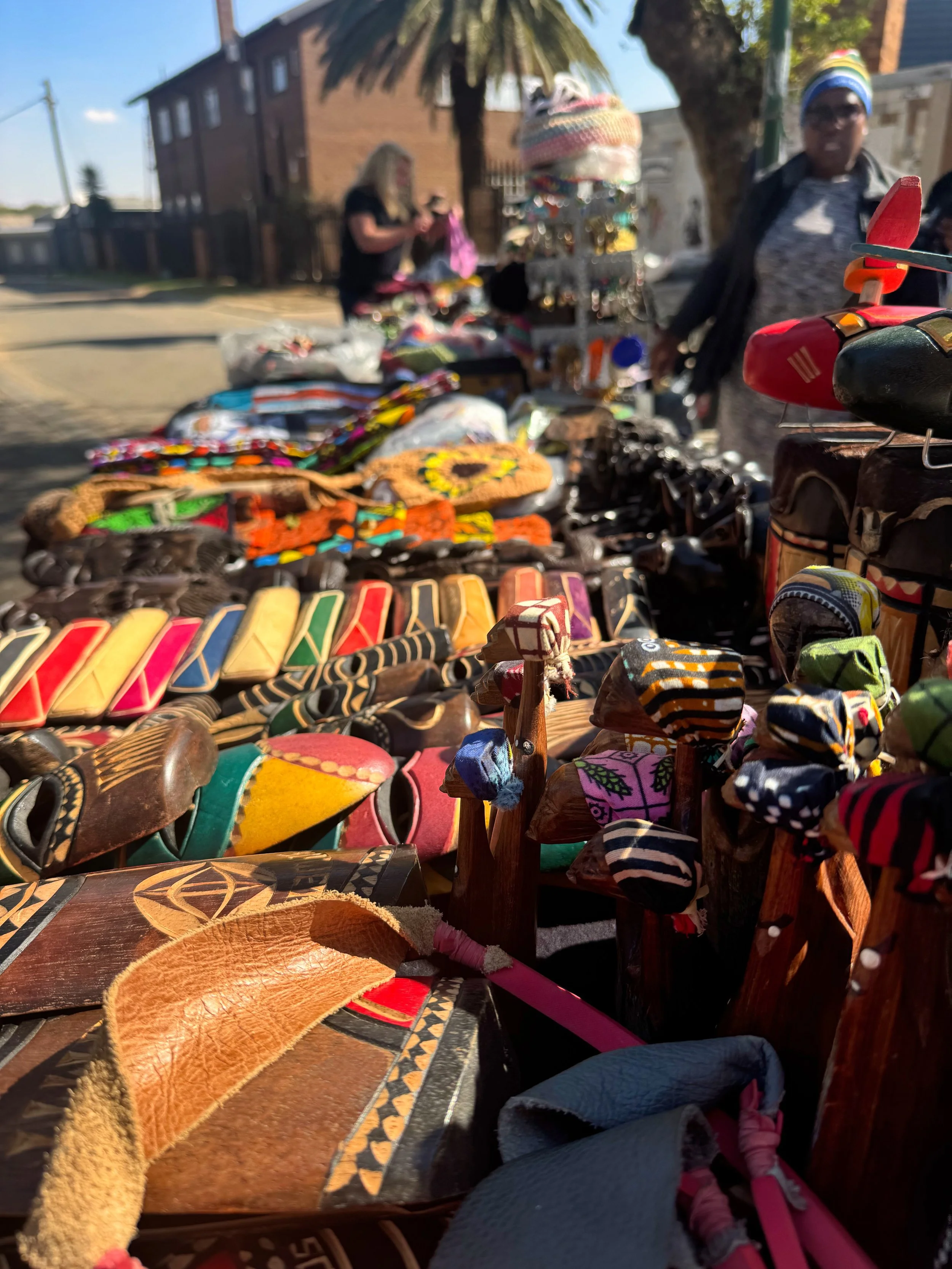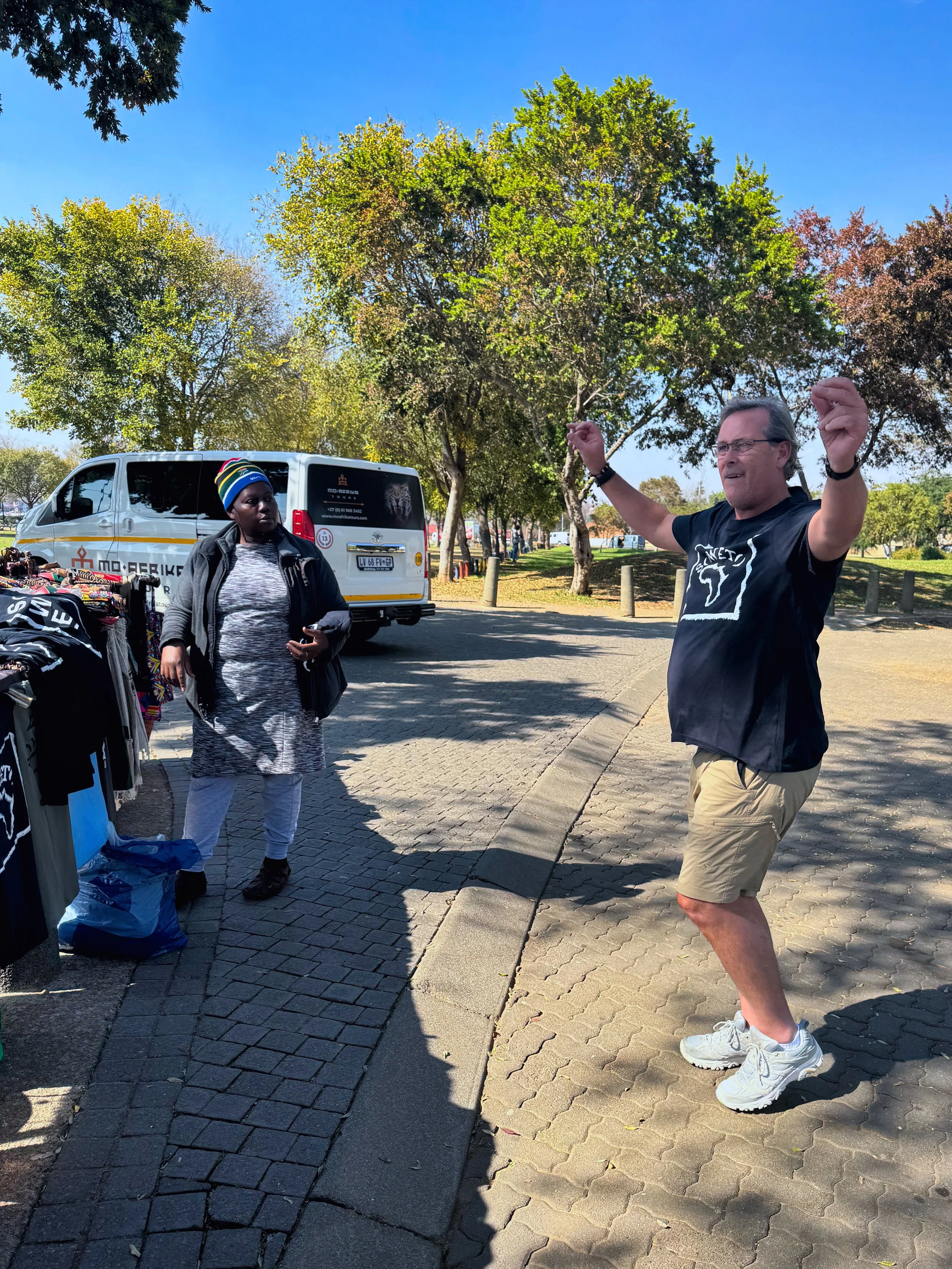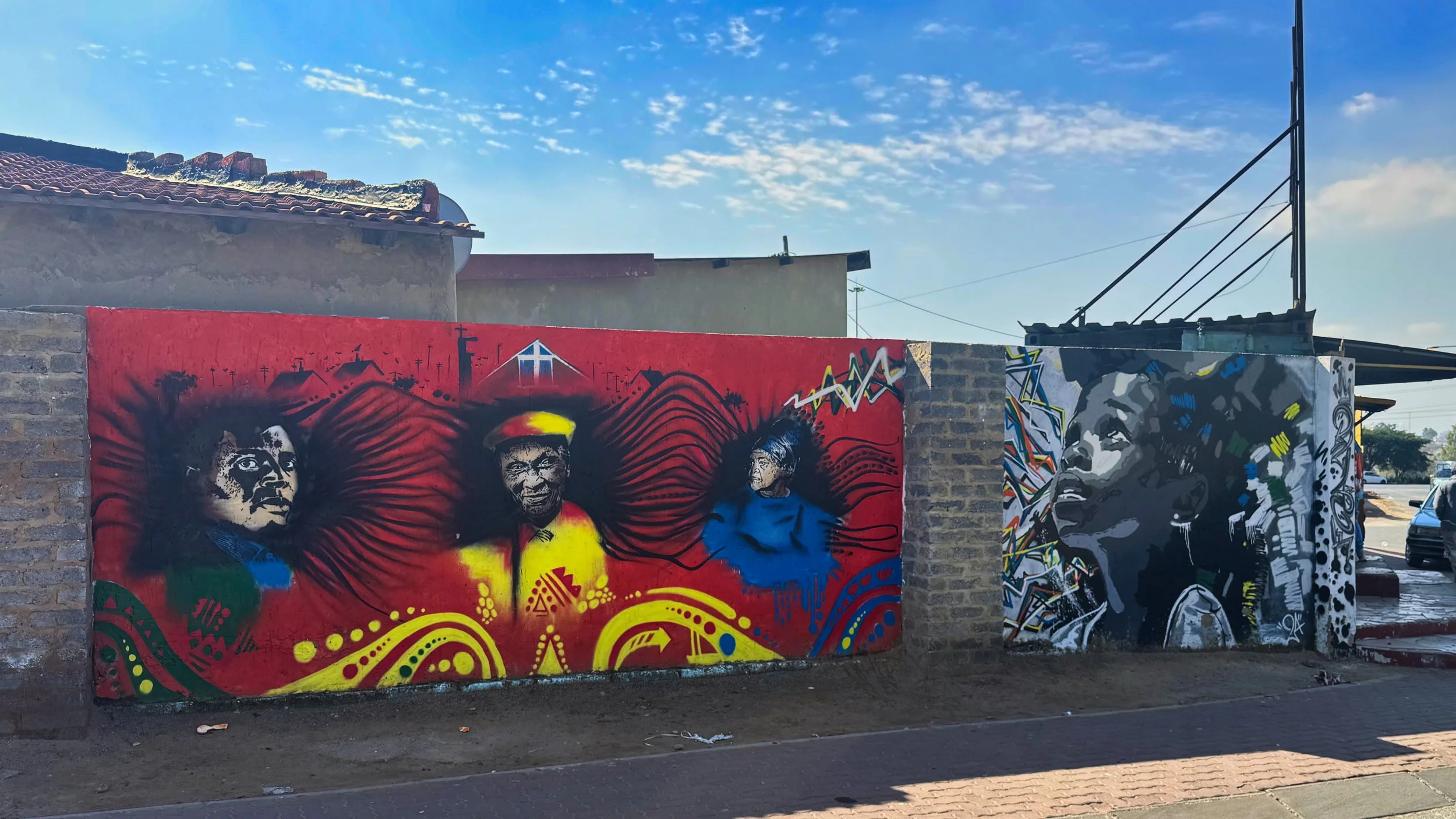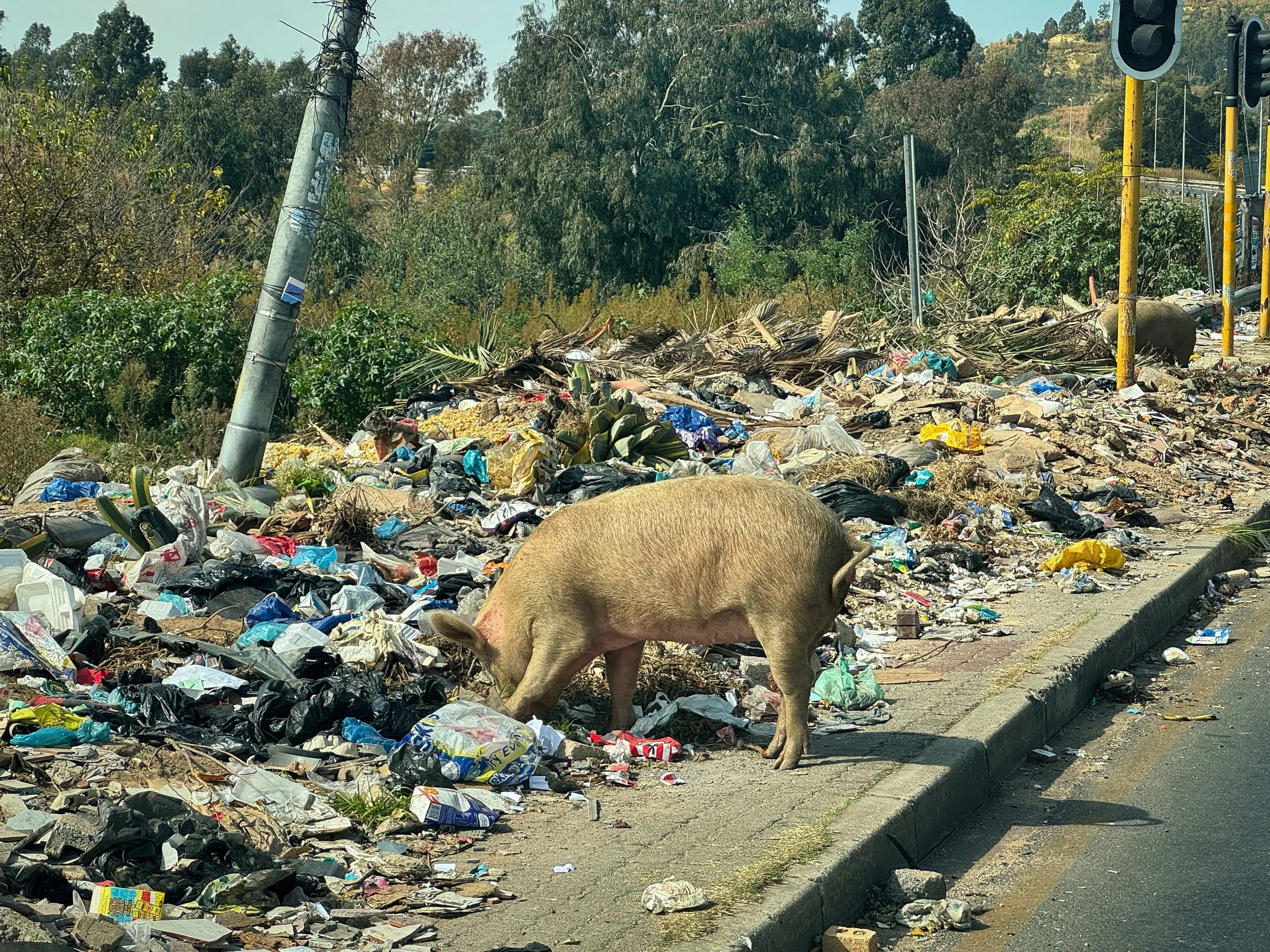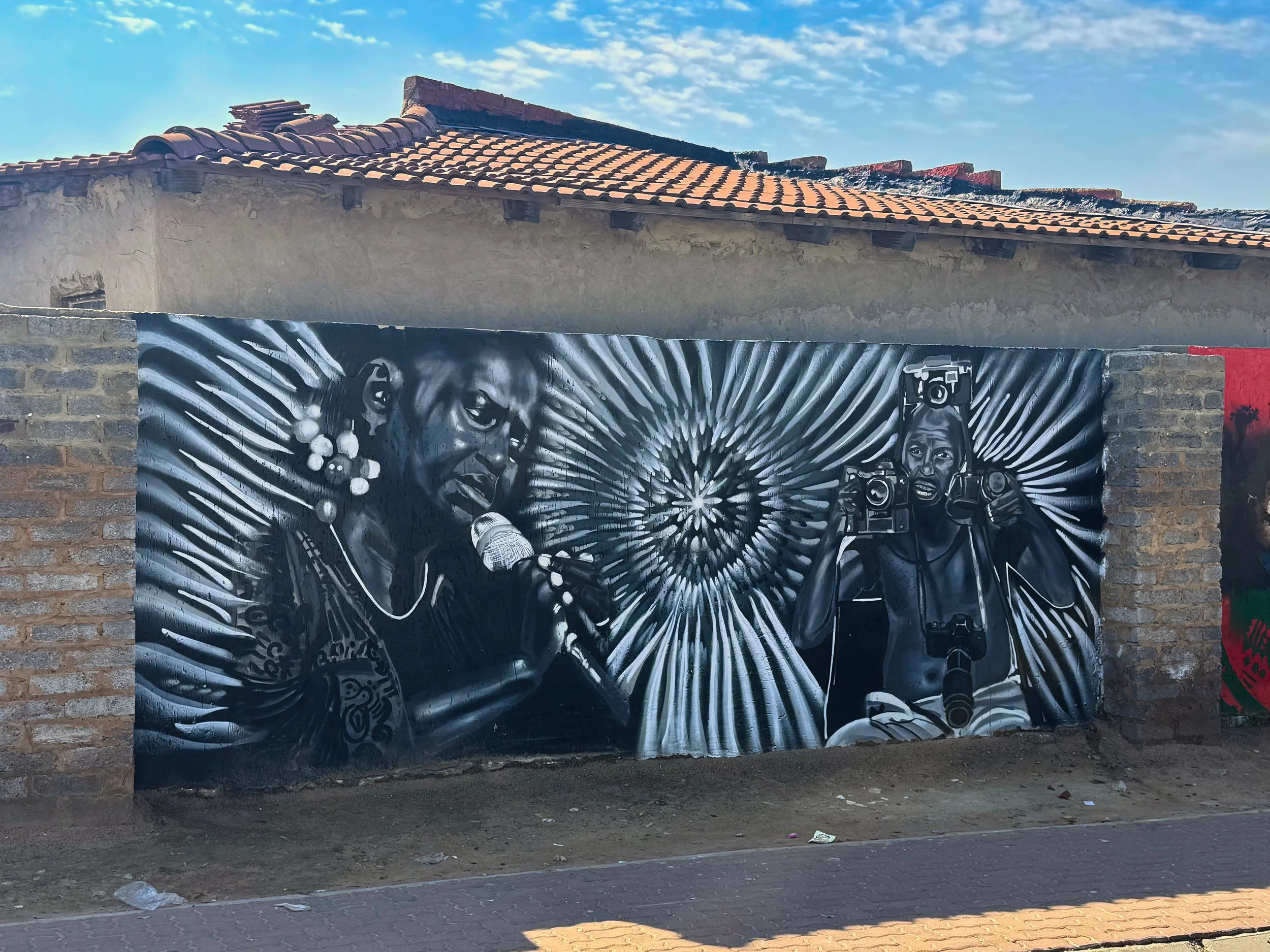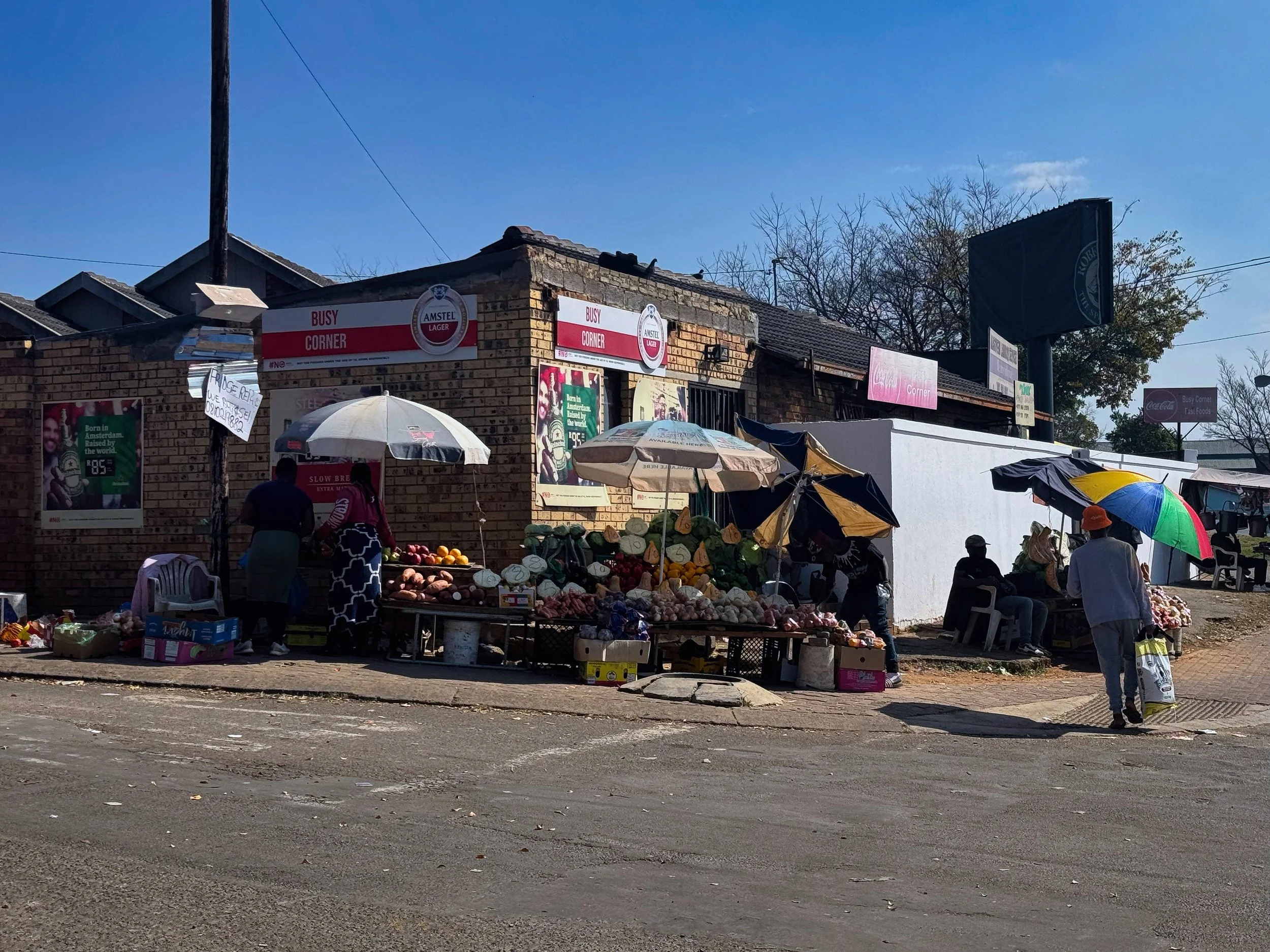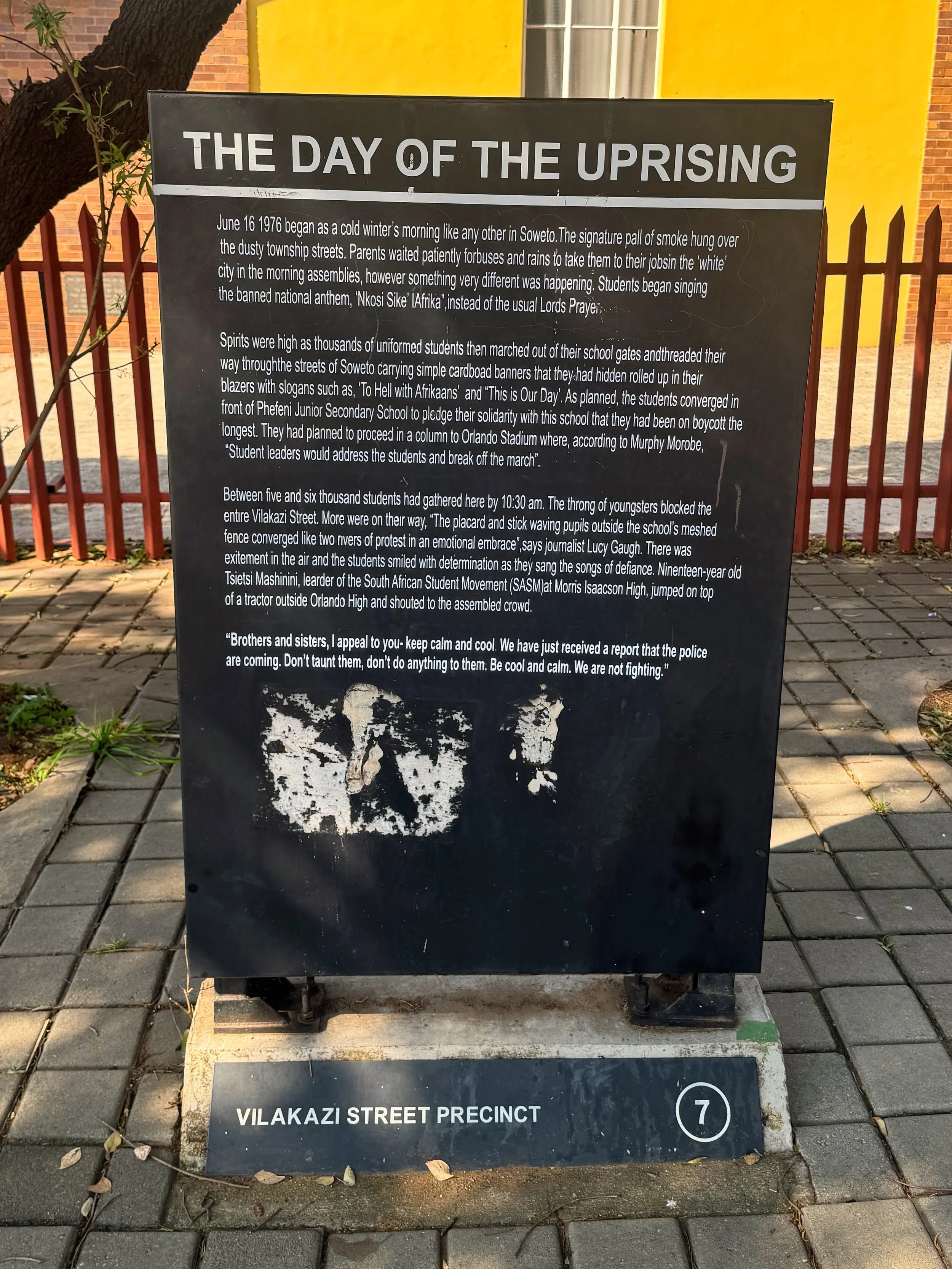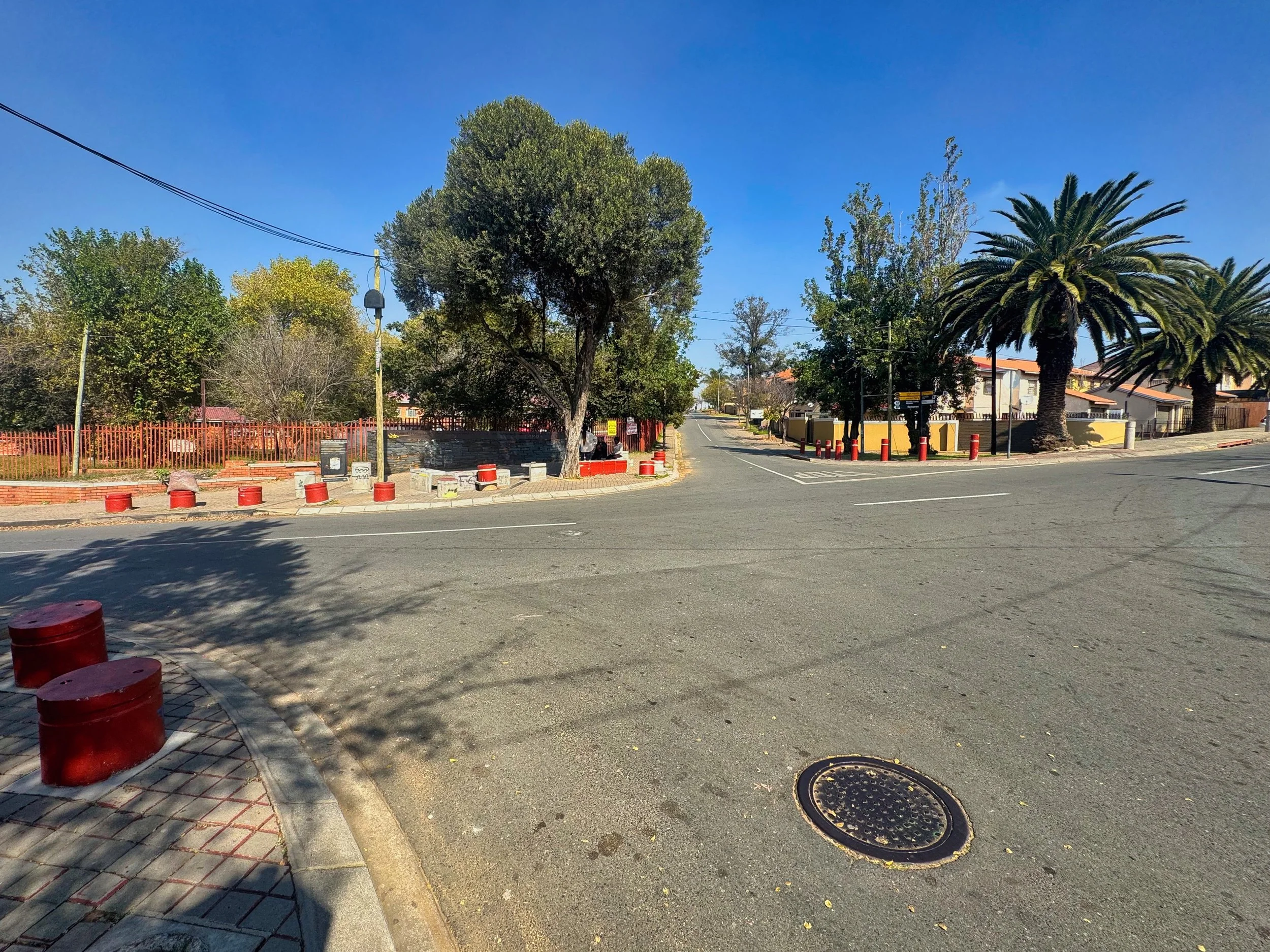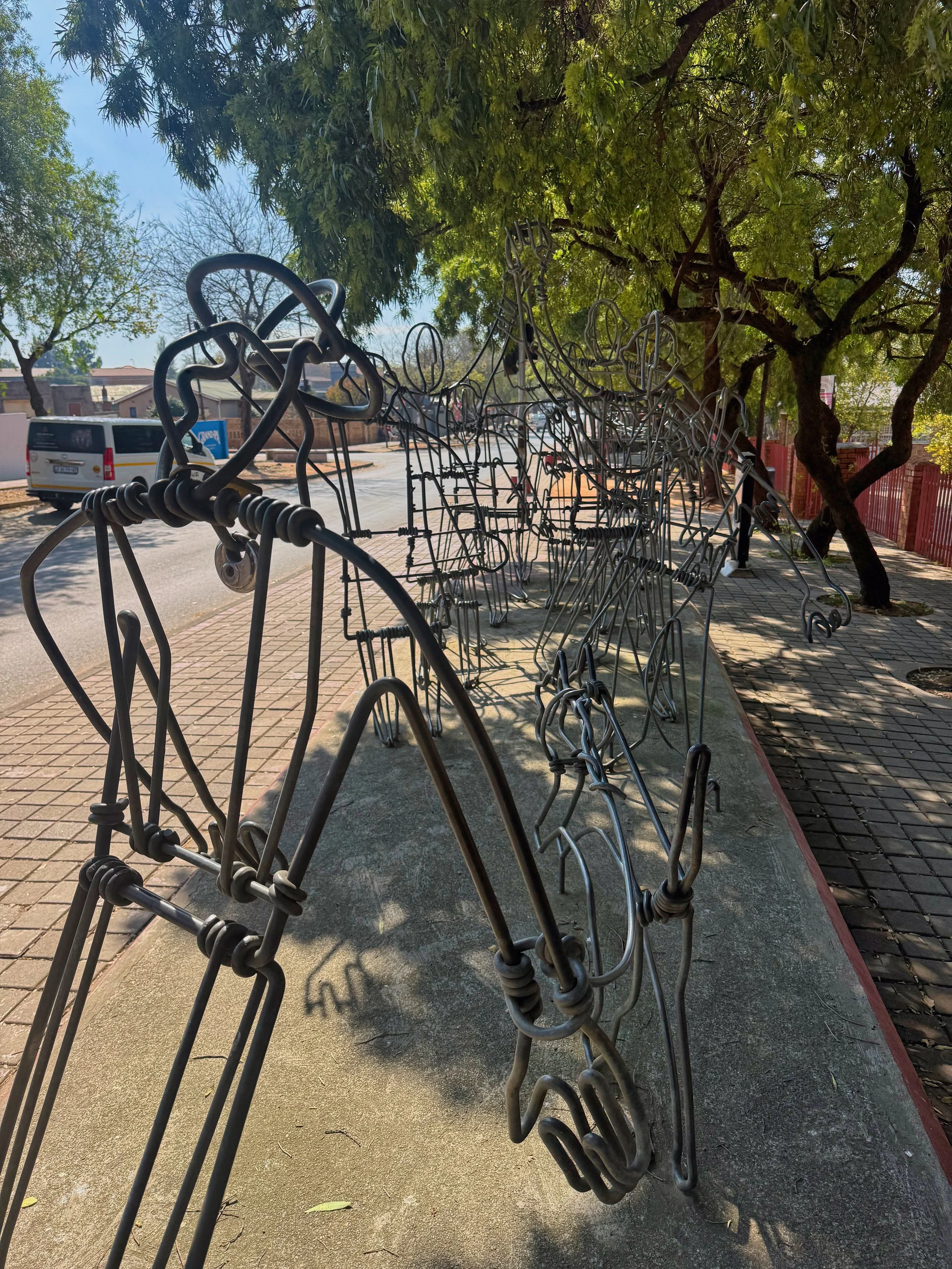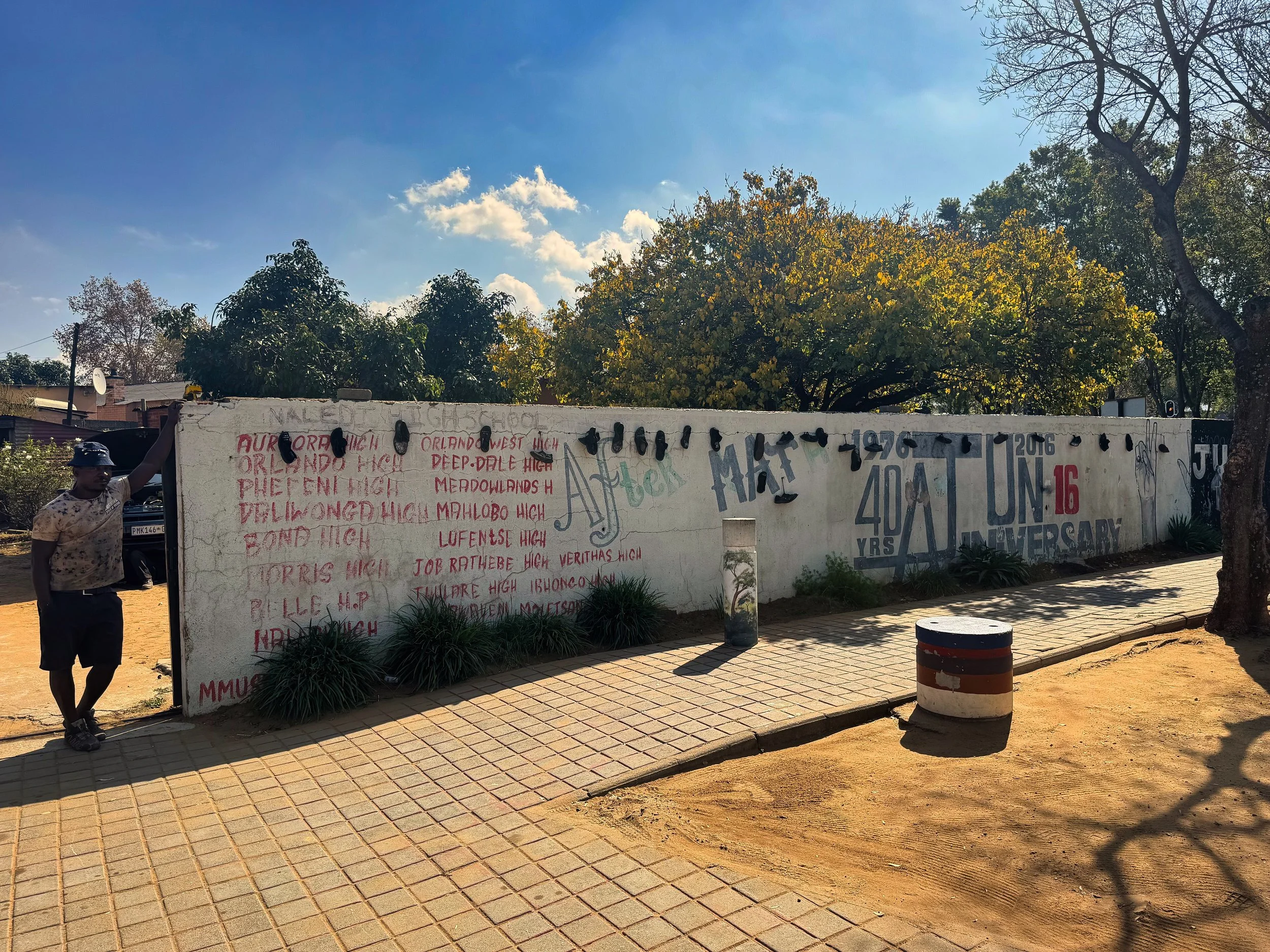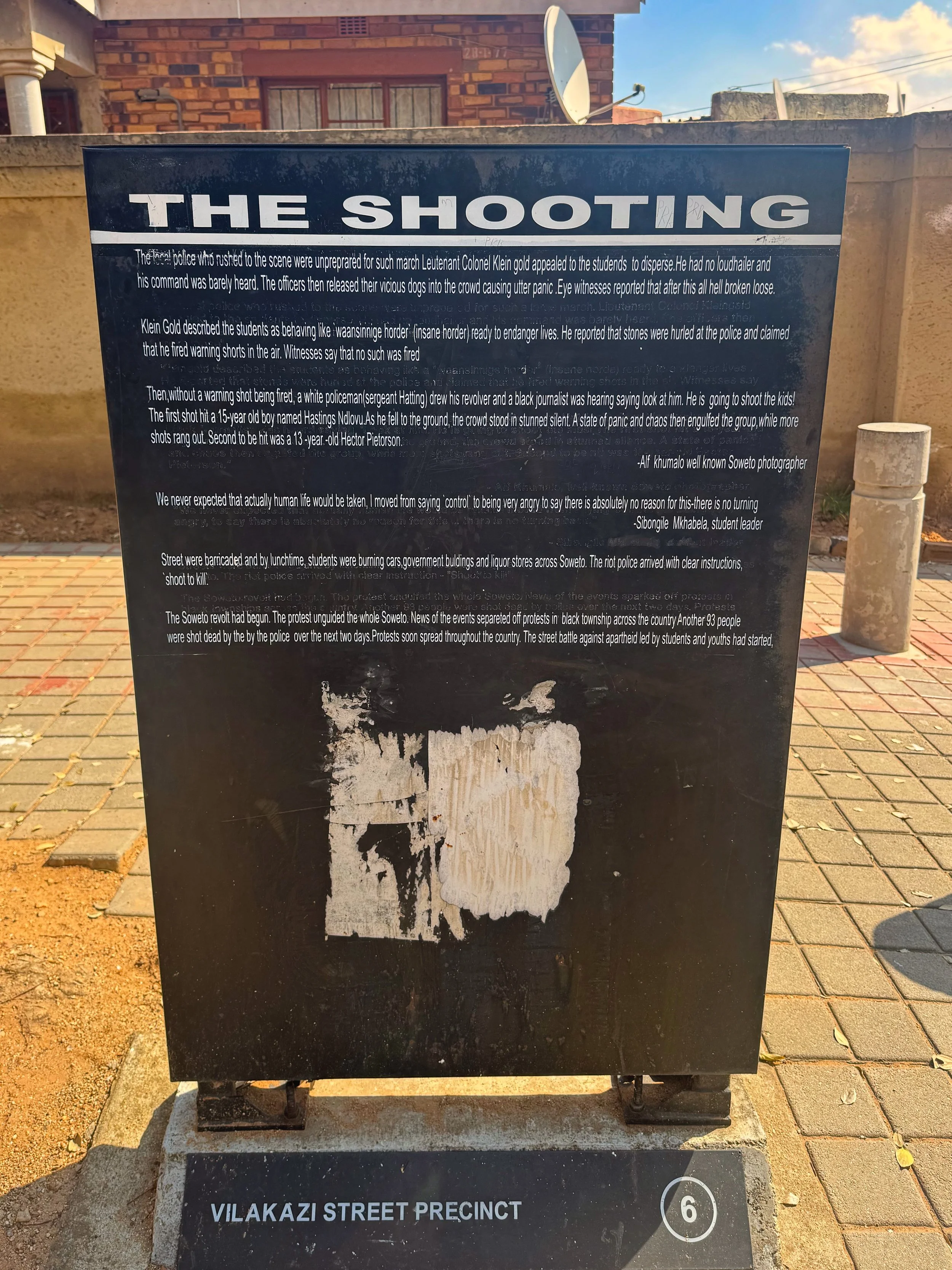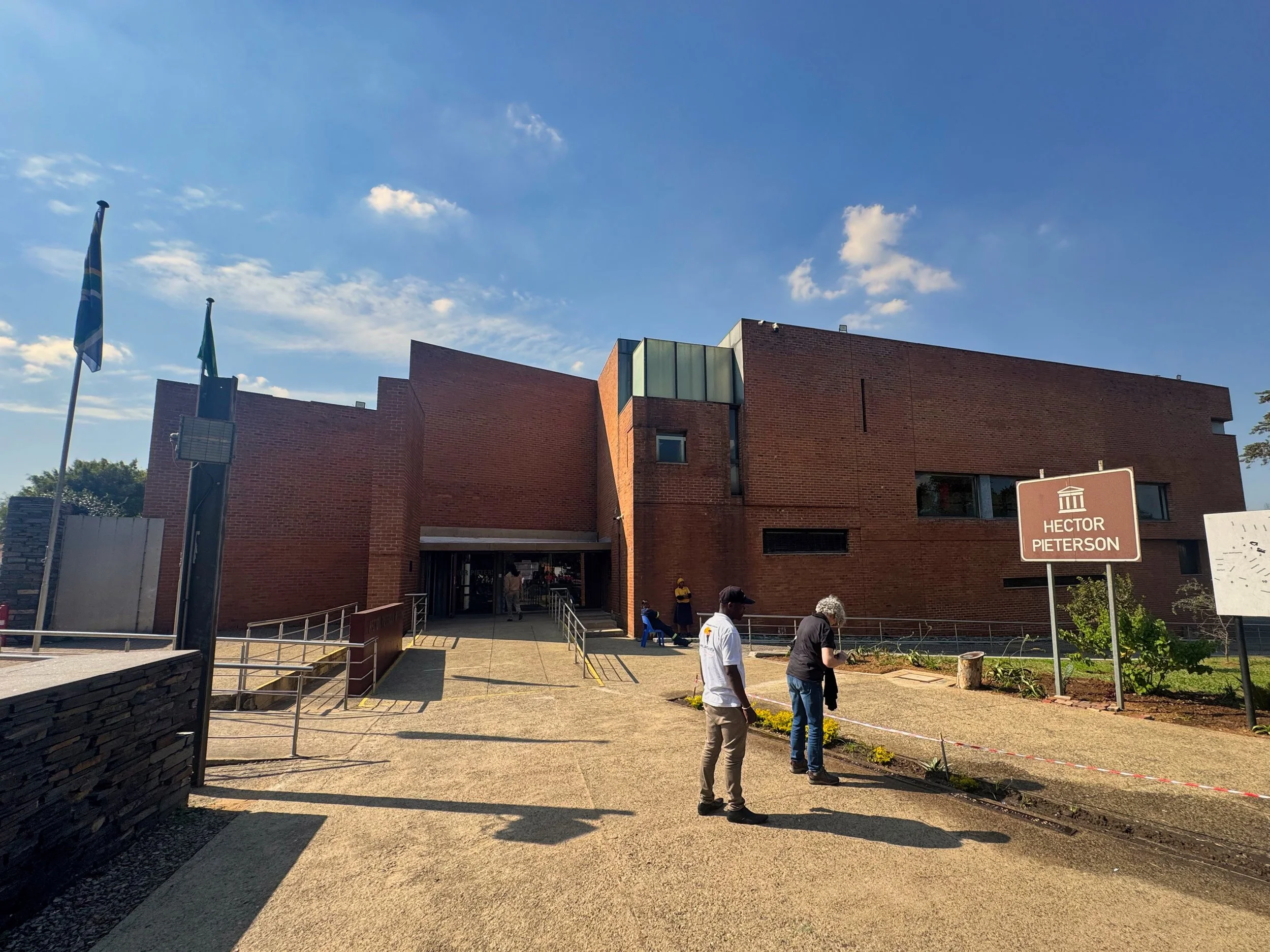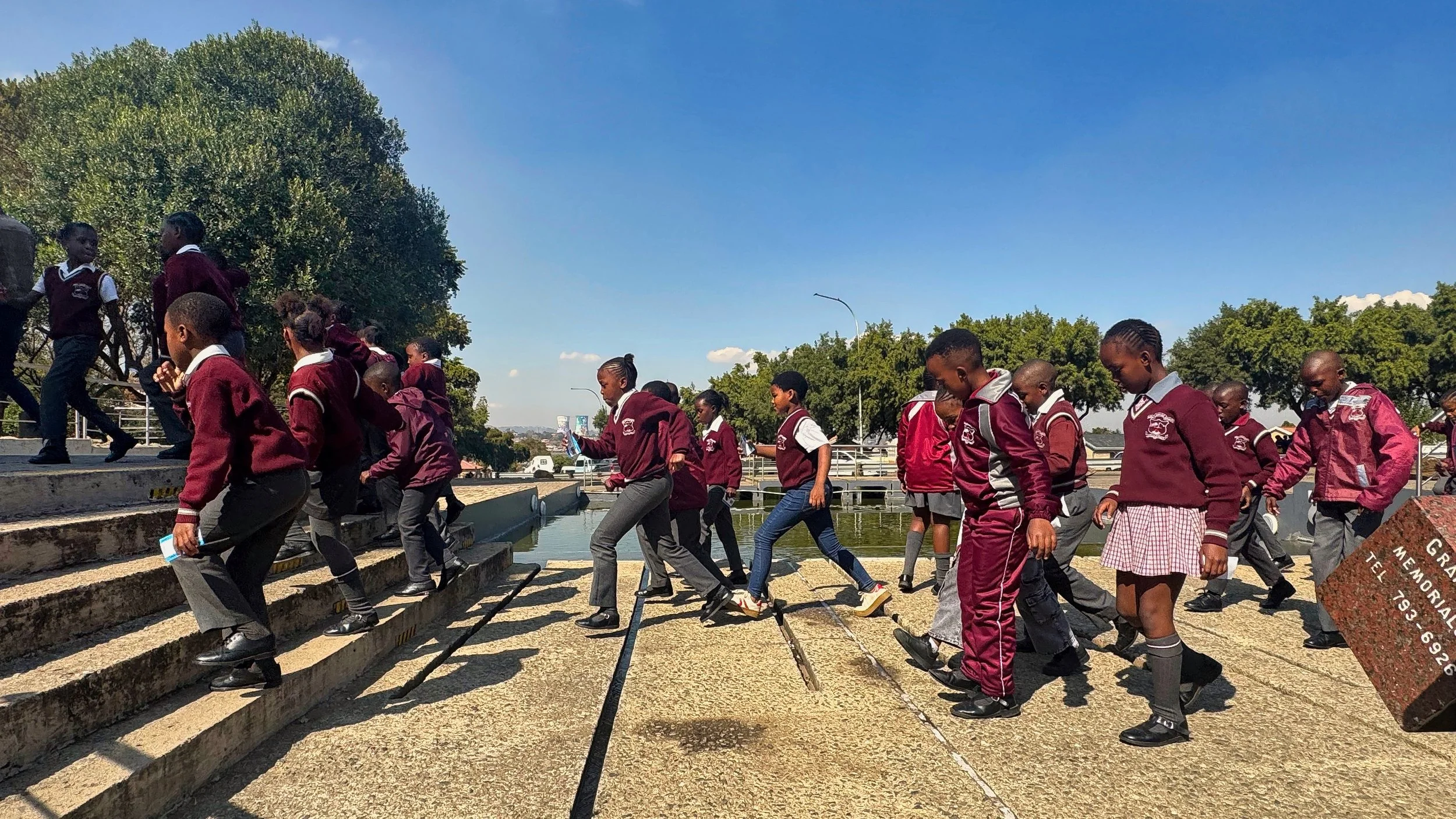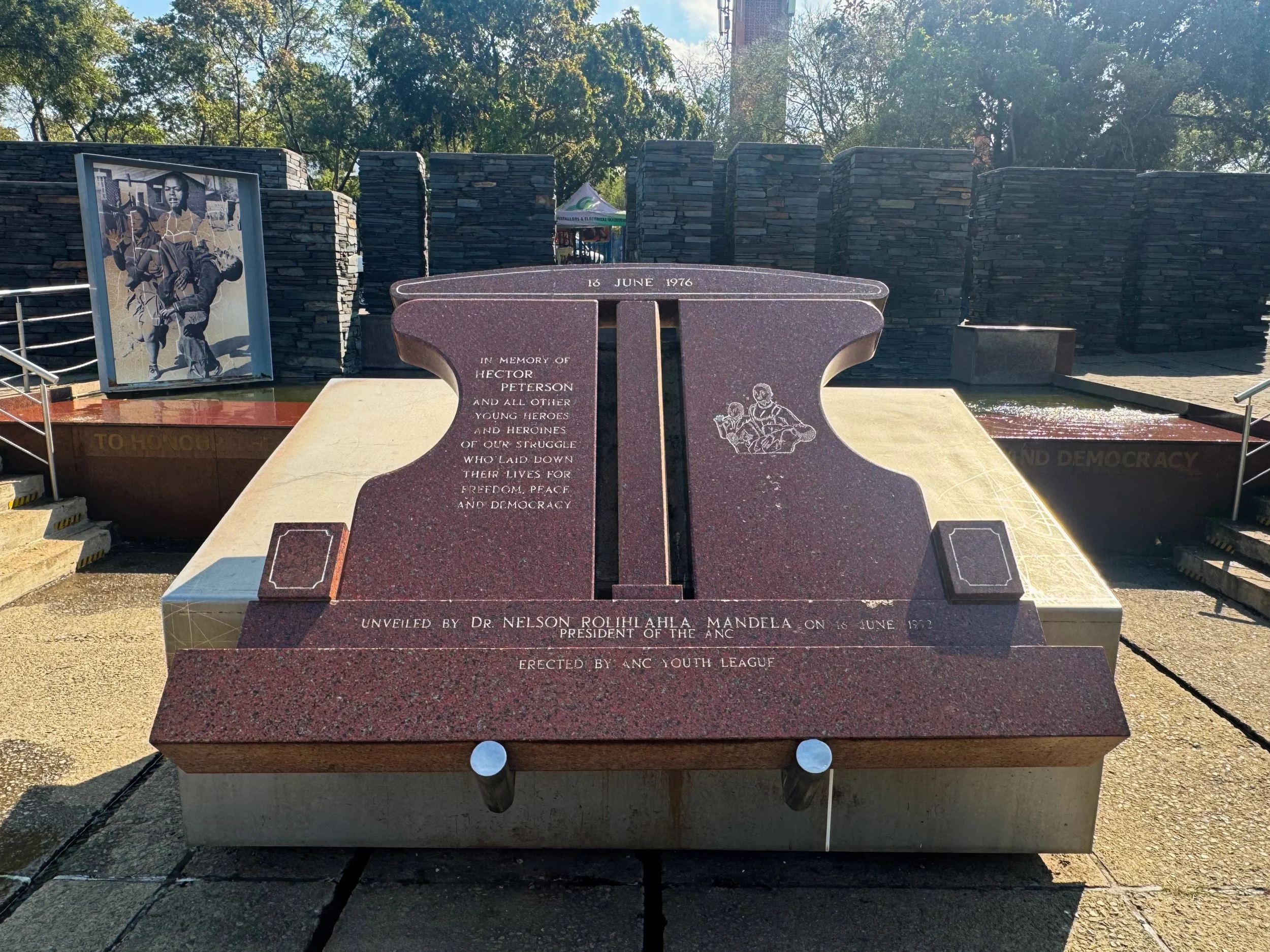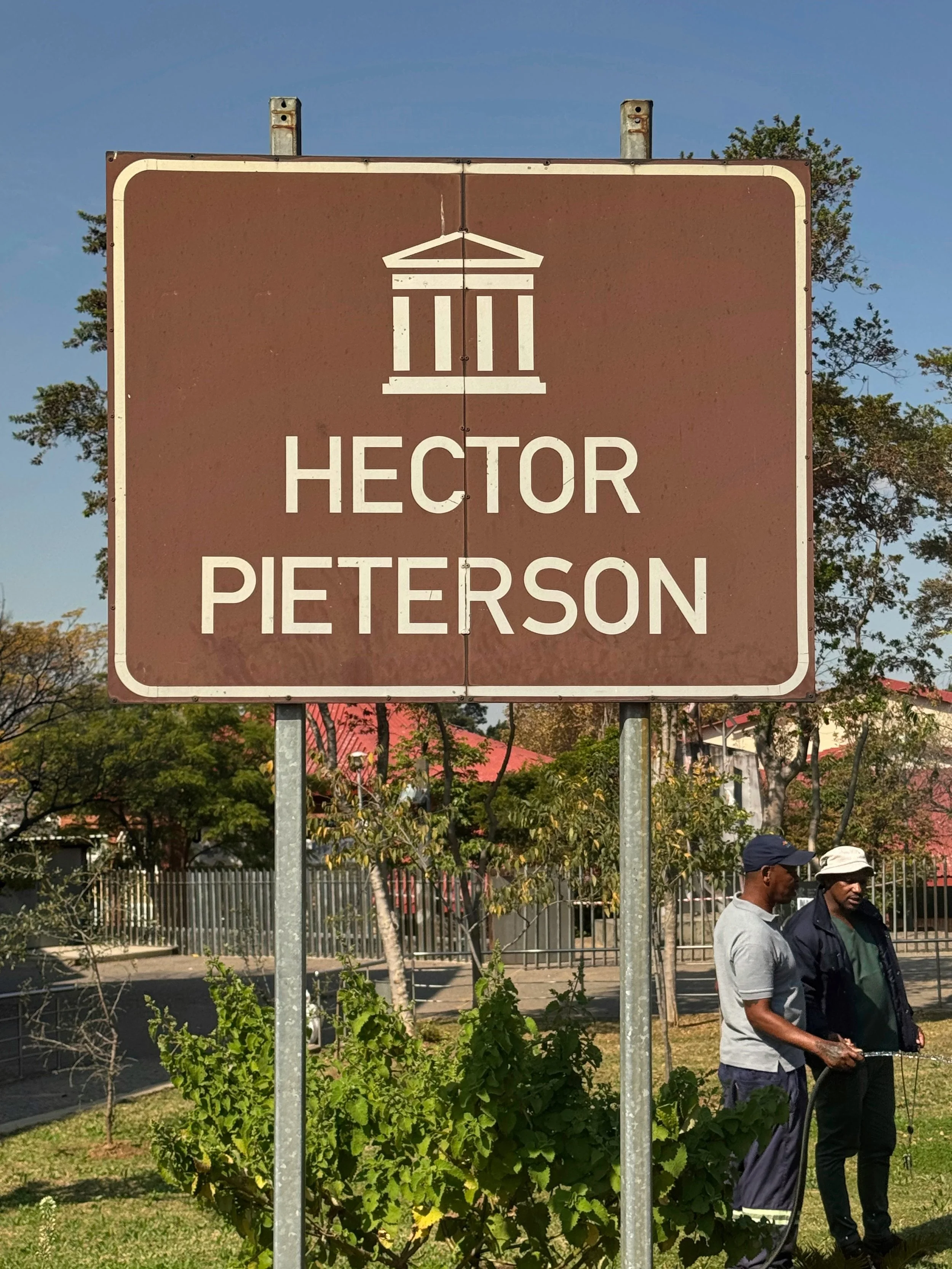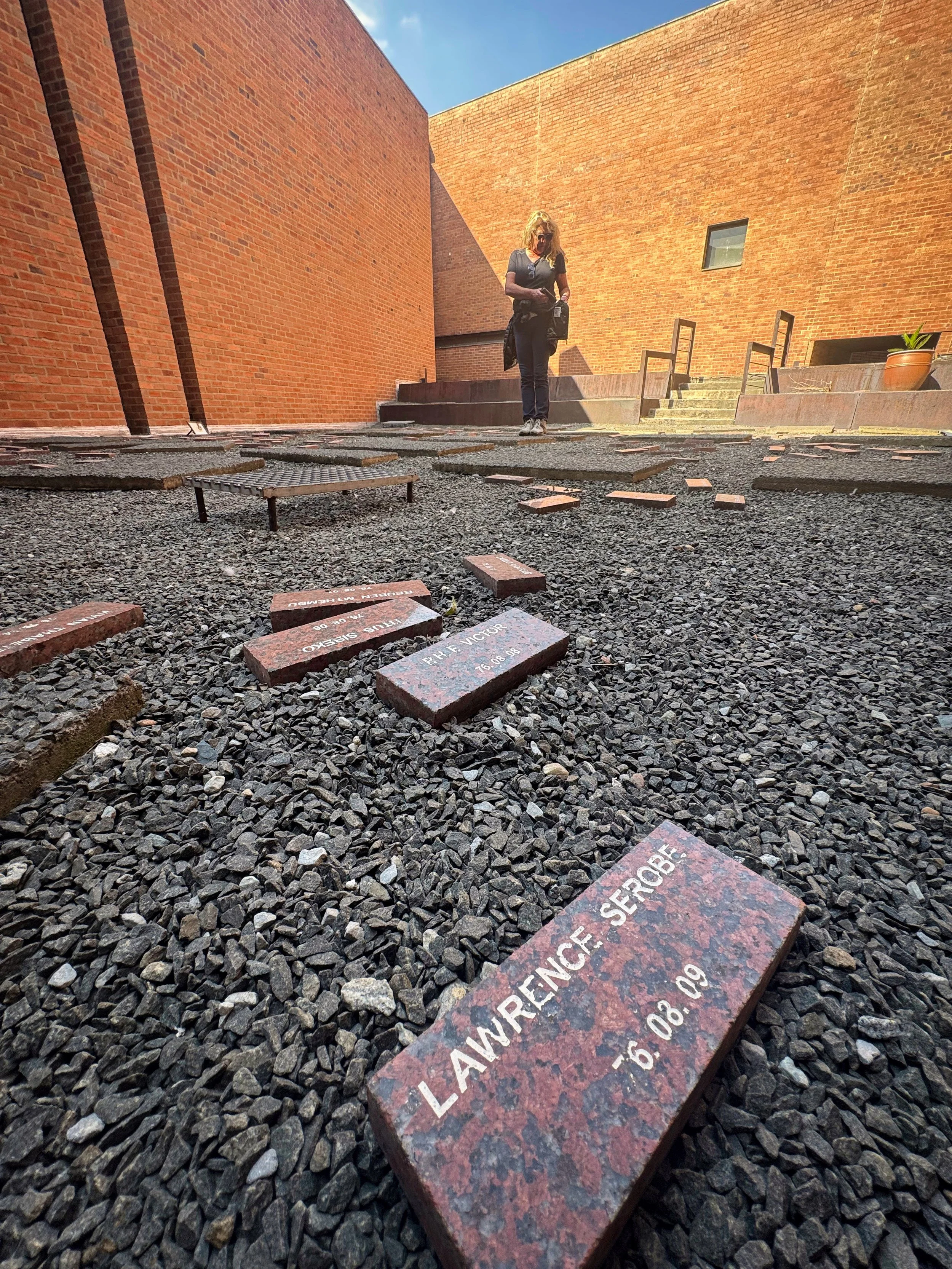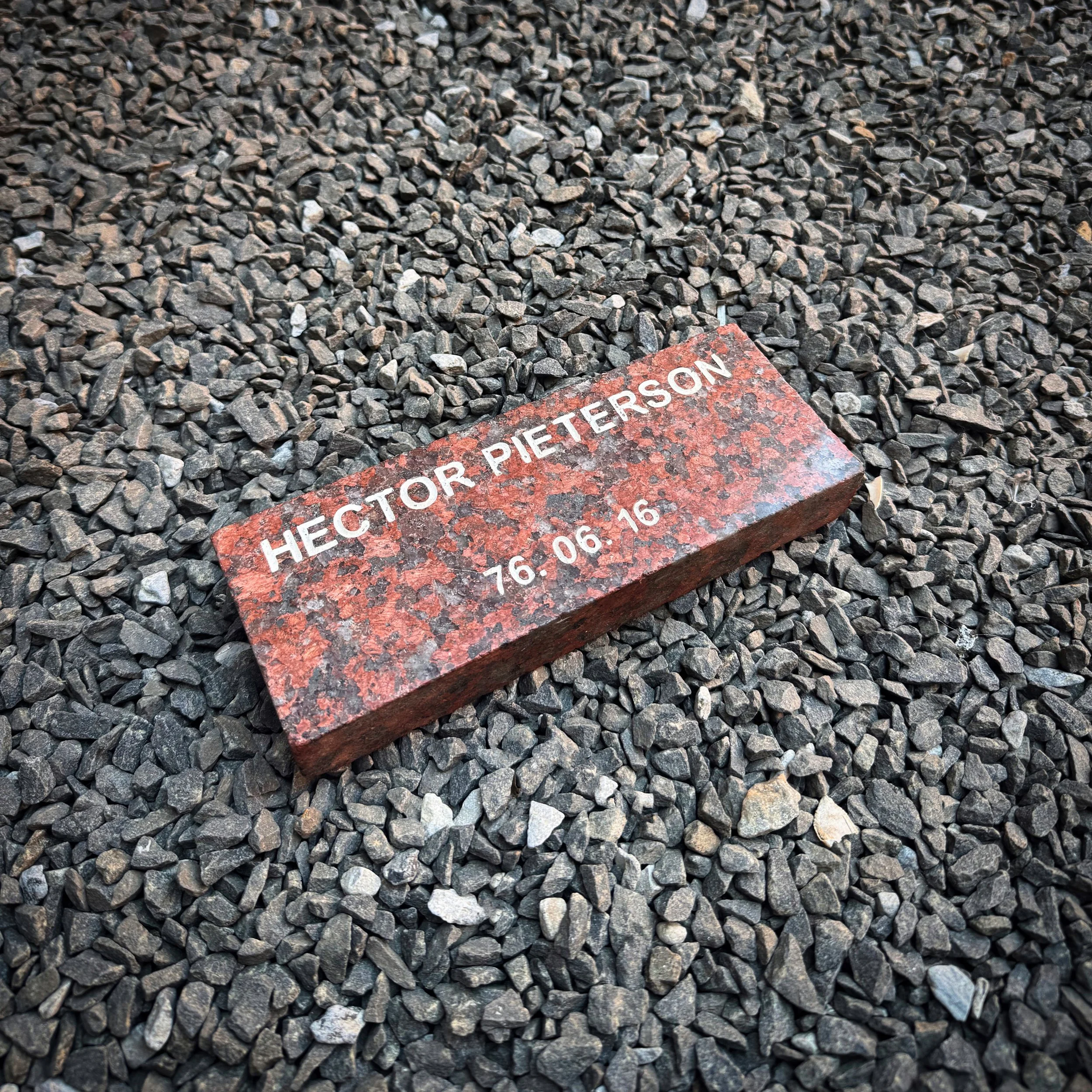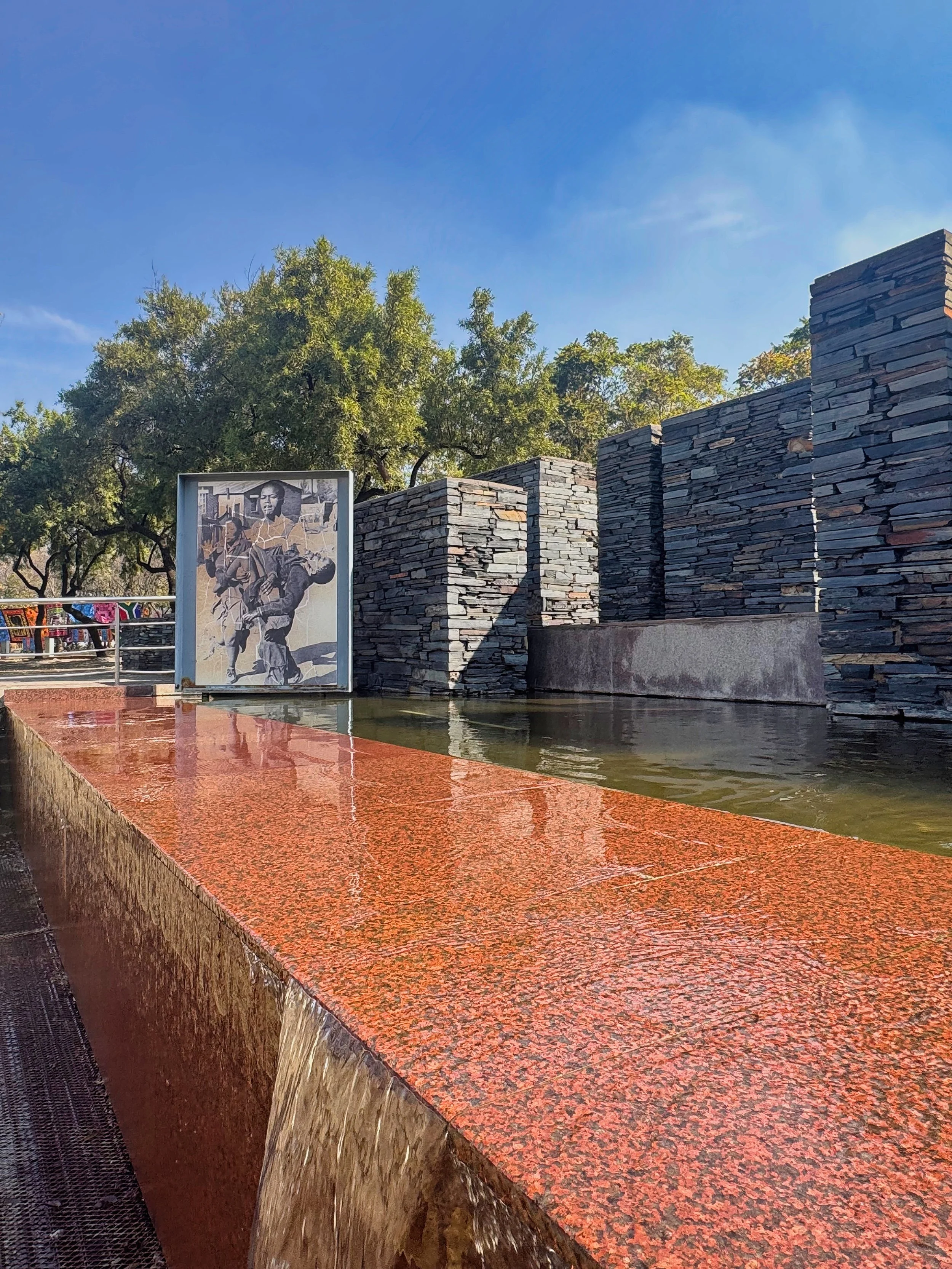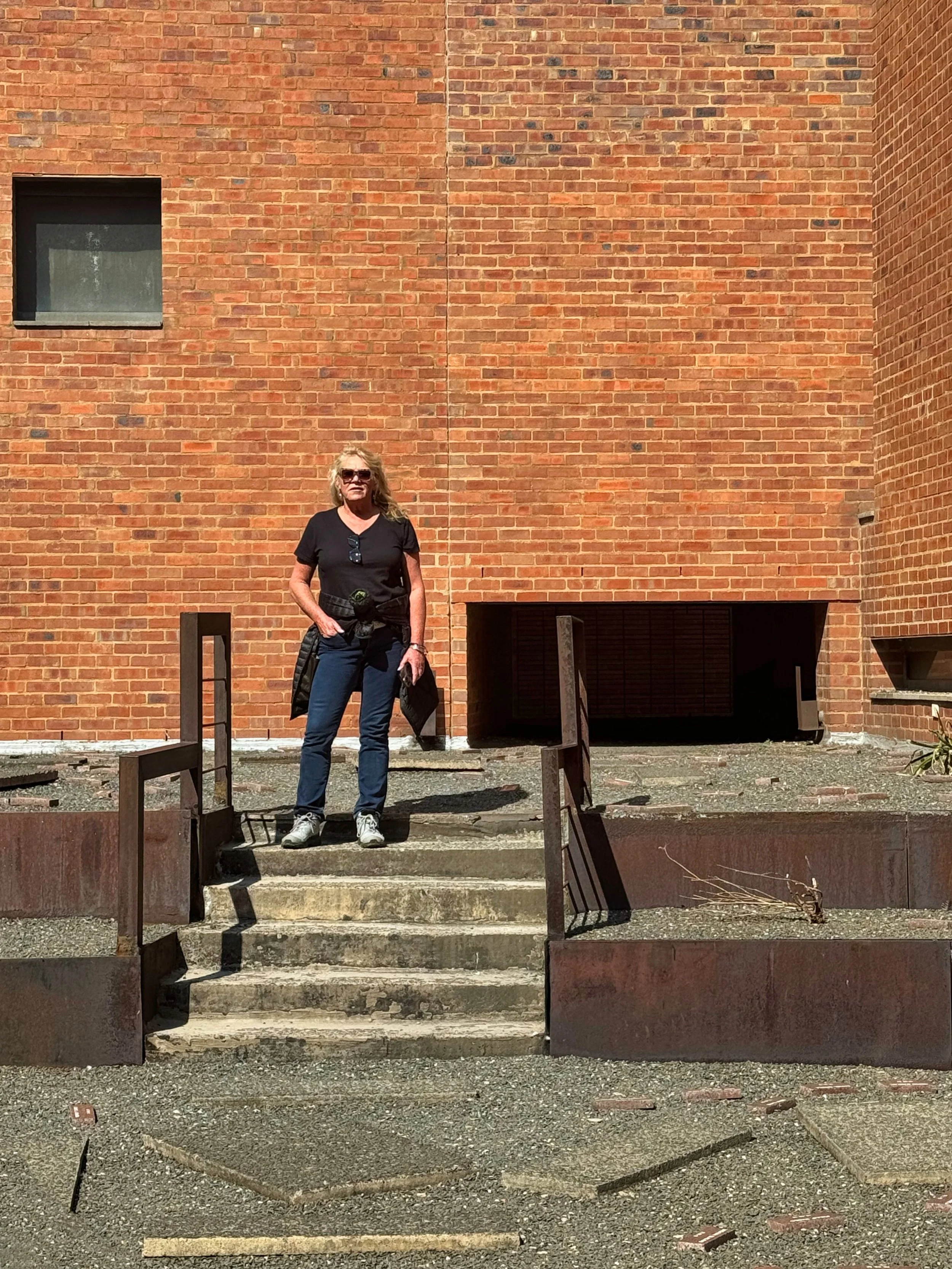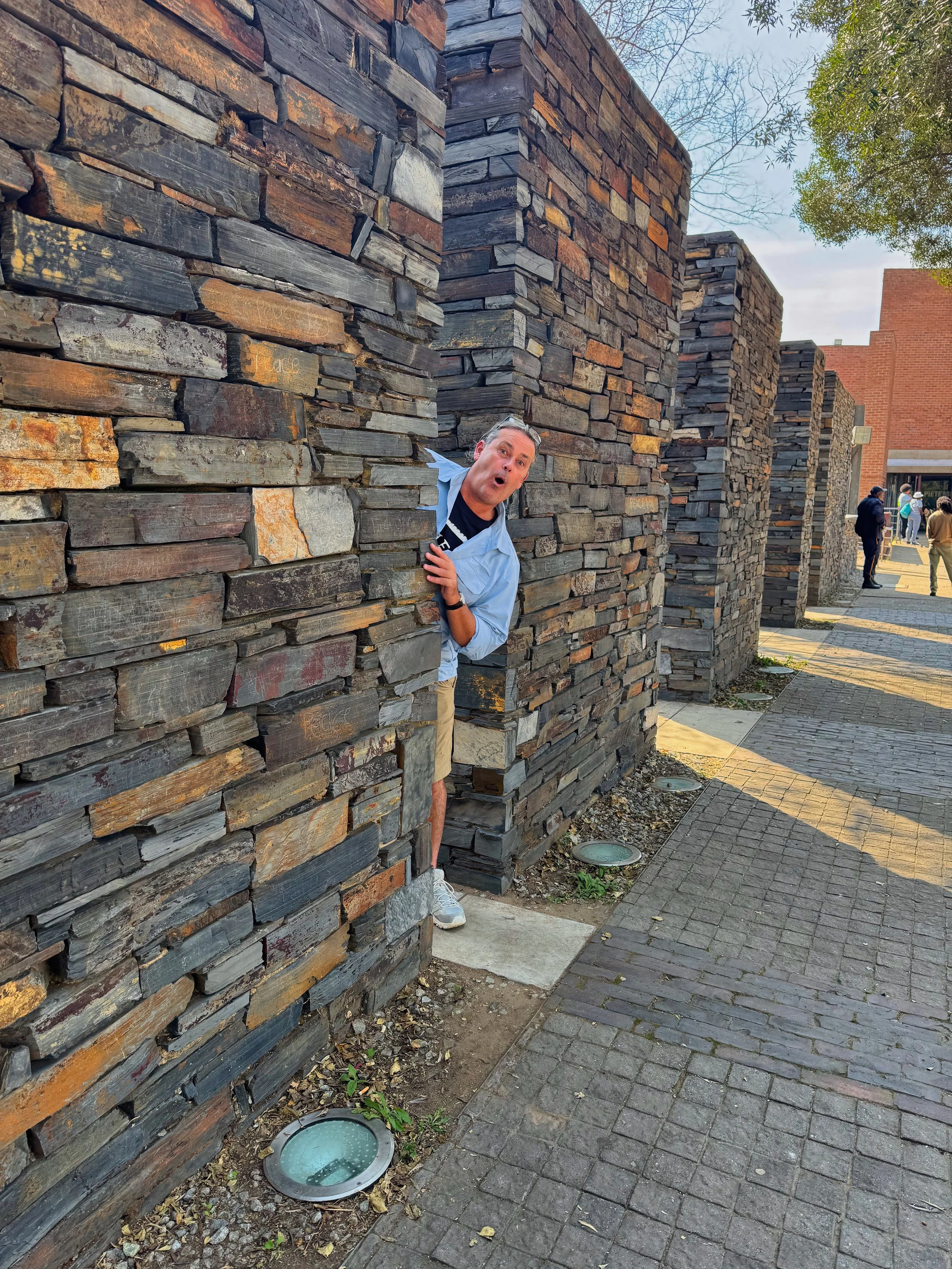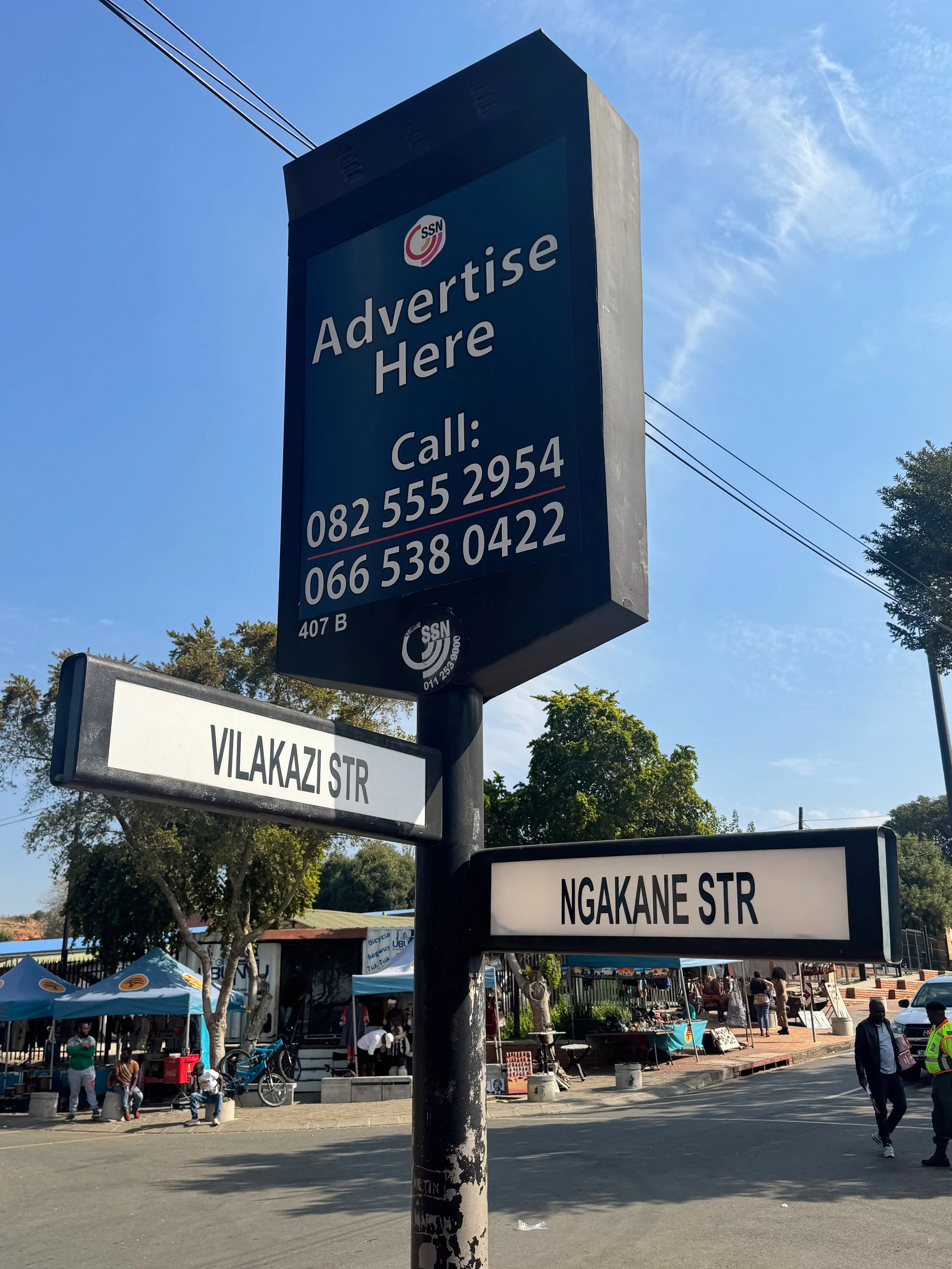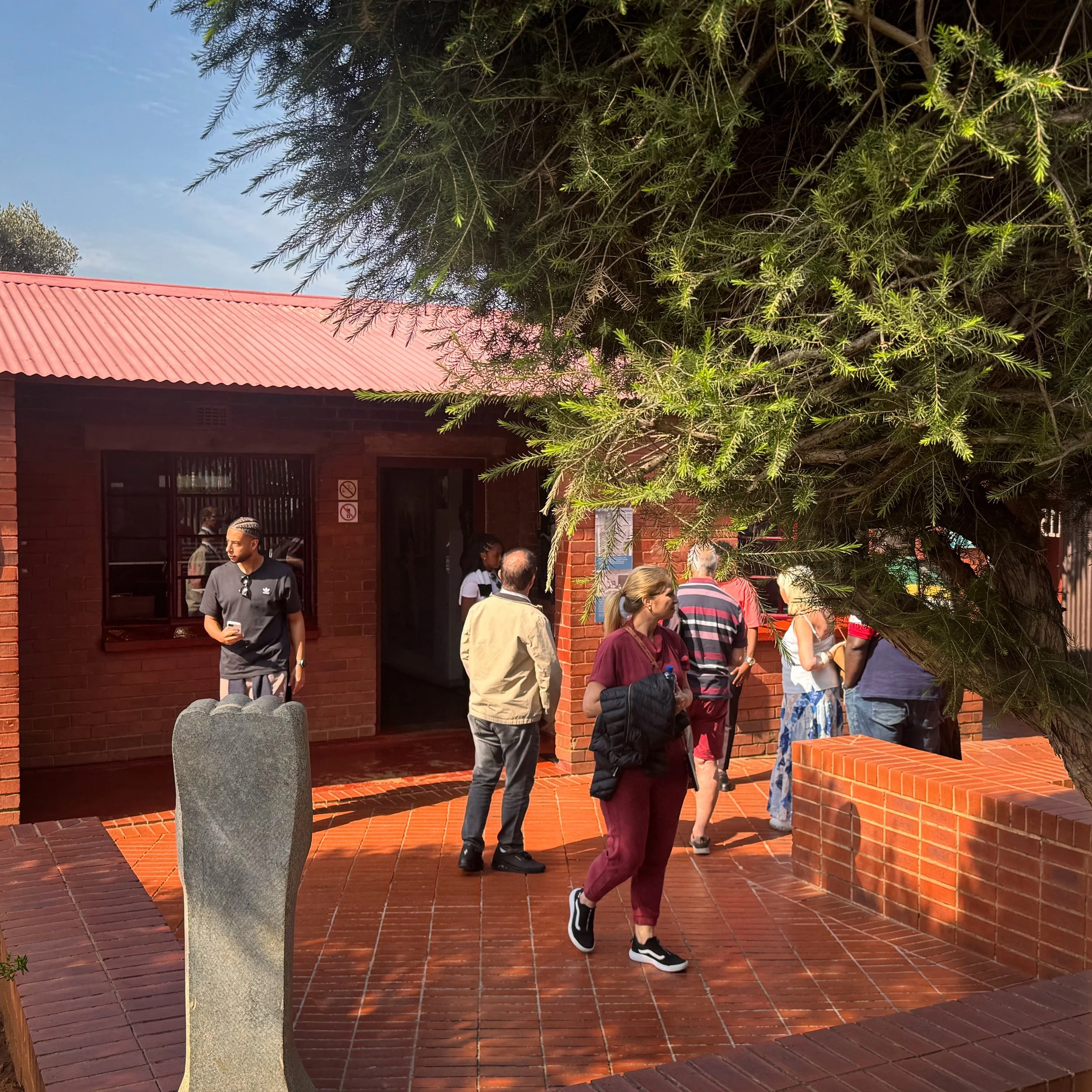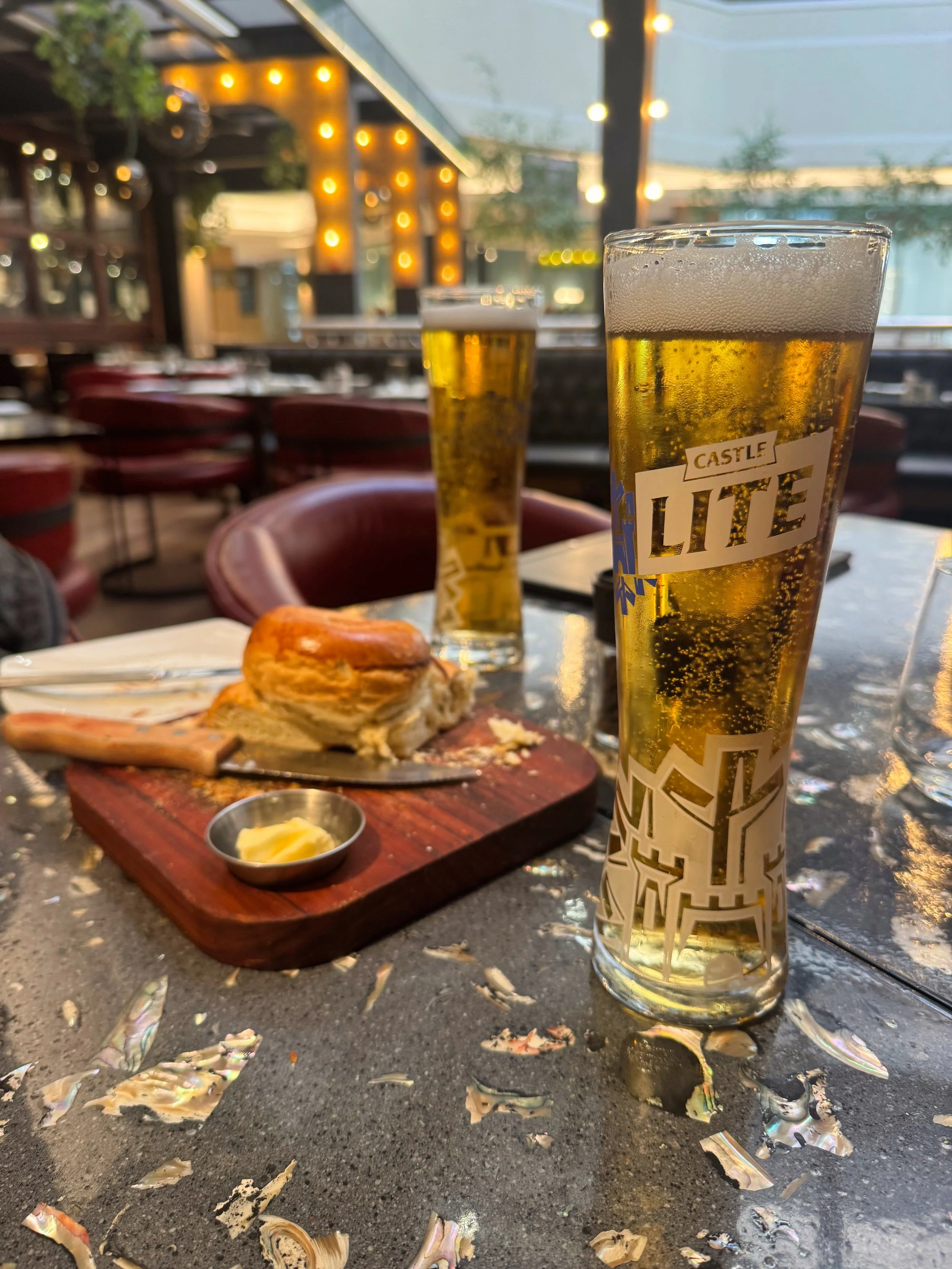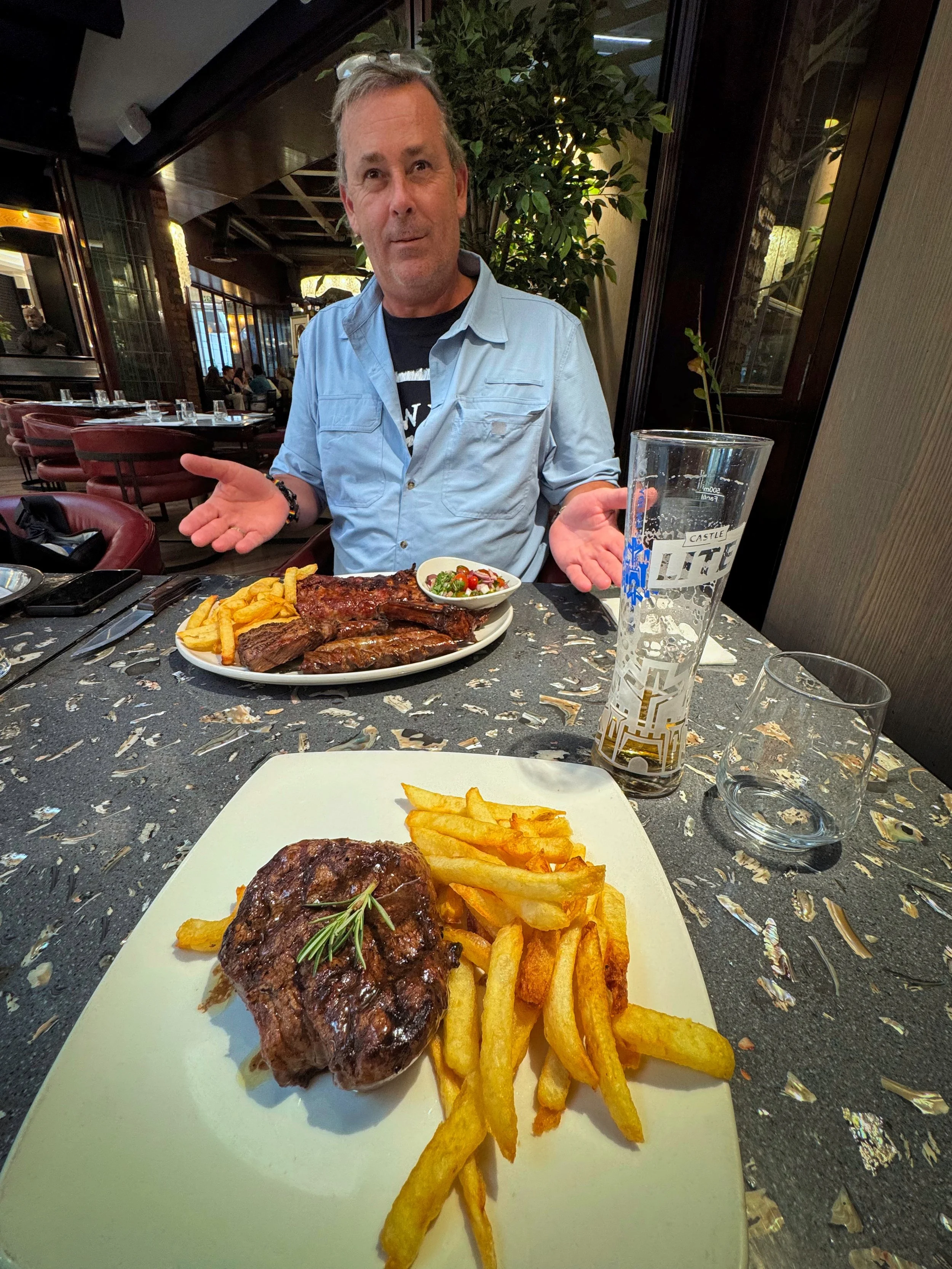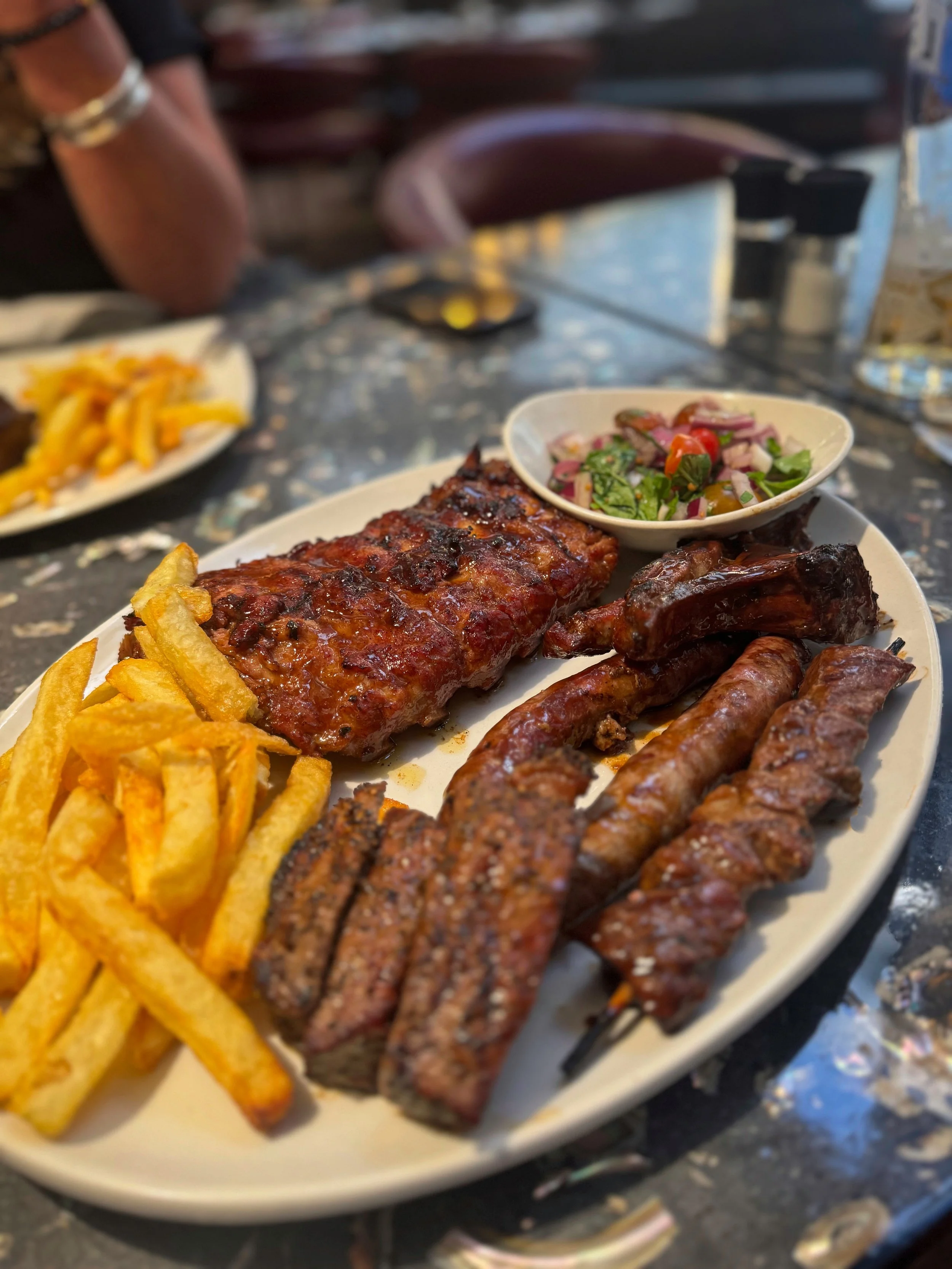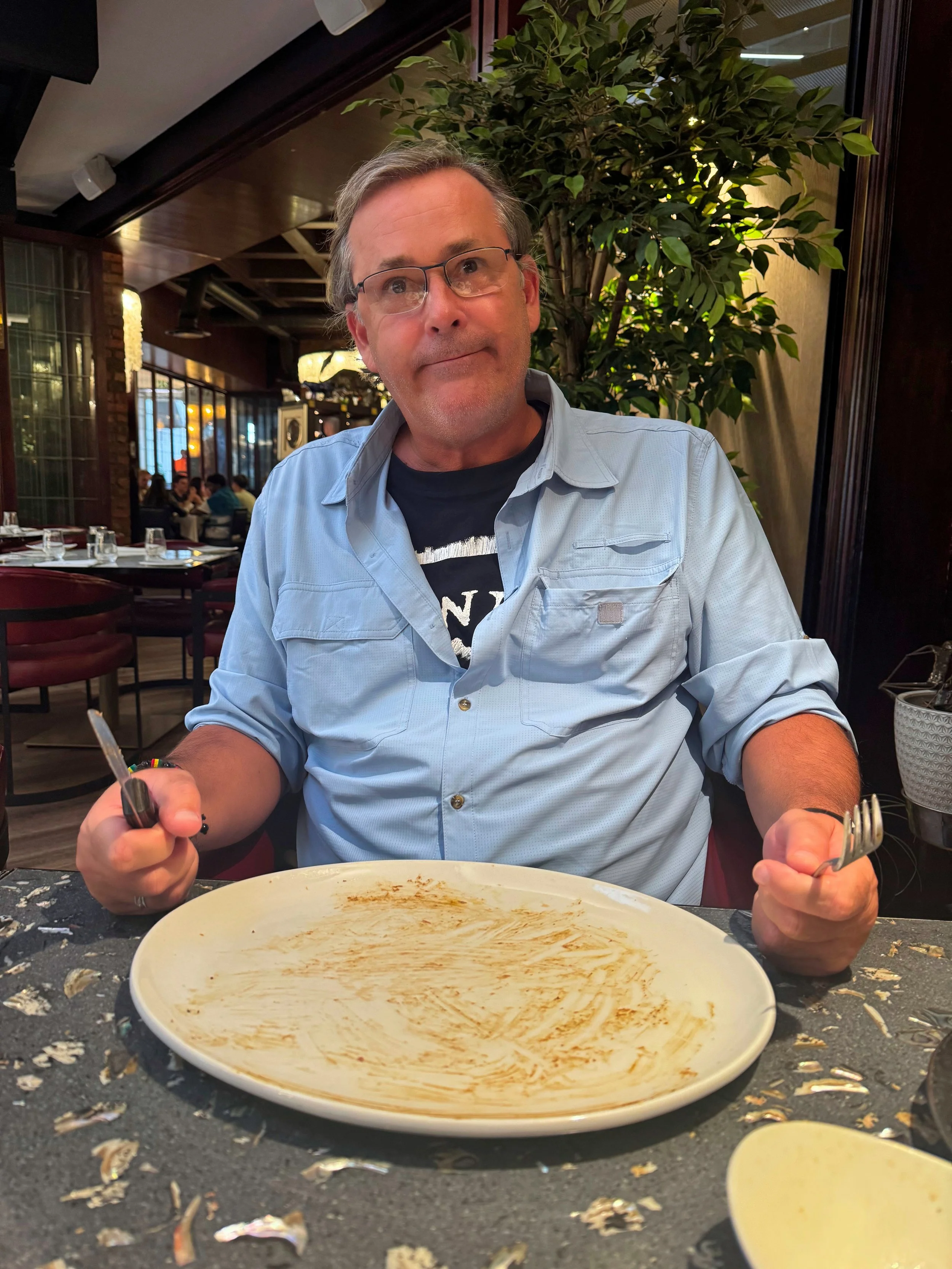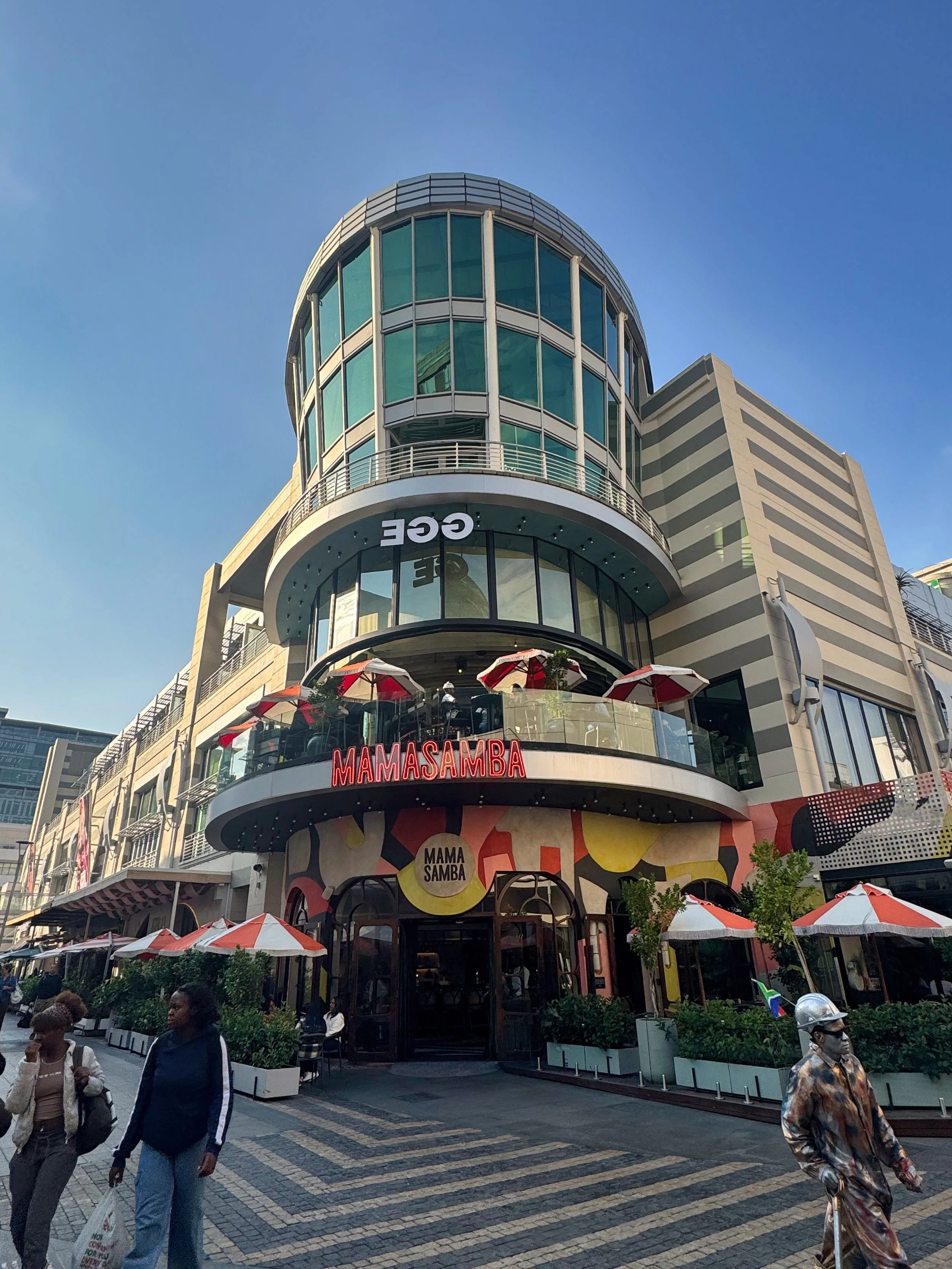Sunset II - Johannesburg
Our second day in South African started a little more civilised but with an equally impressive sunrise and breakfast. Today we would be visiting the nearby township of Soweto and earlier booked a 1/2 day tour with Viator who always have some great options in most cities. With luck again on our side, our guide arrived to the hotel on his own as we were his only guests for the day so essentially had a private tour to ourselves. Bonus.
Soweto is an apartheid township bordering Joburg’s mining belt in the south deriving its name from the english syllabic abbreviation for South Western Townships. Following the gold rush boom in the late 1880’s the government of the South African Republic purchased the south-eastern portion of the farm Braamfontein to accommodate the many races and nationalities flocking to this part of the Zuid-Afrikaansche Republiek seeking their fortunes. Crude shacks emerged built with bricks made from the local clay and soon after other working poor, coloureds, Indians and Africans settled there. The government, seeking to differentiate the white working class laid out new suburbs for the Burghers (whites), Coolies (Indians), Malays (coloureds) and black Africans leading to the emergence of Soweto in the 1930’s, after separating the blacks to create black "townships" legitimised under the infamous Urban Areas Act of 1923. The name Soweto was first used in 1963 and within a short period of time following the 1976 uprising of students became internationally known.
Our wonderful guide for the day, Thomas, began his commentary before we had even left the CBD and after a short 30 minute drive we’d already learnt so much about the infamous township. Our first stop was at the distinctive FNB Stadium located in Nasrec bordering Soweto and Johannesburg. First built in 1987, the stadium underwent a major upgrade for the 2010 FIFA World Cup with a new design inspired by the shape of an African pot, the Calabash. It is the pride of South Africa and actually very impressive to see first hand but in true class distinction the circling road affecting the border between the two suburbs has one side significantly more maintained than the other.
With an infamous history and damning images of the shanty town going global in the early 1980’s, the government is now slowly redeveloping the area which was clearly evident the further we drove through the township. Thomas pointed out various new estates not dissimilar to those found in certain parts of Australia, less affluent estates again commonly found in many inner city areas and then what we would call “housing commission” houses. These were no more than long rectangular blocks divided into 5 metre lengths with 2 windows and a door constituting a home. Electricity had been cut off years ago but the resilient occupants hacked into the supply grid so many times the government doesn’t bother to remedy the issue anymore. Water is sourced from a nearby public pump with a procession of locals carrying fresh loads back to their 5 metres concrete blocks. It was rather sad really but clearly evident those accommodations were slowly making way for more hospitable environs.
The most confronting accommodations however were those most would identify with Soweto. Shacks etched into the earth with rusty corrugated iron sheets and any other manner of materials easily sourced. These were the images beamed around the world and how most see or remember Soweto. Thomas took us to a small “village” within this shanty town to meet some locals and visit their thriving community. While the ground was muddy and the shacks dusty, with endless lines of daily washing and chickens running a muck, the people could not of have been more friendlier or accommodating in showing us through their little part of the world.
At the kindergarten the children sang us songs and marvelled at the photos we took of them. Lyndall became Princess Leia in the Ewok Village when dozens of beautifully enthusiastic children clambered around to stroke her unusual long blonde locks. To them that was more impressive than a watch or iPhone or anything else we could have shown them. In this little world isolated from the greater, uglier one outside, these children sang and danced and laughed with what little they had and the smiles we gave in return. It was a very humbling experience made even more special by their carers and the affection and warmth they extended to us both.
On our exit we were, as is usually the case, invited to peruse the local handicrafts with perhaps an objective to purchase. Not normally our jam, this was one occasion Fatpap felt compelled to contribute knowing full well all proceeds would go directly into the small community. It was however the unveiling of a wireless EFTPOS machine that took us more by surprise.
Thomas furthered our tour in the now very much warming day with our next stop being the world famous and most instagramable Orlando Towers. The Orlando Power Station was commissioned at the end of the Second World War and served Johannesburgs electricity needs with its location selected due to the proximity of a water supply for coolant and railway line for delivery of coal.
The station was decommissioned in 1998 after 56 years of service and in 2006 work began on transforming the site into an entertainment and business centre. The two cooling towers are now a prominent landmark in Soweto and can be seen from most vantage points throughout the township. Both are painted, one as an advertising billboard the other displaying the largest mural painting in South Africa and both are joined by a gangway used for bungee and BASE jumping. While the Orlando Towers will never remotely compare to the one leaning in Pisa or that of Eiffel, there was something very special about these two disused concrete behemoths making them equally impressive in their own South African way.
For Fatpap, Soweto was a major highlight he’d been looking forward to as part of this African odyssey and everything thus far had been as expected. The true impact though came on the crest of hill where he frantically asked Thomas to stop the car. Below was a vista of tin shacks and makeshift homes which was macabrely the exact image he was looking to photograph. Not to make fun of the inhabitants nor take advantage of their plight, more to replicate an image he’d had in his mind since the late 1970’s, an image that was heart wrenching to witness but heartening to learn is now disappearing. En route to our next point of interest we stopped at a roadside souvenir stand where local ladies plied the most vibrant handmade artefacts. Fatpap was needless to say pretty happy to find a hand painted T-Shirt he liked fitting his colossal measurements.
Soweto shanty town, South Africa
Soweto came to the world's attention on 16 June 1976 when a peaceful protest erupted over the government's policy to enforce all education in the Afrikaans language rather than various native ones. After a standoff and intimidation by guard dogs invoking some retaliatory rock throwing, police opened fire on 10,000 students marching from Naledi High School in Vilakazi Street. Mayhem ensued and it is estimated over 600 students were shot and killed as a result. The youngest, and most famous was Hector Pietersen who became the symbol of youth in the country for decades to come. He was only 13 at the time and iconically captured by Sam Nzima, a photojournalist for The World newspaper whose image shocked the world and shone a spotlight on the South African’s apartheid regime.
Hector Pieterson, June 16th 1976
The impact of the Soweto protests reverberated throughout the country and across the globe bringing in their aftermath economic and cultural sanctions from abroad. Political activists left the country to train for guerrilla resistance and Soweto and other townships became the stage for violent state repression. A museum and memorial located two blocks from the massacre site has been established and named in honour of Pieterson and covers the events of the anti-apartheid Soweto uprisings. It is filled with chilling first hand accounts of the events of the day together with scores of images and facts about the suppression leading to the uprisings. What was more uplifting though were the hundred of school children dressed so eloquently in their school uniforms visiting the site and enthusiastically learning of the sacrifices their predecessors made for the very freedom they now so rightfully enjoy. A 50 year circle.
Our last stop was just a little further down Vilakazi Street to the homes of Nelson Mandela and Archbishop Desmond Tutu. Both sites were once domiciles to their respective tenants if for only part of their lives, however it does boast the prestigious title of being the only street in the world to produce two Nobel Peace Prize laureates.
Soweto exceeded all expectations producing both joy and sadness in a matter of only hours. Thomas delivered us home early afternoon and we immediately headed to a steakhouse recommended by a future travel companion. Located just around the corner from the hotel in the newly refurbished Rosebank Mall among rows of outdoor eateries was apparently the best South African Braai in, well, South Africa. Lyndall opted astutely for a 300gm steak while Fatpap gluttonously ordered the works. Ribs, steak, sausages, kebabs and lamb chops served with a side of fries and salad. You all know the immediate result and of course that to come in a matter of hours, but Michelle was right, it was the best South African Braai. Oh, he also finished Lyndall’s too. We had a few more beers back at the hotel then a little afternoon rest, for tonight we would be meeting our companions for the next 10 days and preparing to head north to Botswana in the morning.
The tour briefing was as expected, the do’s and dont’s for the next 10 days, insurance details and a group kitty collection. Most of us then went out for dinner and a few drinks to get to know one another and sus out who to avoid. Most voted for Fatpap. With an eclectic bunch of solos and couples from both Australia and around the world, the night augured well proving the journey ahead would be both adventurous and a whole bunch of fun.
The Intrepid Okavango Delta Crew

